

Peter F. Gallagher is the World’s #1 Ranked Change Management Thought Leader, a top 7 Global Leadership Guru, and a 15-time author known internationally for advancing the Leadership of Change® the discipline that transforms leadership from managing the present to serving the possible.
• For over 35 years, Peter has worked in more than 35 countries, advising boards, CEOs, and senior leadership teams from some of the world’s most successful organisations.
• He helps leaders align, lead, and deliver measurable transformation by embracing their responsibility to articulate the vision, model the new way, and intervene to ensure sustainable change.
Leadership Philosophy:
His philosophy is simple yet provocative: Change waits for no leader. All leadership is about change and improvement. If you are not leading these, you are a manager! Peter’s mission is to redefine leadership as the act of influencing people through vision to embrace change and deliver continuous improvement, a human responsibility that reflects our evolutionary drive to improve and adapt. Leadership is the human expression of our evolutionary arc, a force that shapes possibility rather than preserves comfort. Management serves the present; leadership dares to serve what does not yet exist.
Global Recognition:
• Thinkers360: #1 Global Thought Leader & Influencer on Change Management (2020–2025).
• Global Gurus: Top 7 Global Leadership Guru (2024).
• leadersHum: #1 Change Management Guru to Follow (2022); Top 200 Biggest Voices in Leadership (2022 & 2023).
Qualifications:
• MBA (Distinction), Robert Gordon University.
• One of the global ‘First 500’ Certified Change Management Professionals™ (ACMP®).
• Former ASQ Certified Manager of Quality; held three PMI certifications.
Author (15x):
Peter has written extensively on the Leadership of Change® and authored the Change Management Body of Knowledge (CMBoK) series. His framework explores the complete leadership journey, from vision and leadership to adoption, behaviour change, and sponsorship — alongside his critique of the change profession. His workshop manuals use interactive, dynamic business change simulations that enable organisational leaders to develop change leadership knowledge, skills, and self-awareness through experiential learning and gamified case studies.
Amazon Author Page:
https://amzn.to/3rxIVjj
Previous Roles & Memberships:
• Former Board Member, Association of Change Management Professionals® (ACMP®) Global & UK.
• Member, Virtual Speakers Association International (VSAI).
Contact Details:
E-mail: peter.gallagher@a2B.consulting
Speaking: https://www.peterfgallagher.com
Consulting: https://www.a2b.consulting
Available For: Advising, Consulting, Influencing, Speaking
Travels From: London, UK
Speaking Topics: Organisational Change Leadership and Change Leadership Alignment
| Peter F. Gallagher | Points |
|---|---|
| Academic | 85 |
| Author | 1354 |
| Influencer | 158 |
| Speaker | 374 |
| Entrepreneur | 367 |
| Total | 2338 |
Points based upon Thinkers360 patent-pending algorithm.
Tags: Business Strategy, Change Management, Leadership
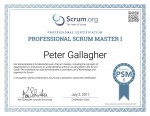 Professional Scrum Master I
Professional Scrum Master I
Tags: Leadership, Change Management, Business Strategy
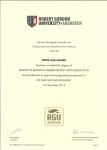 Masters in Business Administration (MBA) Distinction
Masters in Business Administration (MBA) Distinction
Tags: Business Strategy, Change Management, Leadership
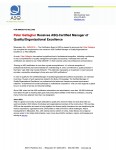 Manager of Quality/Organizational Excellence Certification - CMQ/OE
Manager of Quality/Organizational Excellence Certification - CMQ/OE
Tags: Business Strategy, Change Management, Leadership
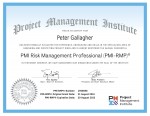 PMI Risk Management Professional (PMI-RMP)
PMI Risk Management Professional (PMI-RMP)
Tags: Leadership, Change Management, Business Strategy
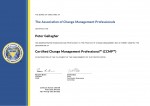 Certified Change Management Professional (CCMP)
Certified Change Management Professional (CCMP)
Tags: Leadership, Change Management, Business Strategy
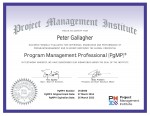 PMI Program Management Professional (PgMP)
PMI Program Management Professional (PgMP)
Tags: Leadership, Change Management, Business Strategy
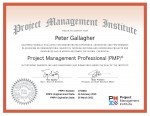 PMI Project Management Professional (PMP)
PMI Project Management Professional (PMP)
Tags: Leadership, Change Management, Business Strategy
 Diploma in Business Management Administration
Diploma in Business Management Administration
Tags: Business Strategy, Change Management, Leadership
 International Advisory Council Member - Human Health Education and Research Foundation
International Advisory Council Member - Human Health Education and Research Foundation
Tags: Leadership, Change Management, Business Strategy
 a2B Change Management Framework (a2BCMF) - Step #8: Develop New Skills and Behaviours
a2B Change Management Framework (a2BCMF) - Step #8: Develop New Skills and Behaviours
Tags: Business Strategy, Change Management, Leadership
 Protagonist #9. Professional Bodies: Change Management Charade
Protagonist #9. Professional Bodies: Change Management Charade
Tags: Business Strategy, Change Management, Leadership
 a2B Change Management Framework (a2BCMF) - Step #5: Communicate the Change Writer: Peter F Gallagher
a2B Change Management Framework (a2BCMF) - Step #5: Communicate the Change Writer: Peter F Gallagher
Tags: Business Strategy, Change Management, Leadership
 Friday’s Change Reflection Quote - Leadership of Change - Change Leaders Maintain Strategic Direction Amid Opposition
Friday’s Change Reflection Quote - Leadership of Change - Change Leaders Maintain Strategic Direction Amid Opposition
Tags: Business Strategy, Change Management, Leadership
 Protagonist #5. Recruiters: Change Management Charade
Protagonist #5. Recruiters: Change Management Charade
Tags: Business Strategy, Change Management, Leadership
 Friday’s Change Reflection Quote - Leadership of Change - Change Leaders Drive Adaptive Innovation
Friday’s Change Reflection Quote - Leadership of Change - Change Leaders Drive Adaptive Innovation
Tags: Business Strategy, Change Management, Leadership
 Protagonist #4. Strategy and Management Consultants: Change Management Charade
Protagonist #4. Strategy and Management Consultants: Change Management Charade
Tags: Business Strategy, Change Management, Leadership
 a2B Change Management Framework (a2BCMF) - Step #2: Secure Sponsorship and Resources
a2B Change Management Framework (a2BCMF) - Step #2: Secure Sponsorship and Resources
Tags: Business Strategy, Change Management, Leadership
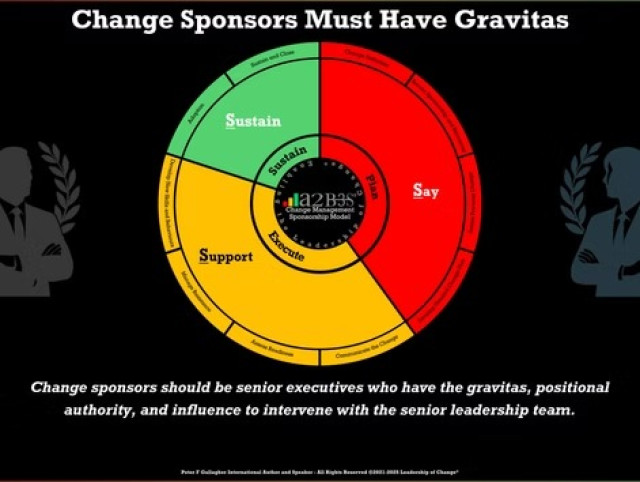 Change Sponsors Must Have Gravitas
Change Sponsors Must Have Gravitas
Tags: Business Strategy, Change Management, Leadership
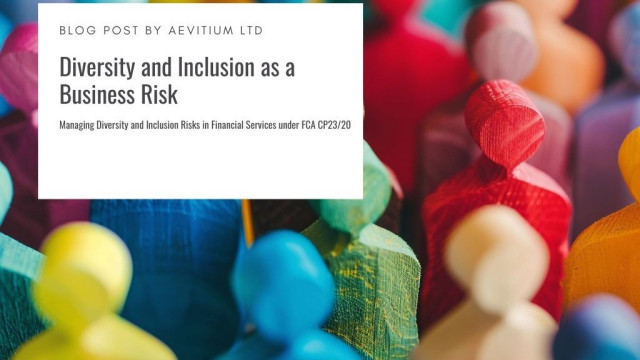 Protagonist #2. Change Sponsor: Change Management Charade
Protagonist #2. Change Sponsor: Change Management Charade
Tags: Business Strategy, Change Management, Leadership
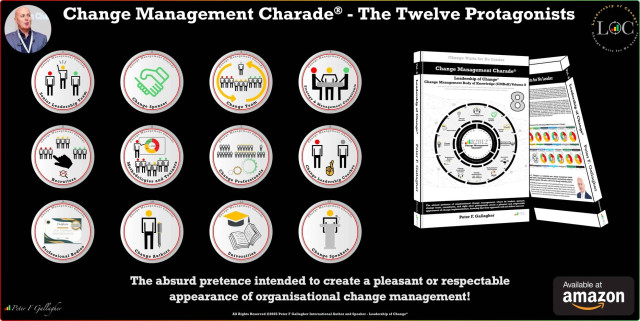 The Twelve Protagonists: Change Management Charade - Leadership of Change Volume 8
The Twelve Protagonists: Change Management Charade - Leadership of Change Volume 8
Tags: Business Strategy, Change Management, Leadership
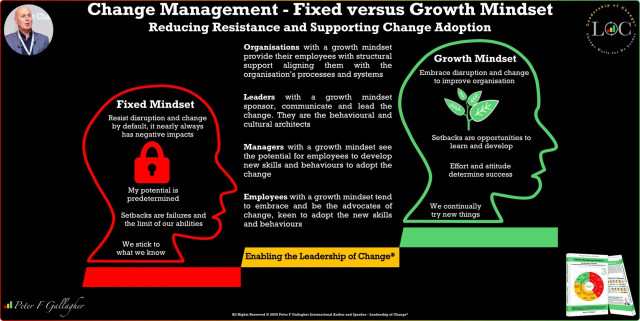 Change Management - Fixed Verses Growth Mindset
Change Management - Fixed Verses Growth Mindset
Tags: Business Strategy, Change Management, Leadership
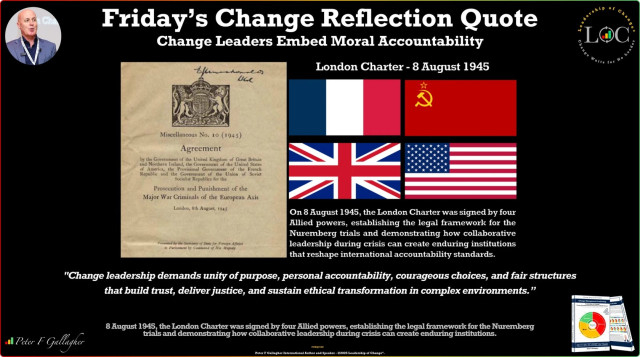 Friday’s Change Reflection Quote - Leadership of Change - Change Leaders Embed Moral Accountability
Friday’s Change Reflection Quote - Leadership of Change - Change Leaders Embed Moral Accountability
Tags: Business Strategy, Change Management, Leadership
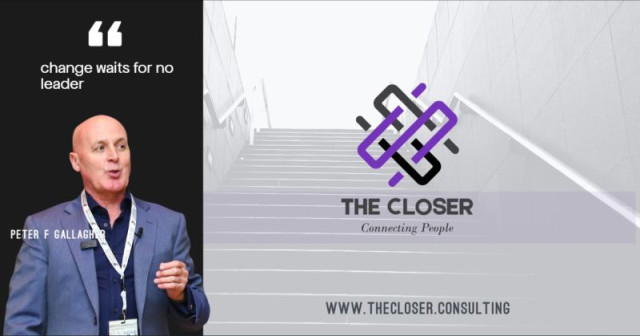 Peter F Gallagher Now Listed - The Closer Speakers' Consultancy Ltd.
Peter F Gallagher Now Listed - The Closer Speakers' Consultancy Ltd.
Tags: Business Strategy, Change Management, Leadership
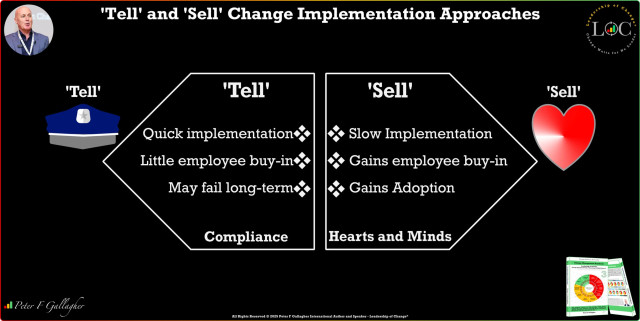 Change Implementation Approaches - ‘Tell’ versus ‘Sell’
Change Implementation Approaches - ‘Tell’ versus ‘Sell’
Tags: Business Strategy, Change Management, Leadership
 Friday’s Change Reflection Quote - Leadership of Change - Deference Ends Where Change Leaders Begin
Friday’s Change Reflection Quote - Leadership of Change - Deference Ends Where Change Leaders Begin
Tags: Business Strategy, Change Management, Leadership
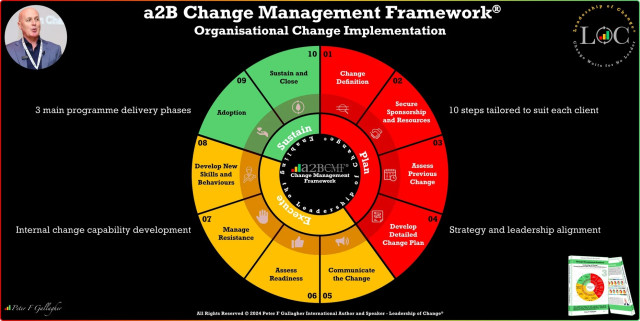 a2B Change Management Framework (a2BCMF) – Video Overview
a2B Change Management Framework (a2BCMF) – Video Overview
Tags: Business Strategy, Change Management, Leadership
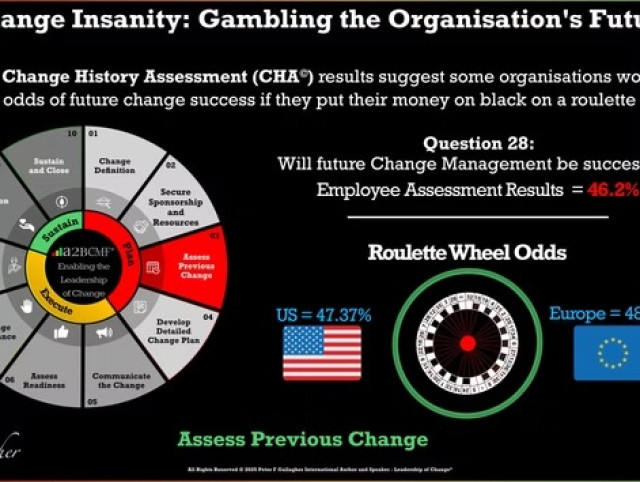 Change Insanity: Gambling the Organisation's Future
Change Insanity: Gambling the Organisation's Future
Tags: Business Strategy, Change Management, Leadership
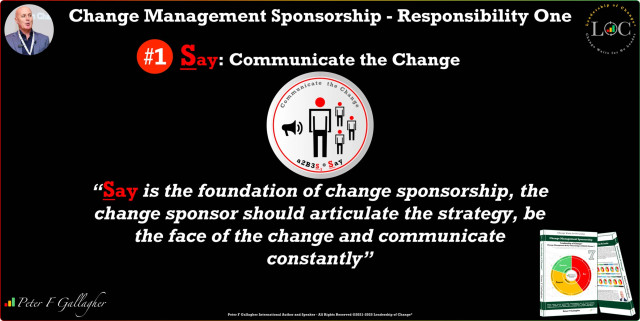 Change Management Sponsorship - Responsibility One: Say
Change Management Sponsorship - Responsibility One: Say
Tags: Business Strategy, Change Management, Leadership
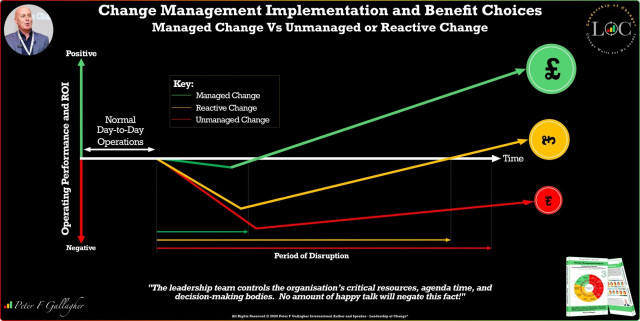 Change Management Implementation and Benefit Choices - Managed Change Vs Unmanaged or Reactive Change
Change Management Implementation and Benefit Choices - Managed Change Vs Unmanaged or Reactive Change
Tags: Business Strategy, Change Management, Leadership
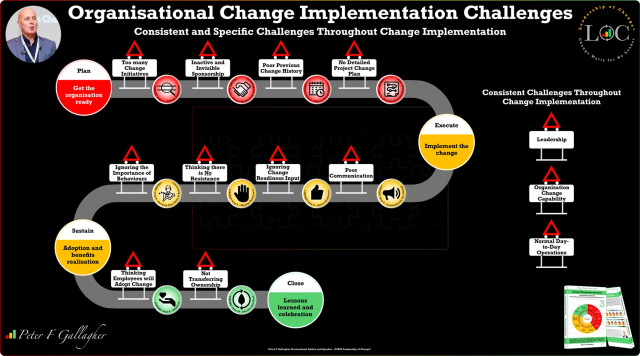 Organisational Change Implementation Challenges
Organisational Change Implementation Challenges
Tags: Business Strategy, Change Management, Leadership
 Change Leadership Versus Change Management Versus Employee Adoption
Change Leadership Versus Change Management Versus Employee Adoption
Tags: Business Strategy, Change Management, Leadership
 Friday’s Change Reflection Quote - Leadership of Change - Leaders Enable Peaceful Dispute Resolution
Friday’s Change Reflection Quote - Leadership of Change - Leaders Enable Peaceful Dispute Resolution
Tags: Business Strategy, Change Management, Leadership
 Change Readiness Assessment (CRA) - Organisational Change Implementation Preparation
Change Readiness Assessment (CRA) - Organisational Change Implementation Preparation
Tags: Business Strategy, Change Management, Leadership
 Change Management - Organisational Change Capacity and Workload
Change Management - Organisational Change Capacity and Workload
Tags: Business Strategy, Change Management, Leadership
 ACMP Board of Directors
ACMP Board of Directors
Tags: Business Strategy, Change Management, Leadership
Tags: Business Strategy, Change Management, Leadership
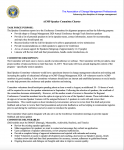 ACMP Speaker Committee
ACMP Speaker Committee
Tags: Business Strategy, Change Management, Leadership
Tags: Business Strategy, Change Management, Leadership
 UK Board Member (Officer) - JT LIMITED
UK Board Member (Officer) - JT LIMITED
Tags: Business Strategy, Change Management, Leadership
 Change Management Charade - Leadership of Change Volume 8 (Leadership of Change - Change Management Body of Knowledge
Change Management Charade - Leadership of Change Volume 8 (Leadership of Change - Change Management Body of Knowledge
Tags: Change Management, Leadership
 Change Management Sponsorship: Leadership of Change Volume 7
Change Management Sponsorship: Leadership of Change Volume 7
Tags: Leadership, Change Management, Business Strategy
 Change Management Behaviour: Leadership of Change Volume 6
Change Management Behaviour: Leadership of Change Volume 6
Tags: Leadership, Change Management, Business Strategy
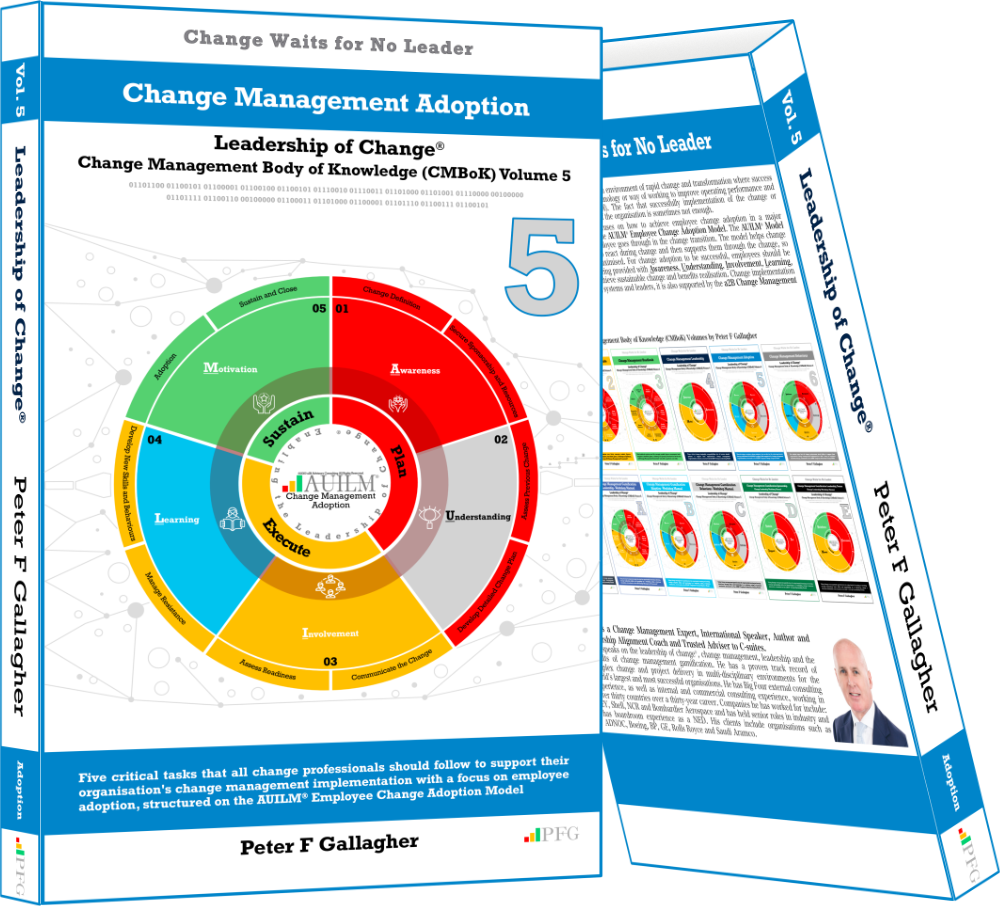 Change Management Adoption: Leadership of Change Volume 5
Change Management Adoption: Leadership of Change Volume 5
Tags: Business Strategy, Change Management, Leadership
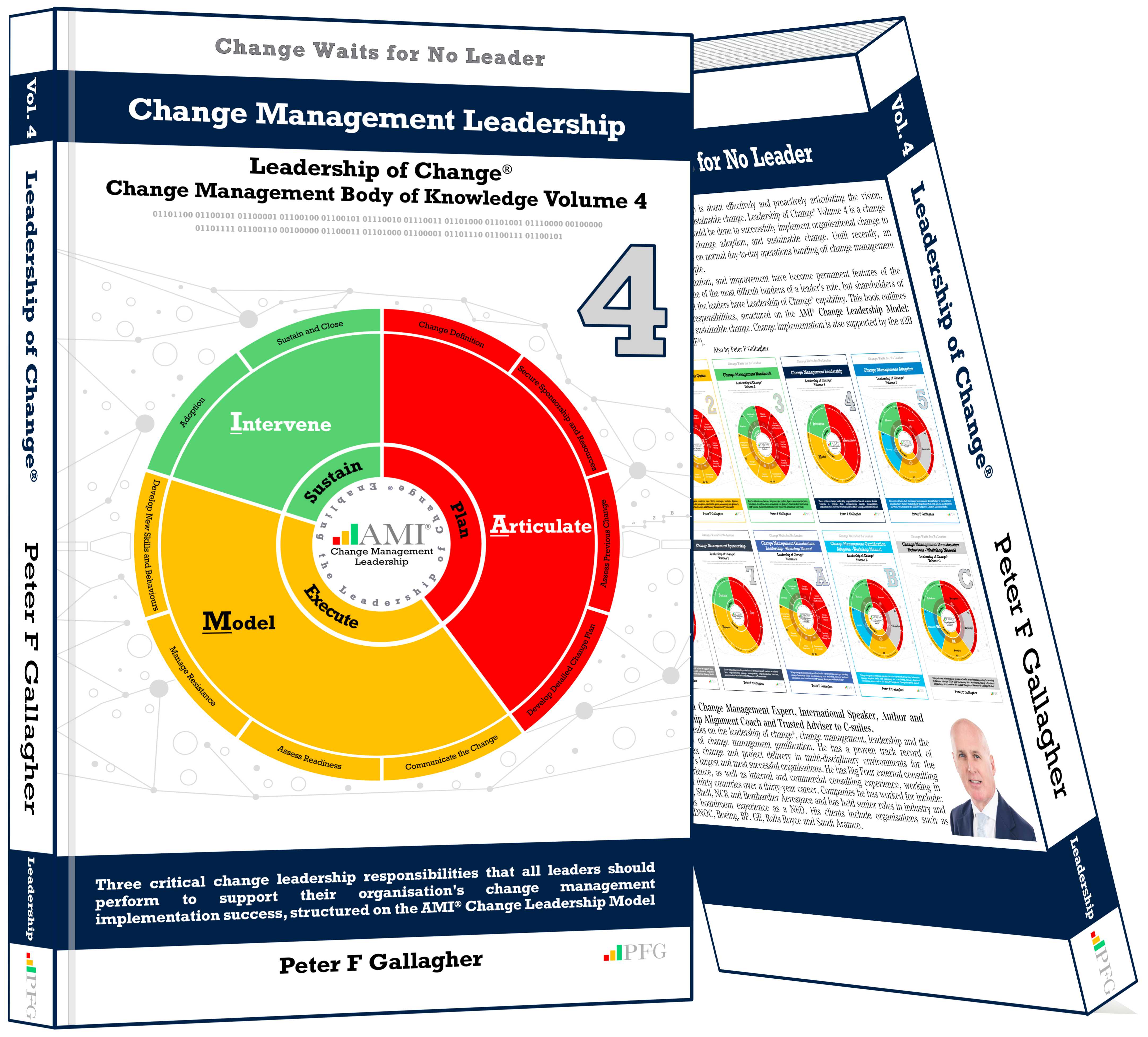 Change Management Leadership: Leadership of Change - Volume 4
Change Management Leadership: Leadership of Change - Volume 4
Tags: Business Strategy, Change Management, Leadership
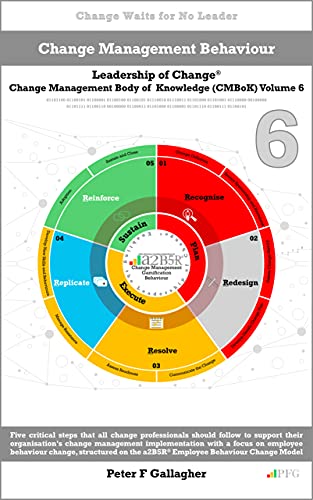 Change Management Behaviour: Leadership of Change Volume 6 (Leadership of Change - Change Management Body of Knowledge (CMBoK) Volumes)
Change Management Behaviour: Leadership of Change Volume 6 (Leadership of Change - Change Management Body of Knowledge (CMBoK) Volumes)
Tags: Leadership, Change Management
 Change Management Adoption: Leadership of Change Volume 5
Change Management Adoption: Leadership of Change Volume 5
Tags: Leadership, Change Management, Business Strategy
 Change Management Gamification Adoption: Leadership of Change Volume B
Change Management Gamification Adoption: Leadership of Change Volume B
Tags: Business Strategy, Change Management, Leadership
 Change Management Gamification Leadership - Leadership of Change Volume A
Change Management Gamification Leadership - Leadership of Change Volume A
Tags: Leadership, Change Management, Business Strategy
 Change Management Handbook - Leadership of Change Volume 3
Change Management Handbook - Leadership of Change Volume 3
Tags: Leadership, Change Management, Business Strategy
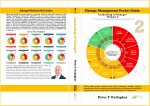 Change Management Pocket Guide - Leadership of Change Volume 2
Change Management Pocket Guide - Leadership of Change Volume 2
Tags: Business Strategy, Change Management, Leadership
 Change Management Fables - Leadership of Change Volume 1
Change Management Fables - Leadership of Change Volume 1
Tags: Business Strategy, Change Management, Leadership
 Change Management Handbook
3.3.3 The Importance of Assessing Previous Change
Change Management Handbook
3.3.3 The Importance of Assessing Previous Change
Tags: Leadership, Change Management, Business Strategy
 Coming Summer 2024 - Change Management Charade - Leadership of Change Volume 8
Coming Summer 2024 - Change Management Charade - Leadership of Change Volume 8
Tags: Business Strategy, Change Management, Leadership
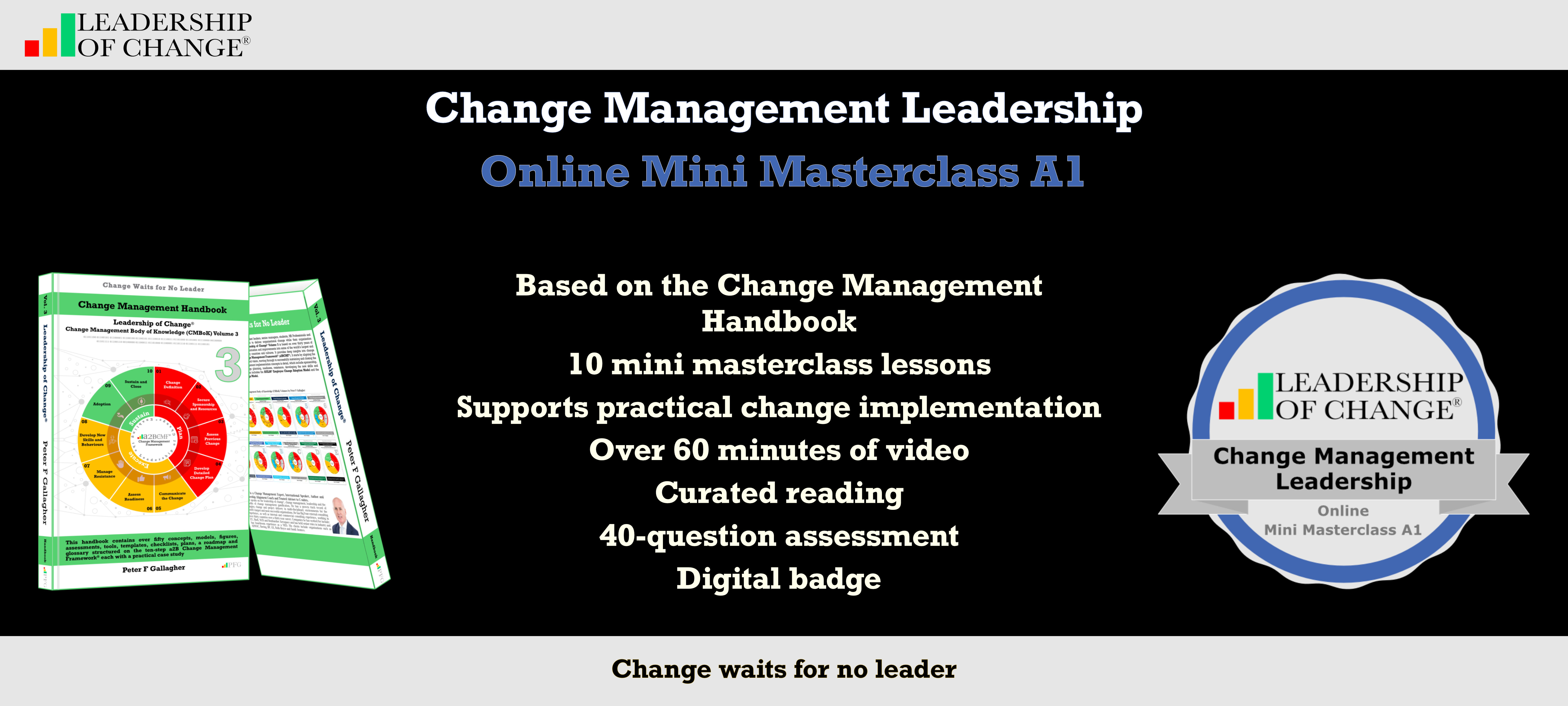 Change Management Leadership - Online Mini Masterclass A1
Change Management Leadership - Online Mini Masterclass A1
Tags: Business Strategy, Change Management, Leadership
Tags: Business Strategy, Change Management, Leadership
Tags: Business Strategy, Change Management, Leadership
 Change Management Glossary
Change Management Glossary
Tags: Business Strategy, Change Management, Leadership
Tags: Business Strategy, Change Management, Leadership
 Change Management Sponsorship: Leadership of Change Volume 7
Change Management Sponsorship: Leadership of Change Volume 7
Tags: Business Strategy, Change Management, Leadership
 Change Management Behaviour: Leadership of Change Volume 6
Change Management Behaviour: Leadership of Change Volume 6
Tags: Business Strategy, Change Management, Leadership
 Change Management Leadership - Leadership of Change Volume 4
Change Management Leadership - Leadership of Change Volume 4
Tags: Business Strategy, Change Management, Leadership
 Change Management Handbook: Leadership of Change Volume 3
Change Management Handbook: Leadership of Change Volume 3
Tags: Business Strategy, Change Management, Leadership
 Change Management Pocket Guide: Leadership of Change Volume 2
Change Management Pocket Guide: Leadership of Change Volume 2
Tags: Business Strategy, Change Management, Leadership
 Change Management Fables: Leadership of Change Volume 1
Change Management Fables: Leadership of Change Volume 1
Tags: Business Strategy, Change Management, Leadership
 a2B Advisory Consulting
a2B Advisory Consulting
Tags: Leadership, Change Management, Business Strategy
Tags: Business Strategy, Change Management, Leadership
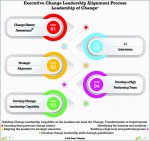 Change Leadership Alignment Process
Change Leadership Alignment Process
Tags: Business Strategy, Change Management, Leadership
 Change History Assessment (CHA)
Change History Assessment (CHA)
Tags: Business Strategy, Change Management, Leadership
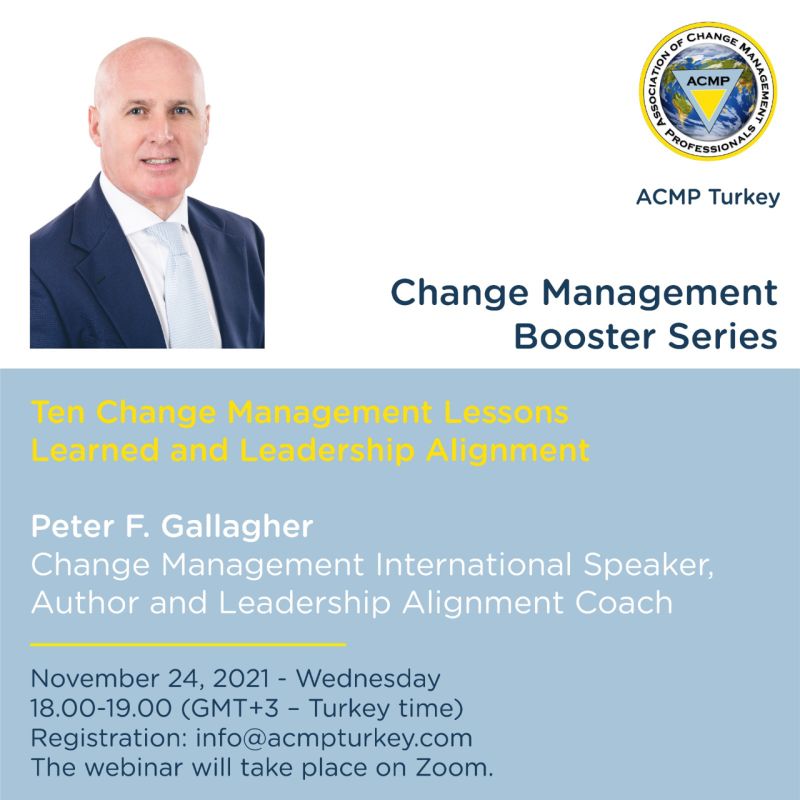 ACMP Turkey: 24th Nov 2021 - Peter F Gallagher Speaking on the Leadership of Change
ACMP Turkey: 24th Nov 2021 - Peter F Gallagher Speaking on the Leadership of Change
Tags: Business Strategy, Change Management, Leadership
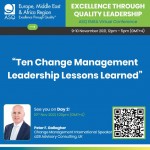 ASQ EMEA Virtual Conference: Nov 2021 - Peter F Gallagher Speaking on Change Leadership Lessons
ASQ EMEA Virtual Conference: Nov 2021 - Peter F Gallagher Speaking on Change Leadership Lessons
Tags: Business Strategy, Change Management, Leadership
 ACMP East Coast Australia: Nov 2021 - Peter F Gallagher Speaking on the Leadership of Change
ACMP East Coast Australia: Nov 2021 - Peter F Gallagher Speaking on the Leadership of Change
Tags: Business Strategy, Change Management, Leadership
 Peter F Gallagher Speaking to UK Key Executives - Lean Leader Masterclass - Coventry, UK
Peter F Gallagher Speaking to UK Key Executives - Lean Leader Masterclass - Coventry, UK
Tags: Business Strategy, Change Management, Leadership
 Peter F Gallagher Speaking to UK Chief Executives - Lean Leader Masterclass - BirminghamLean Leader Masterclass - Leadership of Improvement Vistage Group CE5 - Birmingham – July 1 2021 Workshop Sessions 1. Change Disruption and 4IR 2. Strategic Planning 3. Lean Masterclass 4. Change Management
Peter F Gallagher Speaking to UK Chief Executives - Lean Leader Masterclass - BirminghamLean Leader Masterclass - Leadership of Improvement Vistage Group CE5 - Birmingham – July 1 2021 Workshop Sessions 1. Change Disruption and 4IR 2. Strategic Planning 3. Lean Masterclass 4. Change Management
Tags: Business Strategy, Change Management, Leadership
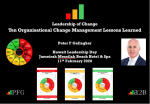 Leadership of Change - Ten Organisational Change Management Lessons Learned
Leadership of Change - Ten Organisational Change Management Lessons Learned
Tags: Leadership, Change Management, Business Strategy
 Leadership of Change: Three Change Management Lessons Learned
Leadership of Change: Three Change Management Lessons Learned
Tags: Leadership, Change Management, Business Strategy
 Leadership of Change: 10 Change Management Lessons Learned
Leadership of Change: 10 Change Management Lessons Learned
Tags: Leadership, Change Management, Business Strategy
 Peter F Gallagher Change Management Keynote - Edinburgh, UK
Peter F Gallagher Change Management Keynote - Edinburgh, UK
Tags: Business Strategy, Change Management, Leadership

Tags: Leadership, Change Management, Business Strategy
 Is your organization in need of transition? Well...
Is your organization in need of transition? Well...
Tags: Business Strategy, Change Management, Leadership
 Interview with Peter F Gallagher Britain - BestStartup.co.uk
Interview with Peter F Gallagher Britain - BestStartup.co.uk
Tags: Business Strategy, Change Management, Leadership
 Thinkers360 Thought Leader and Influencer Interview with Peter F Gallagher
Thinkers360 Thought Leader and Influencer Interview with Peter F Gallagher
Tags: Business Strategy, Change Management, Leadership

Tags: Leadership, Change Management, Business Strategy
 Inside Track Podcast - Episode #21 - Peter Gallagher
Inside Track Podcast - Episode #21 - Peter Gallagher
Tags: Business Strategy, Change Management, Leadership
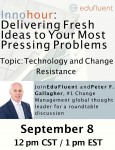 Innohour: Delivering Fresh Ideas to Your Most Pressing Problems
Innohour: Delivering Fresh Ideas to Your Most Pressing Problems
Tags: Business Strategy, Change Management, Leadership
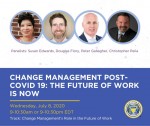 Change Management Post-COVID 19: The Future of Work is Now
Change Management Post-COVID 19: The Future of Work is Now
Tags: Leadership, Change Management, Business Strategy
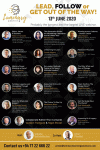 Lead, Follow or Get Out of the Way
Lead, Follow or Get Out of the Way
Tags: Leadership, Change Management, Business Strategy
Tags: Business Strategy, Change Management, Leadership
 Business Talk Radio - Interview with Peter F Gallagher
Business Talk Radio - Interview with Peter F Gallagher
Tags: Leadership, Change Management, Business Strategy
 Association of Change Management Professionals (ACMP) UK Chapter
Association of Change Management Professionals (ACMP) UK Chapter
Tags: Leadership, Change Management, Business Strategy
 American Society for Quality (ASQ)
American Society for Quality (ASQ)
Tags: Business Strategy, Change Management, Leadership
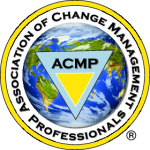 Association of Change Management Professionals (ACMP) UK Chapter
Association of Change Management Professionals (ACMP) UK Chapter
Tags: Business Strategy, Change Management, Leadership
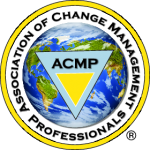 Association of Change Management Professionals (ACMP) UK Chapter
Association of Change Management Professionals (ACMP) UK Chapter
Tags: Business Strategy, Change Management, Leadership
 Project Management Institute, Inc Membership
Project Management Institute, Inc Membership
Tags: Business Strategy, Change Management, Leadership
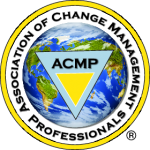 Association of Change Management Professionals (ACMP) UK Chapter
Association of Change Management Professionals (ACMP) UK Chapter
Tags: Business Strategy, Change Management, Leadership
 American Society for Quality (ASQ)
American Society for Quality (ASQ)
Tags: Business Strategy, Change Management, Leadership
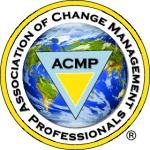 Association of Change Management Professionals (ACMP) UK Chapter
Association of Change Management Professionals (ACMP) UK Chapter
Tags: Business Strategy, Change Management, Leadership
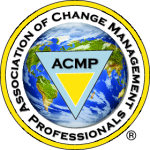 Association of Change Management Professionals (ACMP) Global & UAE
Association of Change Management Professionals (ACMP) Global & UAE
Tags: Business Strategy, Change Management, Leadership
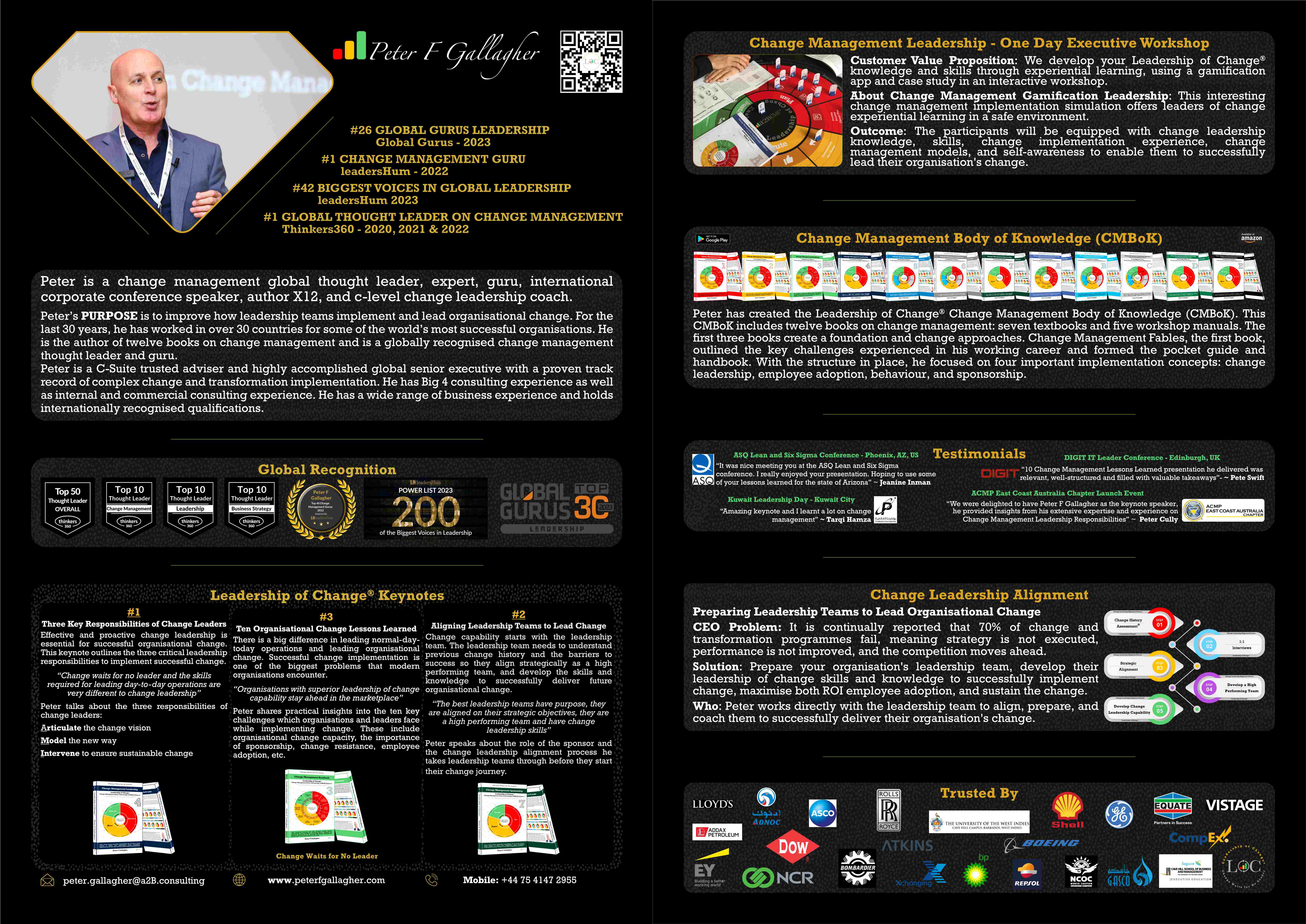 Peter F Gallagher's Speaker Bio with Keynotes - 2023 Update
Peter F Gallagher's Speaker Bio with Keynotes - 2023 Update
Tags: Business Strategy, Change Management, Leadership
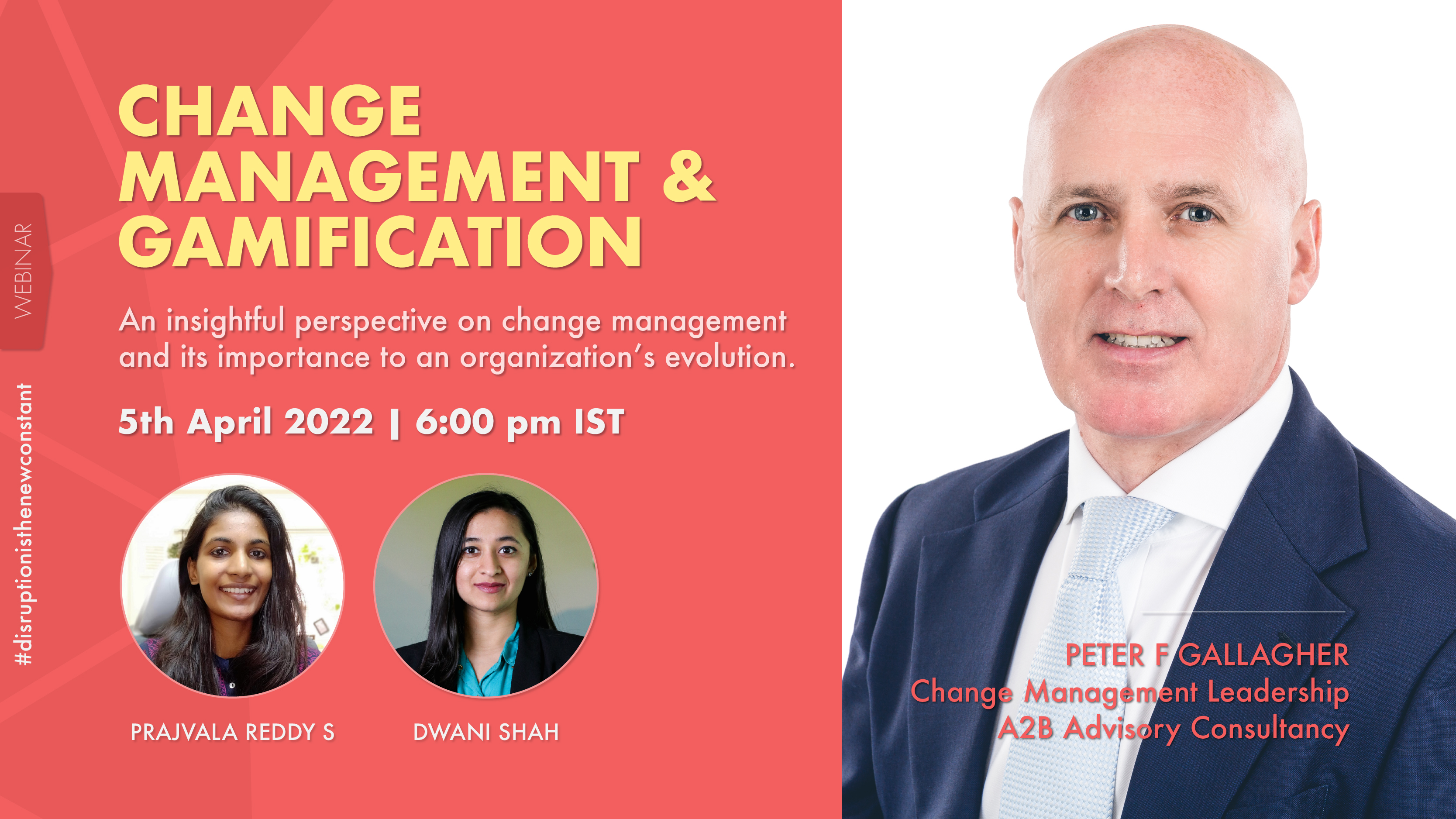 Peter F Gallagher Speaking to Zyeta on the Leadership of Change - Change Management & Gamification
Peter F Gallagher Speaking to Zyeta on the Leadership of Change - Change Management & Gamification
Tags: Business Strategy, Change Management, Leadership
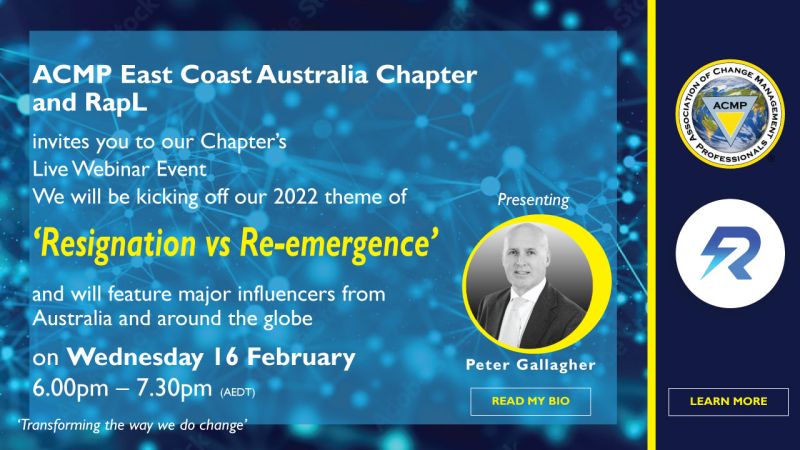 Resignation vs Re-emergence Round Table Discussion - ACMP East Coast Australia Chapter
Resignation vs Re-emergence Round Table Discussion - ACMP East Coast Australia Chapter
Tags: Business Strategy, Change Management, Leadership
 Kuwait Leadership Day Panel Discussion 2020
Kuwait Leadership Day Panel Discussion 2020
Tags: Business Strategy, Change Management, Leadership
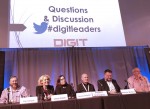 DIGIT IT Leaders Conference
DIGIT IT Leaders Conference
Tags: Leadership, Change Management, Business Strategy
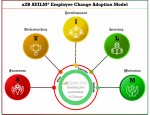 a2B AUILM Model: Employee Adoption Lifecycle
a2B AUILM Model: Employee Adoption Lifecycle
Tags: Leadership, Change Management, Business Strategy
 a2B Change Management Framework (a2BCMF)
a2B Change Management Framework (a2BCMF)
Tags: Leadership, Change Management, Business Strategy

Tags: Business Strategy, Change Management, Leadership

Tags: Business Strategy, Change Management, Leadership

Tags: Business Strategy, Change Management, Leadership

Tags: Business Strategy, Change Management, Leadership

Tags: Business Strategy, Change Management, Leadership

Tags: Business Strategy, Change Management, Leadership

Tags: Business Strategy, Change Management, Leadership

Tags: Business Strategy, Change Management, Leadership

Tags: Business Strategy, Change Management, Leadership

Tags: Business Strategy, Change Management, Leadership

Tags: Business Strategy, Change Management, Leadership

Tags: Business Strategy, Change Management, Leadership

Tags: Business Strategy, Change Management, Leadership

Tags: Business Strategy, Change Management, Leadership

Tags: Business Strategy, Change Management, Leadership

Tags: Business Strategy, Change Management, Leadership

Tags: Business Strategy, Change Management, Leadership
 a2B Change Management Framework (a2BCMF) - Step #8: Developing New Skills and Behaviours
a2B Change Management Framework (a2BCMF) - Step #8: Developing New Skills and Behaviours
Tags: Business Strategy, Change Management, Leadership
 Change Management Charade - Leadership of Change Volume 8 - October 21, 2024 Paperback Version
Change Management Charade - Leadership of Change Volume 8 - October 21, 2024 Paperback Version
Tags: Business Strategy, Change Management, Leadership

Tags: Business Strategy, Change Management, Leadership
 Friday’s Change Reflection Quote - Leadership of Change - Change Leaders Secure Influential Coalitions
Friday’s Change Reflection Quote - Leadership of Change - Change Leaders Secure Influential Coalitions
Tags: Business Strategy, Change Management, Leadership

Tags: Business Strategy, Change Management, Leadership

Tags: Business Strategy, Change Management, Leadership

Tags: Business Strategy, Change Management, Leadership

Tags: Business Strategy, Change Management, Leadership
 Change Employee Behavior - Internet pillar
Change Employee Behavior - Internet pillar
Tags: Change Management
 Continuous Never-Ending Change and Improvement’ (CNECI) - 16 Personalities
Continuous Never-Ending Change and Improvement’ (CNECI) - 16 Personalities
Tags: Change Management
 Employee Engagement and Collaboration - Monitask
Employee Engagement and Collaboration - Monitask
Tags: Change Management
 Change Leadership Alignment Question Set - CFO Systems
Change Leadership Alignment Question Set - CFO Systems
Tags: Change Management
 Human Health Education and Research Foundation (HHERF) Change Leadership Quote
Human Health Education and Research Foundation (HHERF) Change Leadership Quote
Tags: Change Management, Education
 IT Modernization 2021, Part 2: 4 steps to get the job done
IT Modernization 2021, Part 2: 4 steps to get the job done
Tags: Change Management
 Change Leadership Quote - Peter F Gallagher
Change Leadership Quote - Peter F Gallagher
Tags: Change Management
 Change Management - Employee Change Behaviour Quote
Change Management - Employee Change Behaviour Quote
Tags: Change Management
 Change Management Behaviours Quote
Change Management Behaviours Quote
Tags: Change Management
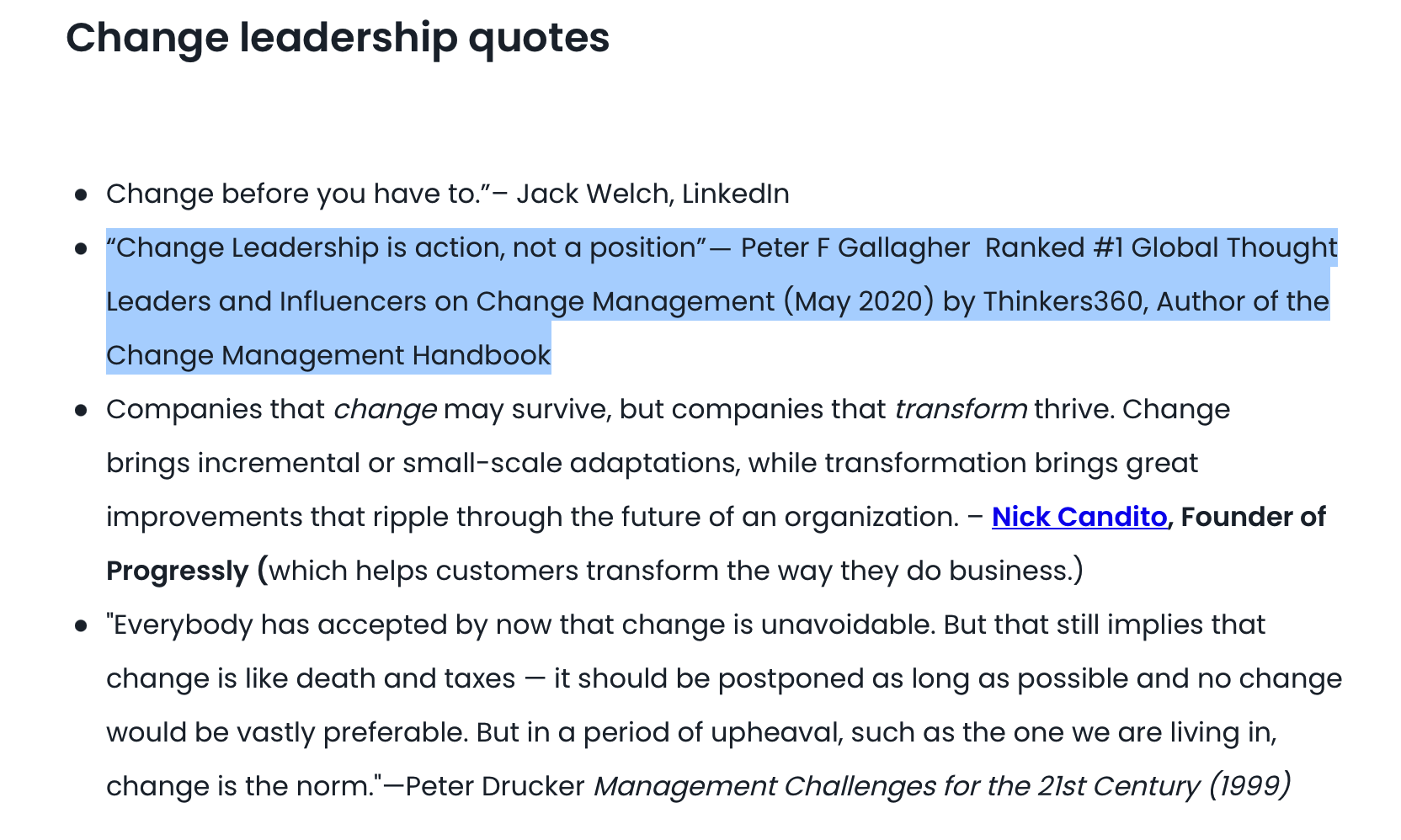 Change Leadership is Action, Not a Position - IPC Consultants
Change Leadership is Action, Not a Position - IPC Consultants
Tags: Change Management
 Change Management Quote
Change Management Quote
Tags: Change Management
 Employee Behaviour - Change Management Quote
Employee Behaviour - Change Management Quote
Tags: Change Management
 Narcissistic deluded leaders and sheep
Narcissistic deluded leaders and sheep
Tags: Change Management
 Change Management Quote Communication
Change Management Quote Communication
Tags: Business Strategy, Change Management, Leadership
 VSA International - Speaker Membership
VSA International - Speaker Membership
Tags: Business Strategy, Change Management, Leadership
 Professional Speakers Association (PSA) Member 2018
Professional Speakers Association (PSA) Member 2018
Tags: Business Strategy, Change Management, Leadership
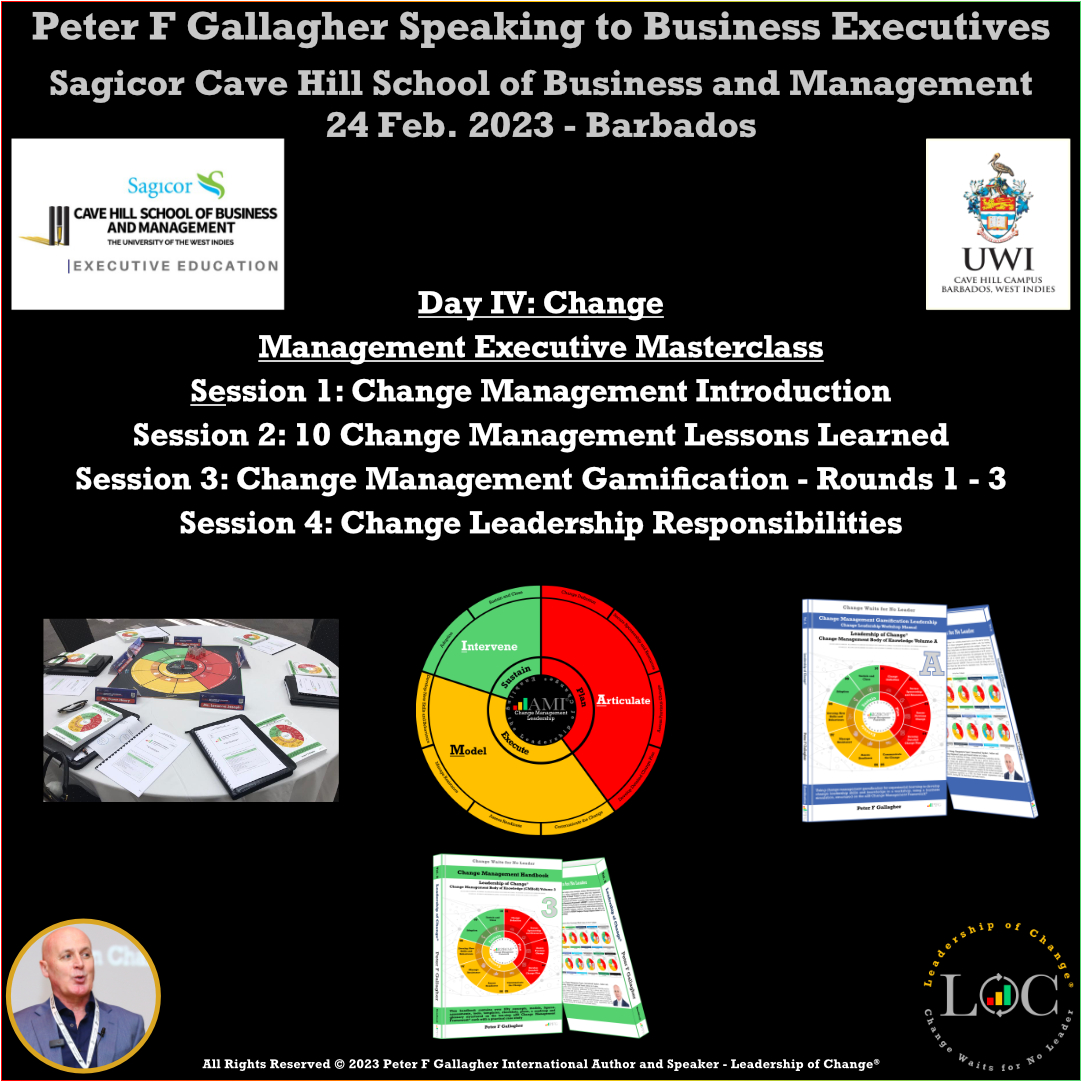 Executive Leadership Programme - Barbados: Day Four: Change
Executive Leadership Programme - Barbados: Day Four: Change
Tags: Business Strategy, Change Management, Leadership
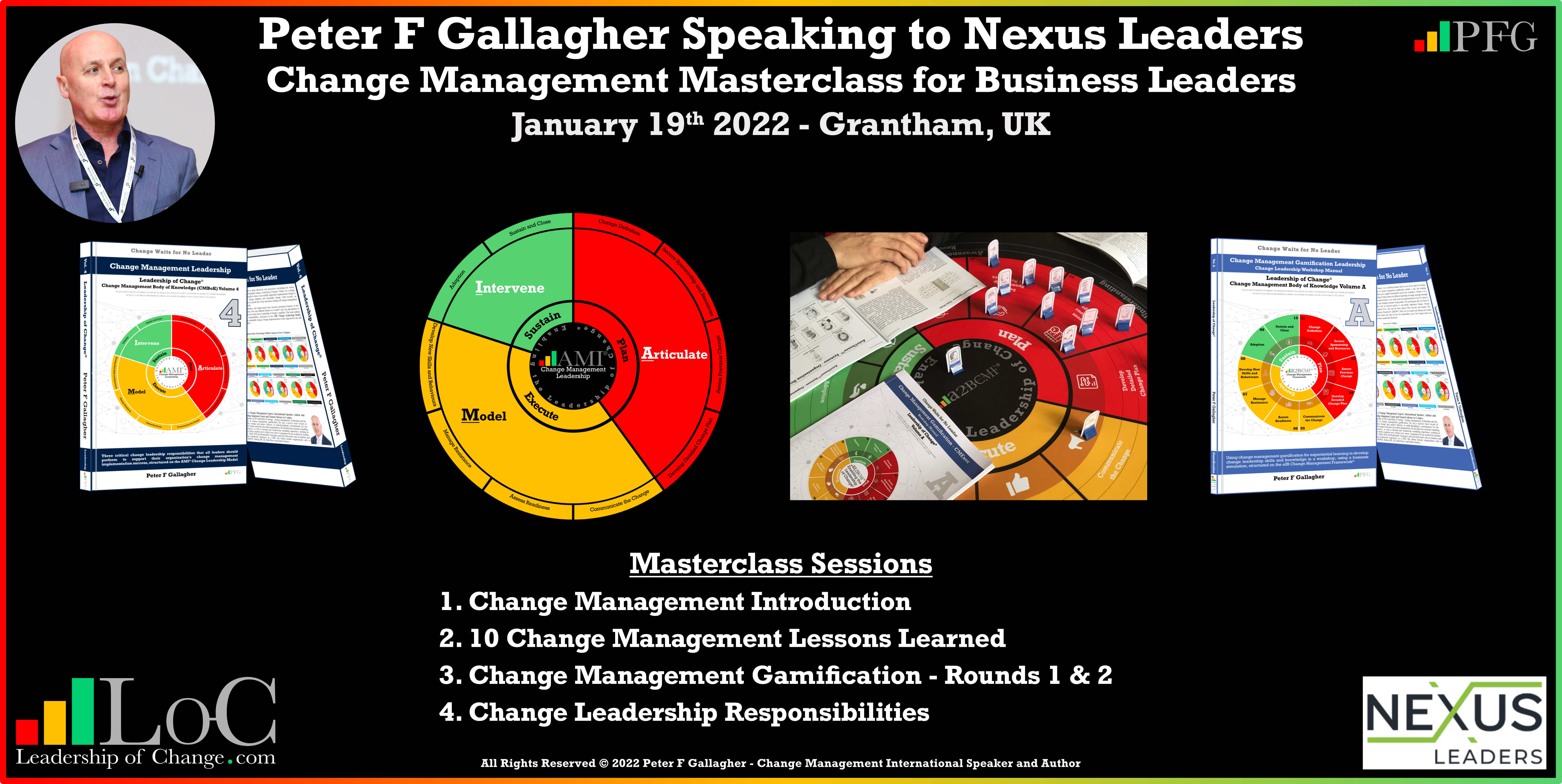 Change Management Masterclass - Peter F Gallagher Speaking to Nexus Leaders, Grantham - UK
Change Management Masterclass - Peter F Gallagher Speaking to Nexus Leaders, Grantham - UK
Tags: Business Strategy, Change Management, Leadership
 Peter F Gallagher Speaking to Vistage UK Chief Executives on the Leadership Of Change
Peter F Gallagher Speaking to Vistage UK Chief Executives on the Leadership Of Change
Tags: Business Strategy, Change Management, Leadership
 ASQ World Conference: Quality and Improvement - May 2021 - Peter F Gallagher Speaking on Change
ASQ World Conference: Quality and Improvement - May 2021 - Peter F Gallagher Speaking on Change
Tags: Business Strategy, Change Management, Leadership
 LSS World Conference: 24 - 25 March 2021 - Peter F Gallagher Speaking on Leadership of Change
LSS World Conference: 24 - 25 March 2021 - Peter F Gallagher Speaking on Leadership of Change
Tags: Business Strategy, Change Management, Leadership
 Three60 Leadership - Peter F Gallagher Speaking on Change Management to UK Business Leaders
Three60 Leadership - Peter F Gallagher Speaking on Change Management to UK Business Leaders
Tags: Business Strategy, Change Management, Leadership
 Leadership of Change - ASQ Lean Six Sigma Conference 2020 - Phoenix, AZ.
Leadership of Change - ASQ Lean Six Sigma Conference 2020 - Phoenix, AZ.
Tags: Business Strategy, Change Management, Leadership
 Linking Strategic Planning, Business Improvement and Change Management
Linking Strategic Planning, Business Improvement and Change Management
Tags: Business Strategy, Change Management, Leadership
Tags: Business Strategy, Change Management, Leadership
 Linking Strategic Planning, Business Improvement and Change Management
Linking Strategic Planning, Business Improvement and Change Management
Tags: Business Strategy, Change Management, Leadership
 Linking Strategic Planning, Business Improvement and Change Management
Linking Strategic Planning, Business Improvement and Change Management
Tags: Business Strategy, Change Management, Leadership
 Linking Strategic Planning, Business Improvement and Change Managem
Linking Strategic Planning, Business Improvement and Change Managem
Tags: Business Strategy, Change Management, Leadership
 a2B3S Change Sponsorship Model
a2B3S Change Sponsorship Model
Tags: Business Strategy, Change Management, Leadership
 AMI Change Leadership Model
AMI Change Leadership Model
Tags: Business Strategy, Change Management, Leadership
Tags: Leadership, Change Management, Business Strategy
 a2B5R Model: Employee Behavioural Change
a2B5R Model: Employee Behavioural Change
Tags: Leadership, Change Management, Business Strategy
 Shell Learning Process Leadership - YB Training - Aberdeen, UK
Shell Learning Process Leadership - YB Training - Aberdeen, UK
Tags: Business Strategy, Change Management, Leadership
 Shell Learning Process Leadership - YB Training - Aberdeen, UK
Shell Learning Process Leadership - YB Training - Aberdeen, UK
Tags: Business Strategy, Change Management, Leadership
 Shell Learning Process Leadership - YB Training - Aberdeen, UK
Shell Learning Process Leadership - YB Training - Aberdeen, UK
Tags: Business Strategy, Change Management, Leadership
 Shell Learning Process Leadership - YB Training - Assen, NL
Shell Learning Process Leadership - YB Training - Assen, NL
Tags: Business Strategy, Change Management, Leadership
 Shell Learning Process Leadership - YB Training - Aberdeen, UK
Shell Learning Process Leadership - YB Training - Aberdeen, UK
Tags: Business Strategy, Change Management, Leadership
 Shell Learning Process Leadership - YB Training - Aberdeen, UK
Shell Learning Process Leadership - YB Training - Aberdeen, UK
Tags: Business Strategy, Change Management, Leadership
 Shell Learning Process Leadership - EPE YB Training - Den Haag, NL
Shell Learning Process Leadership - EPE YB Training - Den Haag, NL
Tags: Business Strategy, Change Management, Leadership
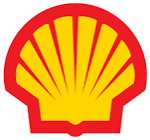 Shell Learning Process Leadership - YB Training - EPE, Aberdeen, UK
Shell Learning Process Leadership - YB Training - EPE, Aberdeen, UK
Tags: Business Strategy, Change Management, Leadership
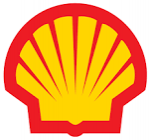 Shell Learning Process Leadership - EPE YB Training - Assen, NL
Shell Learning Process Leadership - EPE YB Training - Assen, NL
Tags: Business Strategy, Change Management, Leadership
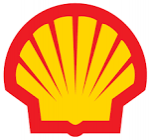 Shell Learning Process Leadership - EPE YB Training - Assen, NL
Shell Learning Process Leadership - EPE YB Training - Assen, NL
Tags: Business Strategy, Change Management, Leadership
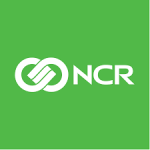 Training: Six Step Global Procurement Process (“GPP”) - APAC16
Training: Six Step Global Procurement Process (“GPP”) - APAC16
Tags: Change Management, Leadership, Procurement
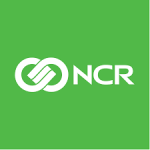 Training: Six Step Global Procurement Process (“GPP”) - APAC14
Training: Six Step Global Procurement Process (“GPP”) - APAC14
Tags: Change Management, Leadership, Procurement
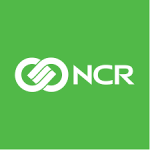 Training: Six Step Global Procurement Process (“GPP”) - APAC12
Training: Six Step Global Procurement Process (“GPP”) - APAC12
Tags: Change Management, Leadership, Procurement
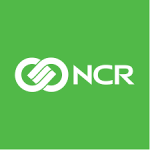 Training: Six Step Global Procurement Process (“GPP”) - APAC11
Training: Six Step Global Procurement Process (“GPP”) - APAC11
Tags: Change Management, Leadership, Procurement

Tags: Business Strategy, Change Management, Leadership

Tags: Business Strategy, Change Management, Leadership

Tags: Business Strategy, Change Management, Leadership

Tags: Business Strategy, Change Management, Leadership

Tags: Business Strategy, Change Management, Leadership

Tags: Business Strategy, Change Management, Leadership

Tags: Business Strategy, Change Management, Leadership

Tags: Business Strategy, Change Management, Leadership

Tags: Business Strategy, Change Management, Leadership

Tags: Business Strategy, Change Management, Leadership

Tags: Business Strategy, Change Management, Leadership

Tags: Business Strategy, Change Management, Leadership

Tags: Business Strategy, Change Management, Leadership
 Peter F Gallagher - New Webpage Design - Video Overview
Peter F Gallagher - New Webpage Design - Video Overview
Tags: Business Strategy, Change Management, Leadership
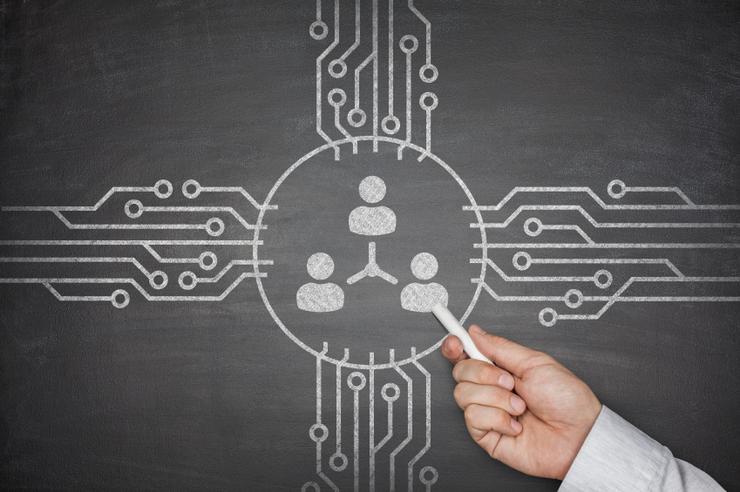 Change Management Gamification Leadership Business Simulation - Video Overview
Change Management Gamification Leadership Business Simulation - Video Overview
Tags: Business Strategy, Change Management, Leadership

Tags: Leadership, Change Management, Business Strategy
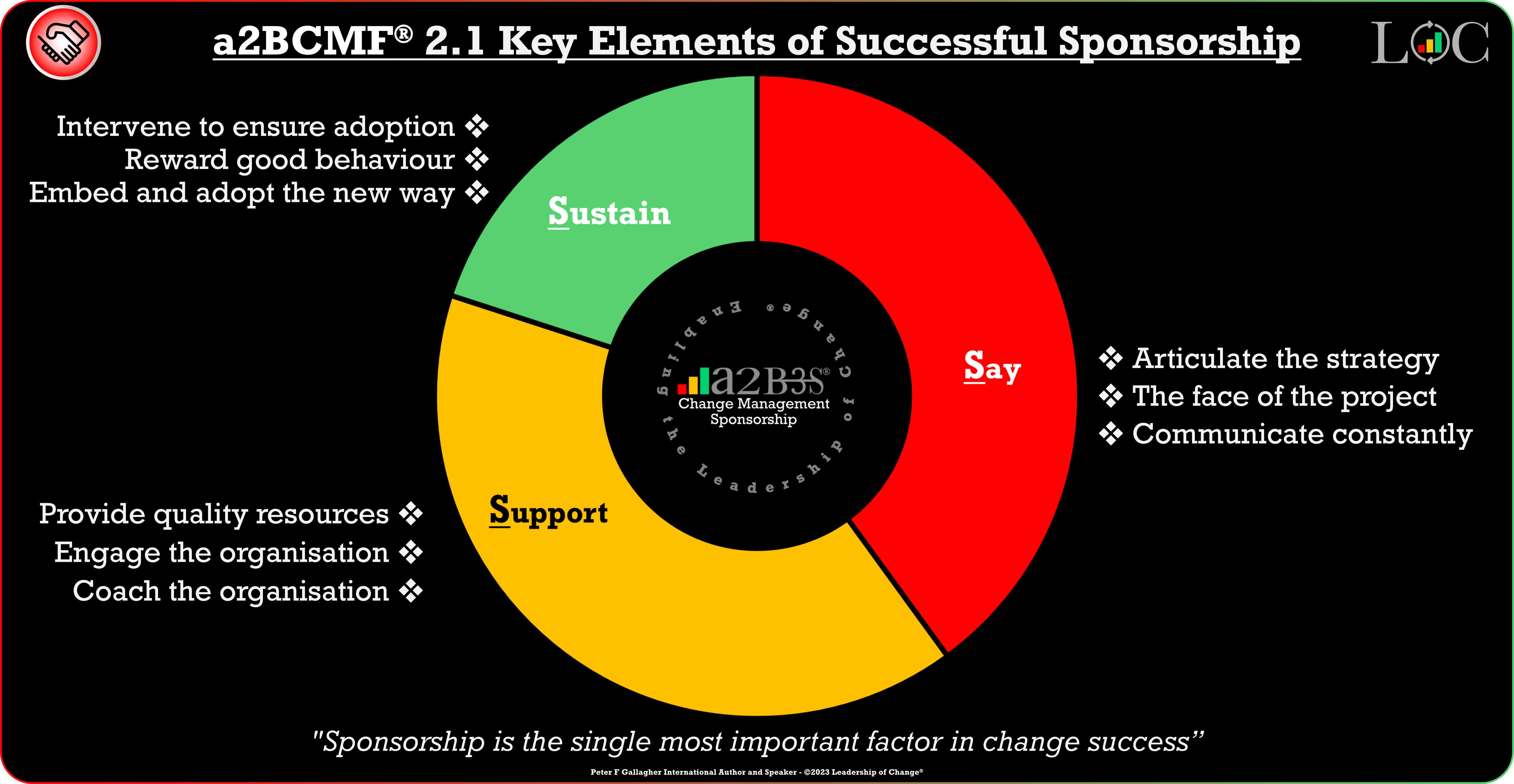 Change Management Leadership - Online Mini Masterclass A1 - 2.1 Change Sponsorship (Learning Sample)
Change Management Leadership - Online Mini Masterclass A1 - 2.1 Change Sponsorship (Learning Sample)
Tags: Business Strategy, Change Management, Leadership

Tags: Business Strategy, Change Management, Leadership
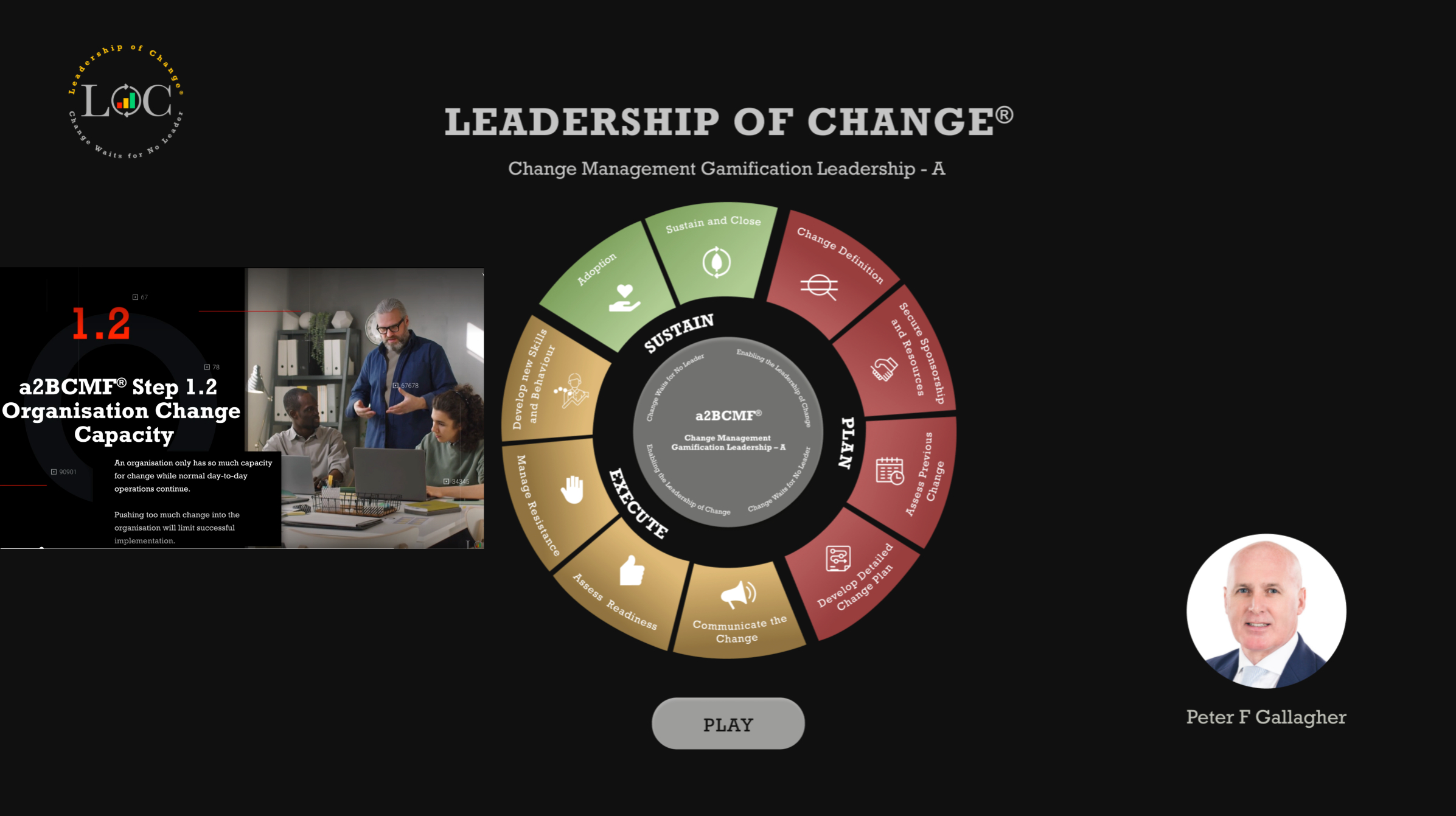 Gamification App Workshop Video 2 - a2BCMF Step 1.2 Capacity
Gamification App Workshop Video 2 - a2BCMF Step 1.2 Capacity
Tags: Business Strategy, Change Management, Leadership

Tags: Business Strategy, Change Management, Leadership

Tags: Business Strategy, Change Management, Leadership

Tags: Leadership, Change Management, Business Strategy

Tags: Business Strategy, Change Management, Leadership

Tags: Leadership, Change Management, Business Strategy

Tags: Business Strategy, Change Management, Leadership
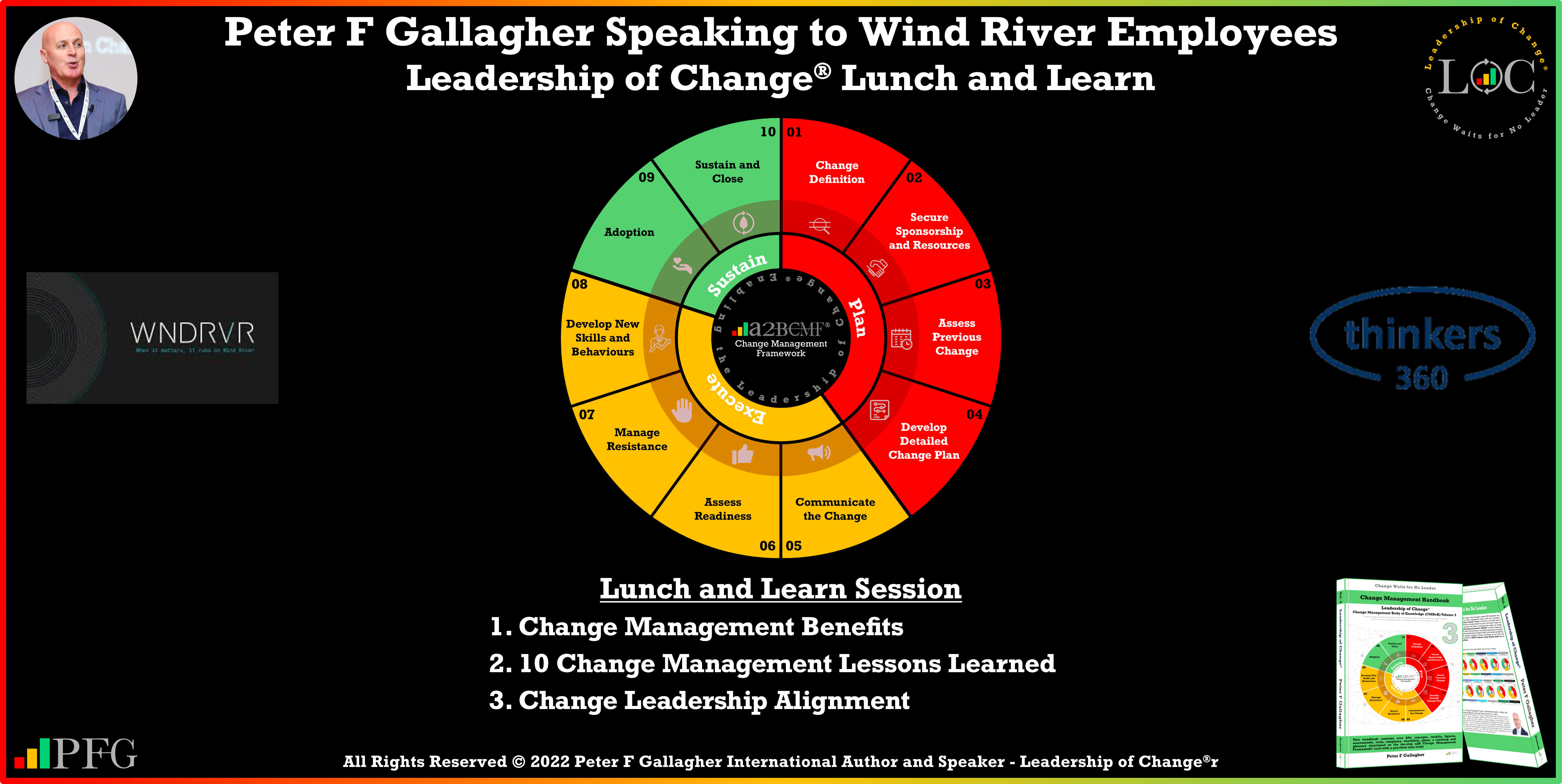 Peter F Gallagher Speaking to Wind River Employees - Leadership of Change Lunch and Learn
Peter F Gallagher Speaking to Wind River Employees - Leadership of Change Lunch and Learn
Tags: Business Strategy, Change Management, Leadership
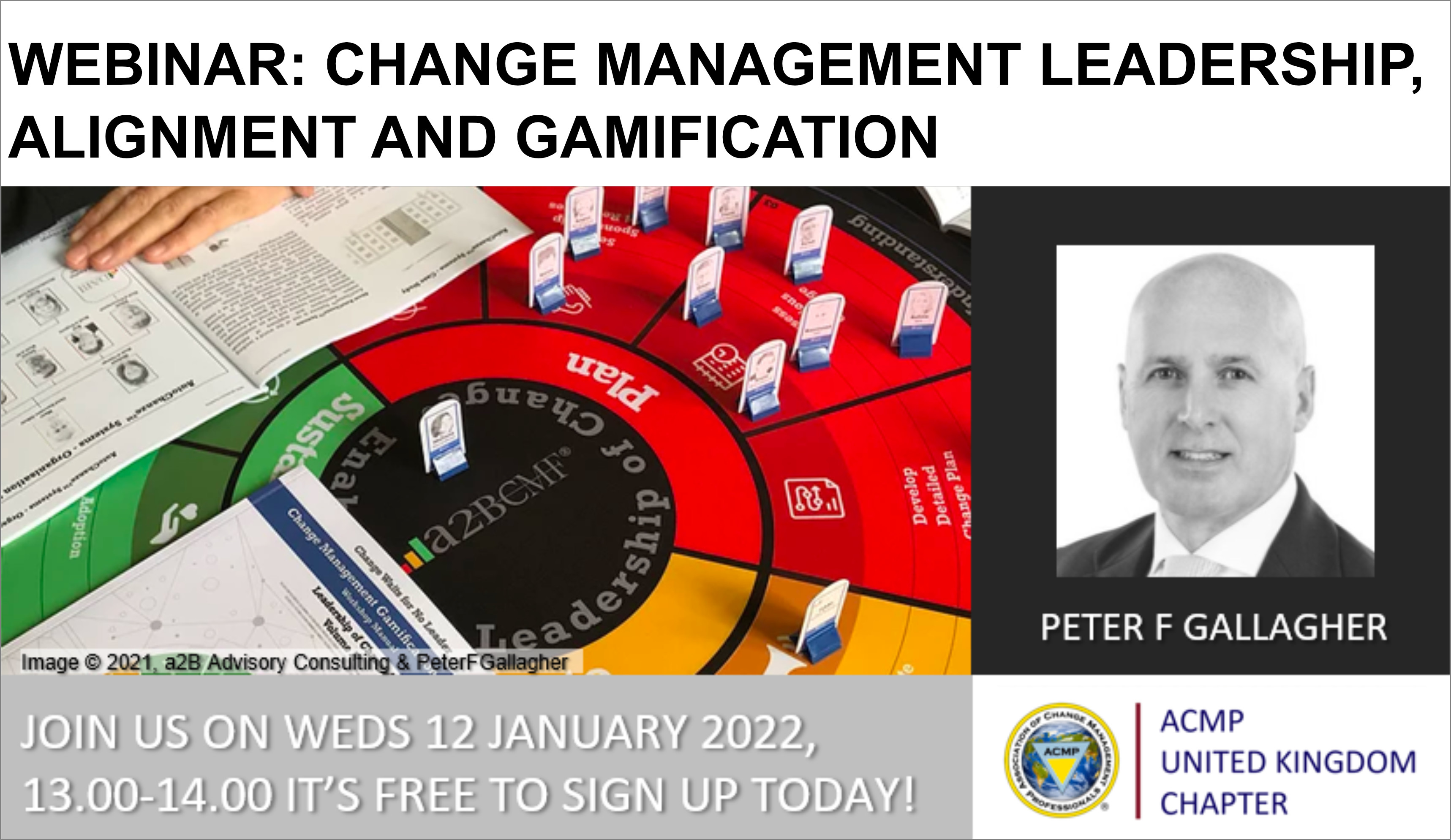 Leadership Responsibilities, Leadership Alignment, Management.
Leadership Responsibilities, Leadership Alignment, Management.
Tags: Business Strategy, Change Management, Leadership
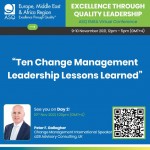 ASQ EMEA Virtual Conference: Nov 2021 - Peter F Gallagher Speaking on Change Leadership Lessons
ASQ EMEA Virtual Conference: Nov 2021 - Peter F Gallagher Speaking on Change Leadership Lessons
Tags: Leadership, Change Management, Business Strategy
 ASQ Great Britain Section: June 2021 - Peter F Gallagher Speaking on Change Management and Quality
ASQ Great Britain Section: June 2021 - Peter F Gallagher Speaking on Change Management and Quality
Tags: Business Strategy, Change Management, Leadership
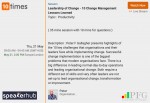 Leadership of Change - 10 Change Management Lessons Learned (SpeakerHub)
Leadership of Change - 10 Change Management Lessons Learned (SpeakerHub)
Tags: Leadership, Change Management, Business Strategy
 Leadership of Change - 10 Change Management Lessons Learned (ACMP UK)
Leadership of Change - 10 Change Management Lessons Learned (ACMP UK)
Tags: Leadership, Change Management, Business Strategy
Tags: Leadership, Change Management, Business Strategy
 Learning from Past Mistakes for Successful Change Programme Implementation
Learning from Past Mistakes for Successful Change Programme Implementation
Tags: Leadership, Change Management, Business Strategy
 Three60 Leadership - Peter F Gallagher Speaking on Change Management to UK Business Leaders
Three60 Leadership - Peter F Gallagher Speaking on Change Management to UK Business Leaders
Tags: Business Strategy, Change Management, Leadership
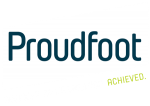 Leadership Alignment High Performing Team Workshop 2 - Dusseldorf
Leadership Alignment High Performing Team Workshop 2 - Dusseldorf
Tags: Business Strategy, Change Management, Lean Startup
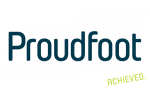 Leadership Alignment Gamification Workshop 3 - Dresden
Leadership Alignment Gamification Workshop 3 - Dresden
Tags: Business Strategy, Change Management, Leadership
 Leadership Alignment High Performing Team Workshop 2 - Dresden
Leadership Alignment High Performing Team Workshop 2 - Dresden
Tags: Business Strategy, Change Management, Leadership
 Leadership Alignment Gamification Workshop 3 - Dusseldorf
Leadership Alignment Gamification Workshop 3 - Dusseldorf
Tags: Business Strategy, Change Management, Leadership
 Leadership Alignment Priorities Workshop 1 - Dresden
Leadership Alignment Priorities Workshop 1 - Dresden
Tags: Business Strategy, Change Management, Leadership
 Leadership Alignment Priorities Workshop 1 - Dusseldorf
Leadership Alignment Priorities Workshop 1 - Dusseldorf
Tags: Business Strategy, Change Management, Leadership
 EY MENA Strategy One Day Workshop - Dubai
EY MENA Strategy One Day Workshop - Dubai
Tags: Business Strategy, Change Management, Leadership
 Improving Governance and Collaboration between the Assets, the Functions and the Contractor Workshop
Improving Governance and Collaboration between the Assets, the Functions and the Contractor Workshop
Tags: Business Strategy, Change Management, Leadership
 Improving Governance and Collaboration between the Assets, the Functions and the Contractor - Kick-off
Improving Governance and Collaboration between the Assets, the Functions and the Contractor - Kick-off
Tags: Business Strategy, Change Management, Leadership
 2020 Planing and Budget Transformation 5th Jun 2013 - #2 Transformation Update
2020 Planing and Budget Transformation 5th Jun 2013 - #2 Transformation Update
Tags: Business Strategy, Change Management, Leadership
 2020 Planing and Budget Transformation - #1 1/2 Day Project Update
2020 Planing and Budget Transformation - #1 1/2 Day Project Update
Tags: Business Strategy, Change Management, Leadership
 Business improvement for Leaders - 2 day Workshop 1 of 1 - Bahrain
Business improvement for Leaders - 2 day Workshop 1 of 1 - Bahrain
Tags: Business Strategy, Change Management, Leadership
 Introduction to business improvement - 5 day Workshop 2 of 2 - Bahrain
Introduction to business improvement - 5 day Workshop 2 of 2 - Bahrain
Tags: Business Strategy, Change Management, Leadership
 2020 Transformation Programme Launch Workshop
2020 Transformation Programme Launch Workshop
Tags: Business Strategy, Change Management, Leadership
 Introduction to business improvement - 5 day Workshop 1 of 2 - Bahrain
Introduction to business improvement - 5 day Workshop 1 of 2 - Bahrain
Tags: Business Strategy, Change Management, Leadership
 Finance Transformation - Workshop Four Transformation Roadmap - Kuwait
Finance Transformation - Workshop Four Transformation Roadmap - Kuwait
Tags: Business Strategy, Change Management, Leadership
 Finance Transformation - Workshop Three Initial Design Phase - Kuwait
Finance Transformation - Workshop Three Initial Design Phase - Kuwait
Tags: Business Strategy, Change Management, Leadership
 Finance Transformation - Workshop Two Diagnose Phase - Kuwait
Finance Transformation - Workshop Two Diagnose Phase - Kuwait
Tags: Business Strategy, Change Management, Leadership
 Finance Transformation - Workshop One Identify Phase - Kuwait
Finance Transformation - Workshop One Identify Phase - Kuwait
Tags: Business Strategy, Change Management, Leadership
 Global HR Lifecycle Lean Change Project 1: HR Offer to Onseat
Global HR Lifecycle Lean Change Project 1: HR Offer to Onseat
Tags: Business Strategy, Change Management, Leadership
 NCPOC Work Permit Immigration Improvement Process - Kazakhstan SC5 Workshop Audit
NCPOC Work Permit Immigration Improvement Process - Kazakhstan SC5 Workshop Audit
Tags: Business Strategy, Change Management, Leadership
 Global HR Lifecycle Lean ESSA Change Project 2: HR Off-boarding
Global HR Lifecycle Lean ESSA Change Project 2: HR Off-boarding
Tags: Business Strategy, Change Management, Leadership
 NCPOC Work Permit Immigration Improvement Process - Kazakhstan SC4 Workshop Actions
NCPOC Work Permit Immigration Improvement Process - Kazakhstan SC4 Workshop Actions
Tags: Business Strategy, Change Management, Leadership
 KCO Hydrotest Lean Project: Phase 2 Kazakhstan, Caspian Sea Island
KCO Hydrotest Lean Project: Phase 2 Kazakhstan, Caspian Sea Island
Tags: Business Strategy, Change Management, Leadership
Date : January 28, 2021
 Friday’s Change Reflection Quote - Leadership of Change - Change Leaders Challenge Prevailing Assumptions
Friday’s Change Reflection Quote - Leadership of Change - Change Leaders Challenge Prevailing Assumptions
FCRQ176 Leadership Learning!
On 12 December 1901, Guglielmo Marconi proved wireless communication across the Atlantic was possible when he received three faint clicks representing the Morse code letter S at Signal Hill in St John’s, Newfoundland. The Italian radio pioneer and inventor transformed global communication through his development of practical wireless telegraphy. Transmitted from Poldhu, Cornwall, more than 2,100 miles away, these simple signals shattered prevailing scientific assumptions and opened an entirely new chapter in human communication. Using a 50- foot kite supported antenna and a telephone earpiece connected to a coherer, Marconi heard the prearranged signal at 12.30, 1.10 and 2.20 that December afternoon, forever changing humanity's relationship with distance and information. The achievement arrived amidst considerable scepticism from leading physicists who insisted radio waves travelled in straight lines, rendering transmission beyond the horizon impossible. Thomas Edison voiced scepticism about the long‑distance reception, though the specific claim about atmospheric static lacks reliable historical evidence. At the time, no scientific model could account for long distance wireless propagation, leaving Marconi’s results without a theoretical explanation. Yet Marconi persisted, driven by conviction that wireless telegraphy could compete commercially with the expensive transatlantic telegraph cables that monopolised international communication. Since 1866, undersea telegraph cables had carried almost all transatlantic messages, creating powerful commercial interests determined to protect their investments from emerging wireless competition. When Marconi achieved his breakthrough, the Anglo American Telegraph Company immediately threatened legal action for violating their Newfoundland communication monopoly, forcing him to relocate his experiments within days. The December 1901 reception occurred under particularly challenging conditions. After storms destroyed the Cape Cod antenna and earlier damage at Poldhu limited his options, Marconi arrived in Newfoundland already working with improvised equipment. On Signal Hill, fierce gales carried away the first kite and balloon attempts. The second kite barely stayed aloft long enough for those historic receptions. Marconi's diary entry for that day contains just seven words: “Sigs at 12.30, 1.10 and 2.20.” This understated record belied the magnitude of what had occurred. Debate continues about what precisely happened that day, with modern radio scientists noting that daytime long wave transmission across such distances should have been impossible. Some historians suggest Marconi may have detected short wave harmonics rather than the primary transmission frequency. Others maintain atmospheric conditions, whilst improbable, were not impossible. What remains undisputed is that within two months, during February 1902 aboard the SS Philadelphia, Marconi conducted carefully documented tests with multiple witnesses, receiving signals up to 2,100 miles from Poldhu, definitively proving transatlantic wireless communication's viability. The 1901 breakthrough fundamentally altered strategic thinking about global communication. Prior to Marconi's success, international communication required physical infrastructure vulnerable to enemy interdiction. A nation's undersea cables could be cut, isolating it completely. Wireless technology offered resilience through redundancy, making it impossible to sever all communication channels simultaneously. This military implication was not lost on governments, particularly navies, which rapidly adopted wireless technology.
Change Leadership Lessons: Marconi’s determination offers clear insights for contemporary change leaders seeking to advance bold visions despite resistance. Leaders of change challenge prevailing assumptions through empirical evidence rather than accepting theoretical limitations others believe impossible. They persist through adversity by adapting when obstacles arise, improvising simpler solutions that ultimately prove viable. Change leaders enable sustainable innovation by focusing strategically on initial markets that generate revenue whilst supporting broader research. They respond to scepticism through enhanced demonstration with documented trials and witnesses rather than arguing defensively against critics. Leaders of change accelerate progress by repositioning geographically when current environments resist, seeking supportive institutions that enable breakthrough. Change Leaders Challenge Prevailing Assumptions.
“Transformative change requires challenging prevailing assumptions with evidence, persisting through adversity, and strategically positioning where supportive environments enable breakthrough innovation.”
Application. Change Leadership Responsibility 1 - Articulate a Change Vision: Marconi articulated a vision that connected a technical possibility with a compelling human purpose: overcoming the limits of distance. This vision resonated because it spoke not only to scientific progress but to society’s desire for faster, more open communication. He acknowledged the uncertainties and the gaps in theoretical understanding, yet he maintained clarity about the destination. This balance of ambition and realism created alignment among engineers, investors, and government institutions who recognised the scale of the opportunity. For today’s change leaders, vision must similarly unite diverse stakeholders by providing meaning that stretches beyond immediate challenges. When leaders communicate change with conviction, transparency, and a steady focus on long-term outcomes, they generate the trust and commitment needed to move from experimental breakthroughs to sustainable organisational transformation.
Final Thoughts: Wireless communication reshaped society by expanding what people believed was possible, and today artificial intelligence is creating a similar inflection point. Leaders who articulate bold visions grounded in evidence and purpose will guide their organisations through this accelerating era of change. When leaders combine technological insight with disciplined execution, they create the conditions for sustained, credible, and transformative progress.
Further Reading: Change Management Leadership - Leadership of Change® Volume 4.
For further reading please visit our websites: https://www.a2b.consulting https://www.peterfgallagher.com Amazon.com: Peter F Gallagher: Books, Biography, Blog, Audiobooks, Kindle
Leadership of Change® Body of Knowledge Volumes: Change Management Body of Knowledge (CMBoK) Books: Volumes 1, 2, 3, 4, 5, 6, 7, 8, 9, 10, A, B, C, D & E available on both Amazon and Google Play:
~ Leadership of Change® Volume 1 - Change Management Fables
~ Leadership of Change® Volume 2 - Change Management Pocket Guide
~ Leadership of Change® Volume 3 - Change Management Handbook
~ Leadership of Change® Volume 4 - Change Management Leadership
~ Leadership of Change® Volume 5 - Change Management Adoption
~ Leadership of Change® Volume 6 - Change Management Behaviour
~ Leadership of Change® Volume 7 - Change Management Sponsorship
~ Leadership of Change® Volume 8 - Change Management Charade
~ Leadership of Change® Volume 9 - Change Management Insanity
~ Leadership of Change® Volume 10 - Change Management Dilenttante
~ Leadership of Change® Volume A - Change Management Gamification - Leadership
~ Leadership of Change® Volume B - Change Management Gamification - Adoption
Tags: Business Strategy, Change Management, Leadership
 Friday’s Change Reflection Quote - Leadership of Change - Change Leaders Prioritise Societal Needs
Friday’s Change Reflection Quote - Leadership of Change - Change Leaders Prioritise Societal Needs
On 5 December 1933, the United States ratified the 21st Amendment to its Constitution, repealing the 18th Amendment and ending Prohibition. This marked the conclusion of a 13-year national experiment in banning the manufacture, sale, and transportation of alcoholic beverages. The repeal was achieved when Utah became the 36th state to ratify the amendment, providing the required three-quarters majority. Prohibition had been introduced in 1920, driven by the temperance movement’s moral ambition to reshape social behaviour. However, the policy quickly revealed unintended consequences, including the rise of organised crime and widespread illegal distribution. By the early 1930s, public opinion had shifted decisively against Prohibition, and repeal became inevitable. The historical facts are well established. Prohibition was enacted through the 18th Amendment in 1919, came into force in 1920, and was enforced through the Volstead Act, which defined intoxicating liquors and established penalties. Organised crime flourished, with figures such as Al Capone building empires around bootlegging. Speakeasies became common in urban centres, and enforcement proved inconsistent. The federal government lost billions in potential tax revenue as ordinary citizens continued to drink in defiance of the law. By 1933, the economic pressures of the Great Depression and the failure of enforcement made repeal a political necessity. President Franklin D. Roosevelt had campaigned for repeal in 1932, and his administration’s support ensured momentum for ratification. The ratification of the 21st Amendment was unique because it remains the only amendment to repeal another, and it was approved through state conventions rather than legislatures, reflecting the urgency of the issue. The repeal did not mean alcohol became unregulated. States retained authority to determine their own systems of control, and some maintained restrictions for decades, with Mississippi remaining a dry state until 1966. This event demonstrated the need for governance to adapt when policy objectives no longer align with societal realities. Prohibition had been introduced with moral purpose but had failed in practice, and its repeal reflected a pragmatic recognition that the law had become unenforceable and socially damaging. The historical significance of the repeal lies in its illustration of the balance between moral aspiration and practical governance. It showed how leaders must confront the consequences of their decisions and adjust policy in line with public sentiment. The repeal of Prohibition helped restore public trust, stabilised revenue streams, and reduced the influence of organised crime. It also underscored the need for adaptive leadership during times of crisis. In today’s context, the lesson is that policies must be continually evaluated against outcomes, and leaders must intervene when the gap between intention and reality becomes too wide.
Change Leadership Lessons: Prohibition’s rise and repeal illustrate how leaders must respond when societal realities diverge from policy intentions. Leaders of change must recognise when established policies fail, intervening decisively to restore trust and align governance with reality. They must listen carefully to society, acknowledge shifts in opinion, and adjust direction to maintain legitimacy and credibility. Change leaders must account for financial consequences, ensuring decisions do not undermine long-term economic stability or weaken institutional resilience. They must anticipate and address unforeseen outcomes, ensuring interventions minimise harm while strengthening governance and institutional accountability. Leaders of change must demonstrate courage to reverse course, showing accountability and prioritising effectiveness over rigid adherence to ideology. Change Leaders Prioritise Societal Needs.
“Change leadership demands courage to intervene, recognising economic reality and failure, restoring trust, and aligning governance with reality and societal needs.”
Application - Change Leadership Responsibility 3 - Intervene to Ensure Sustainable Change: The repeal of Prohibition demonstrates how leaders must intervene when well intended strategies create outcomes that undermine organisational or societal stability. Within organisations, similar patterns emerge when policies are maintained despite evidence that they no longer serve their purpose. Change leaders must recognise when established approaches generate operational strain, cultural resistance, or reputational risk. Intervening early means examining the assumptions underpinning policy decisions, assessing whether governance structures support intended outcomes, and ensuring accountability mechanisms are strong enough to manage emerging risks. Sustainable change depends on leaders being willing to revise or replace initiatives that are not delivering value, even when they were introduced with positive intentions. When organisational leaders intervene decisively, they shift organisational thinking from defensive justification to proactive adaptation, strengthening trust and enabling long-term resilience.
Final Thoughts: AI continues to accelerate organisational transformation, making adaptive and accountable leadership more important than ever. The lessons from Prohibition remind us that policies and practices must evolve when evidence shows they no longer meet societal or organisational needs. Leaders who pair technological progress with ethical judgement and responsive governance will guide their organisations with clarity and credibility.
Further Reading: Change Management Leadership - Leadership of Change® Volume 4.
For further reading please visit our websites: https://www.a2b.consulting https://www.peterfgallagher.com Amazon.com: Peter F Gallagher: Books, Biography, Blog, Audiobooks, Kindle
Leadership of Change® Body of Knowledge Volumes: Change Management Body of Knowledge (CMBoK) Books: Volumes 1, 2, 3, 4, 5, 6, 7, 8, 9, 10, A, B, C, D & E available on both Amazon and Google Play:
~ Leadership of Change® Volume 1 - Change Management Fables
~ Leadership of Change® Volume 2 - Change Management Pocket Guide
~ Leadership of Change® Volume 3 - Change Management Handbook
~ Leadership of Change® Volume 4 - Change Management Leadership
~ Leadership of Change® Volume 5 - Change Management Adoption
~ Leadership of Change® Volume 6 - Change Management Behaviour
~ Leadership of Change® Volume 7 - Change Management Sponsorship
~ Leadership of Change® Volume 8 - Change Management Charade
~ Leadership of Change® Volume 9 - Change Management Insanity
~ Leadership of Change® Volume 10 - Change Management Dilenttante
~ Leadership of Change® Volume A - Change Management Gamification - Leadership
~ Leadership of Change® Volume B - Change Management Gamification - Adoption
Tags: Business Strategy, Change Management, Leadership
 Friday’s Change Reflection Quote - Leadership of Change - Change Leaders Serve Future Generations
Friday’s Change Reflection Quote - Leadership of Change - Change Leaders Serve Future Generations
FCRQ174 Leadership Learning!
On November 28, 2012, the world bid farewell to Zig Ziglar, whose passing marked the conclusion of a remarkable journey as one of the most influential motivational speakers and sales trainers of the 20th century. Born Hilary Hinton Ziglar on November 6, 1926, in Coffee County, Alabama, he died at age 86 in a Plano, Texas hospital from complications of pneumonia. The Mississippi native built an extraordinary career spanning more than four decades, distinguished by his distinctive Southern drawl, infectious optimism, and unwavering focus on helping others achieve success through service. His influence reached far beyond corporate boardrooms and convention centres, touching millions of lives through an extensive body of work that included more than 30 books, countless audio programmes, and seminars held in packed arenas across the globe. Ziglar began his professional journey in door‑to‑door sales in the 1950s before transitioning to full‑time motivational speaking in the 1970s. His message centred on positive thinking, goal achievement, ethical sales practices, and personal integrity, emphasising that true success required balance across all life domains, including family, faith, career, and personal wellbeing. He founded Ziglar Inc in 1977, establishing a training organisation that combined practical business strategies with his deeply held Christian values. His bestselling works included See You at the Top, Confessions of a Happy Christian, and numerous other titles that became essential reading for sales professionals and aspiring leaders. Through his company, he developed training programmes that influenced corporate culture and individual performance across multiple industries. His seminars, often featuring other prominent speakers, became large‑scale events that drew thousands of attendees seeking inspiration and practical guidance for achieving their professional and personal aspirations. Even when faced with significant health challenges, including a serious fall in 2007 that resulted in brain injury causing short‑term memory problems and vertigo, Ziglar remained committed to his mission. He continued limited speaking engagements and co‑authored books documenting his experiences, demonstrating the resilience and positive mindset he had advocated throughout his career. His ability to embrace struggle and find purpose in adversity provided powerful testimony to the principles he had taught for decades. The significance of his passing represented the end of an era in which motivational speaking emerged as a recognised profession and vehicle for organisational transformation. His legacy persists through the speakers he mentored, the company his family continues to operate, and the countless individuals whose lives were permanently altered by encountering his message. The challenge for those who benefited from his wisdom is to carry forward his commitment to helping others achieve their fullest potential through principled action and sustained optimism.
Change Leadership Lessons: Leaders of change construct organisational frameworks and methodologies that function independently, ensuring mission continuity regardless of personnel changes or transitions. They strategically invest in developing capable individuals who genuinely internalise core principles, creating leadership pipelines that maintain cultural consistency across generations. Change leaders require successors who authentically embody principles rather than merely perform behaviours, demanding deep alignment between beliefs and demonstrated actions over time. They maximise impact by creating enduring assets and documented knowledge that continue serving audiences beyond their direct involvement or lifetime. Leaders of change design interconnected elements, including trained people, documented processes, and transferable resources that reinforce the mission independently for lasting sustainability. Change Leaders Serve Future Generations.
“Change endures when leaders build systems that outlive presence, develop successors who embody values, and create resources serving future generations.”
Application - Change Leadership Responsibility 3 - Intervene to Ensure Sustainable Change:
The Zig Ziglar case demonstrates the enduring impact of leadership intervening to embed values and capability into organisational systems. Change leaders must recognise that success depends not only on personal charisma but also on constructing frameworks that function independently and equipping successors to carry principles forward. Intervening early means codifying lessons, documenting processes, and investing in people who embody integrity and service rather than simply replicating behaviours. Sustainable change depends on leaders creating resources and pipelines that preserve cultural consistency across generations, ensuring that the mission and values remain strong even after transitions. When leaders intervene decisively, they transform influence from temporary inspiration into lasting infrastructure, protecting both organisational continuity and future purpose.
Final Thoughts: Leadership influence endures when values are embedded into systems that outlast individual presence. Leaders who invest in successors and create resources grounded in integrity ensure continuity across generations. The future belongs to those who transform inspiration into sustainable frameworks that serve people long after their time.
Further Reading: Change Management Leadership - Leadership of Change® Volume 4.
Peter F. Gallagher consults, speaks, and writes on Leadership of Change®. He works exclusively with boards, CEOs, and senior leadership teams to prepare and align them to effectively and proactively lead their organisations through change and transformation.
For insights on navigating organisational change, feel free to reach out at Peter.gallagher@a2B.consulting.
#LeadershipofChange #Leadership #LeadershipDevelopment #ChangeLeadership #FCRQ #Thinkers360 #GlobalGurus #ChangeManagement #ZigZiglar #SeeYouAtTheTop
For further reading please visit our websites: https://www.a2b.consulting https://www.peterfgallagher.com Amazon.com: Peter F Gallagher: Books, Biography, Blog, Audiobooks, Kindle
Leadership of Change® Body of Knowledge Volumes: Change Management Body of Knowledge (CMBoK) Books: Volumes 1, 2, 3, 4, 5, 6, 7, 8, 9, 10, A, B, C, D & E available on both Amazon and Google Play:
~ Leadership of Change® Volume 1 - Change Management Fables
~ Leadership of Change® Volume 2 - Change Management Pocket Guide
~ Leadership of Change® Volume 3 - Change Management Handbook
~ Leadership of Change® Volume 4 - Change Management Leadership
~ Leadership of Change® Volume 5 - Change Management Adoption
~ Leadership of Change® Volume 6 - Change Management Behaviour
~ Leadership of Change® Volume 7 - Change Management Sponsorship
~ Leadership of Change® Volume 8 - Change Management Charade
~ Leadership of Change® Volume 9 - Change Management Insanity
~ Leadership of Change® Volume 10 - Change Management Dilenttante
~ Leadership of Change® Volume A - Change Management Gamification - Leadership
~ Leadership of Change® Volume B - Change Management Gamification - Adoption
Tags: Business Strategy, Change Management, Leadership
 Friday’s Change Reflection Quote - Leadership of Change - Change Leaders Instil Compliance Frameworks
Friday’s Change Reflection Quote - Leadership of Change - Change Leaders Instil Compliance Frameworks
FCRQ173 Leadership Learning!
On 21st November 2023, Changpeng Zhao pleaded guilty to violations relating to the Bank Secrecy Act and stepped down as chief executive officer of Binance. This marked the conclusion of one of the most significant enforcement actions in cryptocurrency history, as announced by the U.S. Department of Justice (DOJ). The settlement required Binance to pay over 4 billion dollars in penalties, representing a watershed moment for an industry that had long operated in regulatory grey zones. Founded in 2017, Binance rapidly ascended to become the world's largest cryptocurrency exchange CNBCTechCrunch, processing billions of dollars in trading volume and serving millions of customers globally. The platform's meteoric rise was fuelled by expansion strategies, low trading fees, and a borderless operational structure that operated without a traditional headquarters or clear jurisdictional boundaries. The company prioritised growth, market share and profits over compliance with United States law in a deliberate and calculated effort to profit without implementing controls required by law U.S. DOJ. The prosecution revealed systemic failures in anti-money laundering (AML) protocols. Zhao caused Binance to fail to implement an effective AML programme, creating vulnerabilities that were exploited. Internal communications exposed the cavalier attitude towards compliance, with one staff member noting the platform had become attractive to those seeking to launder proceeds from criminal activities. Court documents showed Zhao told employees it was “better to ask for forgiveness than permission,” according to CoinDesk, a philosophy that pervaded the organisation's approach to regulatory requirements. The DOJ announced charges including conspiracy to violate banking laws and violating the International Emergency Economic Powers Act. These charges underscored how the platform had enabled transactions involving sanctioned jurisdictions, collecting substantial fees whilst circumventing fundamental safeguards designed to protect financial system integrity. The settlement's scale reflected the gravity of the violations. This prosecution represented the Department’s largest corporate guilty plea that also involved the guilty plea of a chief executive officer. Beyond monetary penalties, the agreement mandated comprehensive compliance enhancements, the appointment of an independent monitor, and Zhao's resignation from operational involvement for three years following the monitor's appointment. The case demonstrated that technological innovation cannot serve as justification for regulatory circumvention. The resolution sent an unambiguous message to the broader cryptocurrency industry about the consequences of prioritising expansion over compliance. It highlighted the tension between the decentralised ethos of cryptocurrency and the practical necessity of regulatory frameworks that protect consumers. The significance extends beyond Binance itself. The settlement established precedent for how authorities would approach cryptocurrency exchanges operating globally. It clarified expectations regarding AML obligations, sanctions compliance, and registration requirements. For an industry that had often operated in ambiguous regulatory territory, the case provided stark clarity about the boundaries of permissible conduct. The event marked a pivotal moment in cryptocurrency's maturation, signalling the end of an era where platforms could leverage regulatory arbitrage as competitive advantage. It underscored that participation in the American financial system requires adherence to established rules, regardless of technological sophistication or innovation. The resolution balanced enforcement with pragmatism, allowing Binance to continue operations under enhanced oversight whilst extracting substantial penalties and operational reforms. This approach reflected a regulatory philosophy that sought to bring the industry into compliance rather than simply punishing past misconduct, setting a framework for how authorities might engage with cryptocurrency enterprises moving forwards.
Change Leadership Lessons: This case illustrates how leadership choices reverberate beyond financial penalties, shaping organisational culture and resilience. The lessons for change leaders are clear: compliance frameworks are not optional guardrails but essential foundations for sustainable transformation. Leaders of change establish organisational culture by allocating resources, maintaining consistent messaging, and visibly rewarding compliance with regulatory frameworks. They create environments where teams prioritise business goals over legal obligations by framing regulations as obstacles rather than foundations. Change leaders generate compliance vulnerabilities that become serious threats when scaling operations without investing in compliance capabilities. They show that growth increases accountability for compliance failures, as regulators impose significant penalties regardless of organisational position. Leaders of change find that investing in compliance frameworks early is far less expensive than fixing violations after they occur. Change Leaders Instil Compliance Frameworks.
“Leading change requires balancing innovation velocity with institutional integrity, recognising that sustainable growth emerges from foundational compliance rather than circumventing established frameworks.”
Application - Change Leadership Responsibility 3 - Intervene to Ensure Sustainable Change: The Binance case demonstrates the consequences of leadership failing to intervene when rapid growth outpaces ethical and regulatory safeguards. Change leaders must recognise when innovation and expansion begin to create structural vulnerabilities that expose the organisation to legal, operational, and reputational risk. Intervening early means scrutinising decision making, resourcing compliance functions properly, and challenging narratives that frame regulation as an obstacle rather than a foundation. Sustainable change depends on leaders embedding oversight mechanisms that are proportionate to scale, ensuring that governance, financial controls, and ethical standards remain strong even under pressure. When leaders intervene decisively, they shift organisational culture from reactive correction to proactive resilience, protecting both long-term purpose and public trust.
Final Thoughts: AI continues to accelerate organisational transformation, making strong compliance frameworks more essential than ever. Leaders who balance innovation with moral responsibility will guide their organisations through uncertainty with credibility and clarity. The future belongs to those who pair technological progress with ethical, principled leadership.
Further Reading: Change Management Leadership - Leadership of Change® Volume 4.
Peter F. Gallagher consults, speaks, and writes on Leadership of Change®. He works exclusively with boards, CEOs, and senior leadership teams to prepare and align them to effectively and proactively lead their organisations through change and transformation.
For insights on navigating organisational change, feel free to reach out at Peter.gallagher@a2B.consulting.
#LeadershipofChange #Leadership #ChangeLeadership #FCRQ #Thinkers360 #GlobalGurus #ChangeManagement #ChangpengZhao #Binance #Cryptocurrency
For further reading please visit our websites: https://www.a2b.consulting https://www.peterfgallagher.com Amazon.com: Peter F Gallagher: Books, Biography, Blog, Audiobooks, Kindle
Leadership of Change® Body of Knowledge Volumes: Change Management Body of Knowledge (CMBoK) Books: Volumes 1, 2, 3, 4, 5, 6, 7, 8, 9, 10, A, B, C, D & E available on both Amazon and Google Play:
~ Leadership of Change® Volume 1 - Change Management Fables
~ Leadership of Change® Volume 2 - Change Management Pocket Guide
~ Leadership of Change® Volume 3 - Change Management Handbook
~ Leadership of Change® Volume 4 - Change Management Leadership
~ Leadership of Change® Volume 5 - Change Management Adoption
~ Leadership of Change® Volume 6 - Change Management Behaviour
~ Leadership of Change® Volume 7 - Change Management Sponsorship
~ Leadership of Change® Volume 8 - Change Management Charade
~ Leadership of Change® Volume 9 - Change Management Insanity
~ Leadership of Change® Volume 10 - Change Management Dilenttante
~ Leadership of Change® Volume A - Change Management Gamification - Leadership
~ Leadership of Change® Volume B - Change Management Gamification - Adoption
Tags: Leadership, Change Management, Business Strategy
 Friday’s Change Reflection Quote - Leadership of Change - Change Leaders Confront Unforeseen Challenges
Friday’s Change Reflection Quote - Leadership of Change - Change Leaders Confront Unforeseen Challenges
FCRQ172 Leadership Learning!
On November 14, 1971, NASA's Mariner 9 became the first spacecraft to orbit another planet, completing a 167-day journey from Earth to Mars. This unprecedented milestone marked humanity's transition from brief planetary flybys to sustained observation of another world. With this achievement, Mariner 9 assumed the distinction of entering into elliptical orbit around the red planet, enabling sustained observation of Mars rather than merely a fly-by encounter. In terms of historical facts: Mariner 9 was launched on 30 May 1971, from Cape Canaveral, travelled across interplanetary space to reach Mars in November, and entered orbit on 14 November, making it the first human-made object to establish orbit around another planet. During its mission it mapped up to 70–85% of Mars’ surface, returned over 7000 images and fundamentally changed our understanding of Martian geology, atmosphere and weather systems. The historical significance of this event lies in the boldness of setting a new frontier: shifting from fly-bys to orbiting other planets. Mariner 9’s success implied that systematic, long-term observation of an alien world was feasible, demonstrating new levels of complexity in mission design, risk management and global scientific collaboration. It came just months after the failure of its companion spacecraft Mariner 8 to reach orbit, highlighting resilience and adaptation within the programme. By orbiting Mars, Mariner 9 turned the page in planetary exploration: rather than snapshots, scientists now gained ongoing surveillance of another world’s surface, weather and moons. The mission uncovered vast volcanoes, canyons, and evidence of past water flows—features far more dynamic than had been anticipated—thus expanding the scientific paradigm of what Mars was and could have been. This transition from planning and execution to sustained monitoring mirrors what many organisations face when navigating major change. The combination of technological daring, adaptation to unexpected conditions (such as a planet-wide dust storm on arrival) and delivering a higher order of insight sets a powerful context for leadership of change. Many change efforts begin with ambitious intent, require adjusting to unanticipated realities, and must deliver meaningful new insight rather than incremental continuance. In short, the Mariner 9 mission encapsulates both the aspiration and the discipline of transformation. In light of these reflections it is clear that the launch of Mariner 9 was more than a technical feat: it was a paradigm shift in how humankind approached exploration and knowledge. Its relevance for leaders lies in the way it managed uncertainty, re-configured objectives, and delivered on a promise of new understanding. The event stands as a reminder that true progress demands stepping into the unknown, acknowledging turbulence, and still committing to a sustained mission. In an era of rapid change, that perspective remains vital.
Change Leadership Lessons: The Mariner 9 mission offers profound insights for contemporary change leadership. Change leaders must remain flexible when confronted with unforeseen challenges and adjust their strategies without losing focus on outcomes. When unforeseen disruptions occur, teams must take joint ownership of results to maintain mission continuity and organisational resilience. Effective change requires dedication to long-term progress, emphasising persistence and continuous learning rather than short-term wins. Successful transformation thrives on exceeding initial goals, creating outcomes that surpass planned targets through determination and creativity. True change leadership converts emerging information into new understanding, reshaping organisational direction and strengthening future strategic decisions. Change Leaders Confront Unforeseen Challenges.
“Leadership of change demands we embrace uncertainty as opportunity, re-frame setbacks as strategic pivots and commit to insights that redefine our organisational horizon.”
Application. Change Leadership Responsibility 1 - Articulate a Change Vision: Mariner 9's achievement reminds change leaders that articulating a compelling vision requires moving beyond familiar boundaries into uncharted territory. In organisational change, leaders must communicate a vision that balances bold ambition with pragmatic adaptability, much as the Mariner mission pivoted in response to the unexpected dust storm without abandoning its core objectives. Effective leaders articulate a change vision that encompasses both immediate challenges and sustained long-term outcomes, acknowledging uncertainty whilst maintaining clear direction. They demonstrate that transformation is not merely about reaching a destination but establishing new capabilities for continuous observation, learning and adjustment. By presenting a coherent vision that anticipates turbulence yet commits to sustained progress, change leaders transform organisational challenges into platforms for discovery and competitive advantage.
Final Thoughts: Today's leaders face unprecedented complexity as AI-driven transformation reshapes organisational landscapes at speeds comparable to the technological leaps of the space age. Just as Mariner 9 navigated through unexpected dust storms to deliver groundbreaking insights, change leaders must harness AI and emerging technologies to see through turbulence and sustain strategic vision. Effective leadership now requires the courage to commit to long-term transformation whilst adapting to conditions that earlier generations could never have imagined.
Further Reading: Change Management Leadership - Leadership of Change® Volume 4.
Peter F. Gallagher consults, speaks, and writes on Leadership of Change®. He works exclusively with boards, CEOs, and senior leadership teams to prepare and align them to effectively and proactively lead their organisations through change and transformation.
For insights on navigating organisational change, feel free to reach out at Peter.gallagher@a2B.consulting.
#LeadershipofChange #Leadership #ChangeLeadership #Thinkers360 #GlobalGurus #ChangeManagement #Mariner9 #Mars #Interplanetary #Spacecraft
For further reading please visit our websites: https://www.a2b.consulting https://www.peterfgallagher.com Amazon.com: Peter F Gallagher: Books, Biography, Blog, Audiobooks, Kindle
Leadership of Change® Body of Knowledge Volumes: Change Management Body of Knowledge (CMBoK) Books: Volumes 1, 2, 3, 4, 5, 6, 7, 8, 9, 10, A, B, C, D & E available on both Amazon and Google Play:
~ Leadership of Change® Volume 1 - Change Management Fables
~ Leadership of Change® Volume 2 - Change Management Pocket Guide
~ Leadership of Change® Volume 3 - Change Management Handbook
~ Leadership of Change® Volume 4 - Change Management Leadership
~ Leadership of Change® Volume 5 - Change Management Adoption
~ Leadership of Change® Volume 6 - Change Management Behaviour
~ Leadership of Change® Volume 7 - Change Management Sponsorship
~ Leadership of Change® Volume 8 - Change Management Charade
~ Leadership of Change® Volume 9 - Change Management Insanity
~ Leadership of Change® Volume 10 - Change Management Dilenttante
~ Leadership of Change® Volume A - Change Management Gamification - Leadership
~ Leadership of Change® Volume B - Change Management Gamification - Adoption
Tags: Business Strategy, Change Management, Leadership
 Friday’s Change Reflection Quote - Leadership of Change - Change Leaders Harness Existing Dissatisfaction
Friday’s Change Reflection Quote - Leadership of Change - Change Leaders Harness Existing Dissatisfaction
FCRQ171 Leadership Learning!
On this day, November 7th, 1917, the Bolsheviks stormed the Winter Palace in Petrograd, igniting the Russian Revolution. The storming of the Winter Palace marked the culmination of months of growing discontent and revolutionary fervour that had been building since the February Revolution, which had already toppled the Romanov dynasty and ended centuries of imperial rule. In its place, the Provisional Government—led by Kerensky—assumed power but failed to earn the trust of the population, especially as it continued Russia’s deeply unpopular war against Germany. Petrograd, later renamed Leningrad and now known as Saint Petersburg, was a city in turmoil, symbolising both imperial decline and revolutionary energy. The Winter Palace, an opulent baroque structure that had served as the official residence of Russian tsars, stood as the ultimate symbol of imperial power and authority. By October 1917, following the Julian calendar then in use in Russia, the palace housed the increasingly isolated Provisional Government. Vladimir Lenin and the Bolshevik Party, having returned from exile and steadily gained support through promises of peace, land, and bread, recognised that the moment for decisive action had arrived. The actual assault on the Winter Palace began in the evening and continued into the early morning hours. Contrary to popular dramatisations, the takeover involved relatively little bloodshed. Revolutionaryforces, including Red Guards, soldiers, and sailors from the Kronstadt naval base, gradually surrounded the palace. The cruiser Aurora, anchored on the Neva River, fired blank shots to signal the beginning of the assault, though this symbolic gesture has often been mythologised in subsequent retellings. Inside the palace, the Provisional Government's ministers found themselves virtually defenceless. Most military units had either defected to the Bolsheviks or remained neutral. The Women's Battalion and a small number of military cadets provided token resistance, but the outcome was never in doubt. By the early morning of November 8th, the ministers were arrested, and Bolshevik forces controlled the building. Kerensky had already fled the city in a desperate attempt to rally loyal troops. The fall of the Winter Palace represented far more than a change in government. It signalled the end of centuries of imperial rule and the beginning of the world's first socialist state. The Bolsheviks moved swiftly to consolidate power, withdrawing Russia from the war, redistributing land to peasants, and nationalising industry. These actions set in motion a cascade of consequences that would reshape global politics throughout the twentieth century. The revolution's impact extended well beyond Russia's borders. It inspired socialist and communist movements worldwide, contributed to the ideological divisions that characterised the Cold War, and fundamentally altered how people conceived of political and economic organisation. These events demonstrated how quickly established institutions could crumble when they lost legitimacy and connection with the populations they governed. The storming of the Winter Palace reveals profound truths about systemic transformation. When institutional structures lose their foundation of support and legitimacy, even the most imposing edifices of power become vulnerable. The Provisional Government's failure stemmed not from lack of resources or formal authority, but from its inability to address the fundamental concerns of those it sought to govern. The revolution succeeded because it channelled widespread dissatisfaction into coordinated action at precisely the moment when existing structures were most fragile.
Change Leadership Lessons: These historical events provide profound insights for today's change leaders who face similar challenges of legitimacy, timing, and transformation. The lessons from the storming of the Winter Palace extend far beyond revolutionary politics; they reveal enduring truths about how leaders must understand, harness, and direct dissatisfaction to achieve meaningful transformation. Leaders of change recognise that organisations collapse when formal authority becomes disconnected from the legitimacy required to maintain stakeholder confidence and support. They must recognise fleeting opportunity windows and act decisively rather than delaying for conditions that may never improve. Change leaders understand that simple, tangible messaging addressing immediate concerns generates broader support than complex explanations or theoretical frameworks ever achieve. They deploy strategic symbolic actions to shift collective perception, making transformation feel inevitable and building confidence that accelerates adoption throughout organisations. Leaders of change ensure transformation addresses all critical elements simultaneously to prevent partial implementation that enables resistance to reverse progress already made. Change Leaders Harness Existing Dissatisfaction.
“Change leaders succeed when they channel existing dissatisfaction into coordinated action at precisely the moment when outdated structures lose their legitimacy and new possibilities emerge.”
Application. Change Leadership Responsibility 1 - Articulate a Change Vision: The storming of the Winter Palace illustrates that effective change leadership begins by channelling dissatisfaction into a clear and compelling vision that unites and motivates stakeholders. The Bolsheviks' simple yet powerful message during the October Revolution of 'Peace, Land, and Bread' resonated deeply because it addressed the population's immediate needs and frustrations, transforming discontent into purposeful collective action. In contrast, the Provisional Government’s inability to articulate a coherent and relatable vision led to the erosion of its legitimacy and authority. Change leaders must recognise that when dissatisfaction is widespread, silence or ambiguity invites disengagement and resistance. By clearly articulating a vision that acknowledges current realities and offers tangible improvement, they can convert frustration into belief and momentum. Great change leaders convert disillusionment into shared aspiration for a better future, guiding transformation with clarity, purpose, and emotional resonance.
Final Thoughts: Today's leaders face similar challenges of legitimacy and timing, amplified by technological disruption and AI-driven transformation that can rapidly erode outdated structures. Change leaders who recognise and channel existing dissatisfaction into clear, coordinated action will drive meaningful change, whilst those who ignore disconnection will watch their authority collapse. Leadership effectiveness now depends on sensing these shifts early and acting decisively before windows of opportunity close.
Further Reading: Change Management Leadership - Leadership of Change® Volume 4.
Peter F. Gallagher consults, speaks, and writes on Leadership of Change®. He works exclusively with boards, CEOs, and senior leadership teams to prepare and align them to effectively and proactively lead their organisations through change and transformation.
For insights on navigating organisational change, feel free to reach out at Peter.gallagher@a2B.consulting.
#LeadershipofChange #Leadership #ChangeLeadership #GlobalGurus #ChangeManagement #Bolsheviks #WinterPalace #VladimirLenin #Leningrad #SaintPetersburg #Petrograd #RussianRevolution #AlexanderKerensky
For further reading please visit our websites: https://www.a2b.consulting https://www.peterfgallagher.com Amazon.com: Peter F Gallagher: Books, Biography, Blog, Audiobooks, Kindle
Leadership of Change® Body of Knowledge Volumes: Change Management Body of Knowledge (CMBoK) Books: Volumes 1, 2, 3, 4, 5, 6, 7, 8, 9, 10, A, B, C, D & E available on both Amazon and Google Play:
~ Leadership of Change® Volume 1 - Change Management Fables
~ Leadership of Change® Volume 2 - Change Management Pocket Guide
~ Leadership of Change® Volume 3 - Change Management Handbook
~ Leadership of Change® Volume 4 - Change Management Leadership
~ Leadership of Change® Volume 5 - Change Management Adoption
~ Leadership of Change® Volume 6 - Change Management Behaviour
~ Leadership of Change® Volume 7 - Change Management Sponsorship
~ Leadership of Change® Volume 8 - Change Management Charade
~ Leadership of Change® Volume 9 - Change Management Insanity
~ Leadership of Change® Volume 10 - Change Management Dilenttante
~ Leadership of Change® Volume A - Change Management Gamification - Leadership
~ Leadership of Change® Volume B - Change Management Gamification - Adoption
Tags: Leadership, Change Management, Business Strategy
 Friday’s Change Reflection Quote - Leadership of Change - Change Leaders Manage Succession Transitions
Friday’s Change Reflection Quote - Leadership of Change - Change Leaders Manage Succession Transitions
FCRQ170 Leadership Learning!
On this day, October 31, 2003, after 22 years in power, Prime Minister Mahathir Mohamad stepped down, marking the end of an era of transformational economic leadership that turned Malaysia into a modern industrialised nation. His tenure witnessed dramatic infrastructure development, export diversification, and bold state-led industrial policies that reshaped Malaysia’s economy and societal expectations. For over two decades, Mahathir’s leadership propelled Malaysia from commodity dependence towards manufacturing, services, and high-value sectors. Through privatisations, deregulation, and selective state investment, he transformed telecommunications, utilities, and the national airline industry. By the time he resigned, Malaysia had carved a place for itself among emerging economies, trading widely, and attracting international capital and technology flows. His successor, Abdullah Ahmad Badawi, assumed office with the promise of continuity, yet he inherited the weight of high expectations and the legacy of concentrated power and bold intervention. The transition represented not just a change of leader, but a pivotal structural shift in Malaysia’s modernisation story. A leader who had guided and driven much of Malaysia’s modernisation was stepping aside, leaving behind institutions, economic direction, and unresolved tensions between state control and market forces. The handover was formal, dignified, even ceremonious, undertaken before the King in Kuala Lumpur, but it carried symbolic weight — signalling change not just of person but of era. It posed questions for the nation: who would carry forward the momentum, and under what style of leadership? That moment invites reflection on how deeply leadership becomes woven into national identity and progress trajectories. The act of stepping down after such a long tenure invites reflection on legacy — both the positive transformations and the systemic dependencies created. The moment underscores that real change depends not solely on one leader but on institutions, stakeholder alignment, and adaptability to new conditions. At the end, that 2003 handover is a capsule of transition: a consummation of a generational leadership era and the beginning of a test for renewal. Its importance lies in reminding us that leadership must eventually allow change to continue beyond its own tenure. The impact ripples into governance, economic direction, and the story a nation tells about its past and future. Successor leaders must navigate the legacy, not simply inherit power. In that sense, the event is a fertile ground for change leadership reflection—for how to steward continuity, enable new voices, and ensure that institutions—not just individuals—carry forward transformation. History is not static. The 2003 transfer of power revealed both the tangible gains and the fragilities of centralised control. The enduring test of leadership is the ability to recalibrate after foundational eras, enabling new growth paths while honouring the past.
Change Leadership Lessons: This moment of succession highlights how leadership continuity must be managed deliberately, ensuring transformation outlives the individual. Just as Mahathir’s transition tested the endurance of Malaysia’s transformation, change leaders must intervene early to institutionalise knowledge, clarify governance, and align stakeholders around enduring principles rather than personalities. Leaders of change turn broad aspirations into clear actions that people can understand and apply in daily decisions, creating real progress toward future goals. They keep long-term focus beyond short-term results, staying consistent in strategy but flexible as conditions evolve. Change leaders build the foundations and capabilities that drive future performance, accepting short-term costs for long-term strength and resilience. They grow people’s skills and confidence to deliver new ways of working and sustain results beyond the initial change. Leaders of change prepare successors, capture knowledge, and build systems that outlast individuals, ensuring continuity through leadership transitions. Change Leaders Manage Succession Transitions.
“Leaders of change translate vision into concrete action, strategic patience, foundational investment, human capability development, and thoughtful succession planning across generations.”
Application - Change Leadership Responsibility 3 - Intervene to Ensure Sustainable Change: Mahathir’s departure in 2003 reminds change leaders that sustainable transformation depends not only on what is achieved during a leader’s tenure, but on how leadership transitions are managed. This responsibility requires deliberate intervention to ensure continuity, capability, and confidence across generations of leadership. Effective succession never happens by chance; it is designed through foresight, preparation, and organisational resilience. Change leaders must intervene early to institutionalise knowledge, clarify governance, and align stakeholders around enduring principles rather than personalities. They ensure that strategy, values, and accountability are embedded within structures that outlast individual influence. When transitions are left unmanaged, organisations risk fragmentation, uncertainty, and the loss of hard-won progress. Intervening for sustainable change means balancing legacy with renewal, preserving what has been built while fostering new leadership energy and innovation. Leaders who embrace this responsibility recognise that their greatest success lies in enabling others to advance the change journey with clarity, cohesion, and conviction.
Final Thoughts: In an era of constant transformation, succession transitions must be led with intention, not left to chance. Sustainable change depends on leaders who embed adaptability, accountability, and renewal within their organisations. True success is measured not by tenure, but by how confidently others continue the transformation.
Further Reading: Change Management Leadership - Leadership of Change® Volume 4.
Peter F. Gallagher consults, speaks, and writes on Leadership of Change®. He works exclusively with boards, CEOs, and senior leadership teams to prepare and align them to effectively and proactively lead their organisations through change and transformation.
For insights on navigating organisational change, feel free to reach out at Peter.gallagher@a2B.consulting.
For further reading please visit our websites: https://www.a2b.consulting https://www.peterfgallagher.com Amazon.com: Peter F Gallagher: Books, Biography, Blog, Audiobooks, Kindle
Leadership of Change® Body of Knowledge Volumes: Change Management Body of Knowledge (CMBoK) Books: Volumes 1, 2, 3, 4, 5, 6, 7, 8, 9, 10, A, B, C, D & E available on both Amazon and Google Play:
~ Leadership of Change® Volume 1 - Change Management Fables
~ Leadership of Change® Volume 2 - Change Management Pocket Guide
~ Leadership of Change® Volume 3 - Change Management Handbook
~ Leadership of Change® Volume 4 - Change Management Leadership
~ Leadership of Change® Volume 5 - Change Management Adoption
~ Leadership of Change® Volume 6 - Change Management Behaviour
~ Leadership of Change® Volume 7 - Change Management Sponsorship
~ Leadership of Change® Volume 8 - Change Management Charade
~ Leadership of Change® Volume 9 - Change Management Insanity
~ Leadership of Change® Volume 10 - Change Management Dilenttante
~ Leadership of Change® Volume A - Change Management Gamification - Leadership
~ Leadership of Change® Volume B - Change Management Gamification - Adoption
Tags: Business Strategy, Change Management, Leadership
 Friday’s Change Reflection Quote - Leadership of Change - Change Leaders Demand Clarity in Complexity
Friday’s Change Reflection Quote - Leadership of Change - Change Leaders Demand Clarity in Complexity
FCRQ169 Leadership Learning!
On this day, October 24, 2001, Enron’s Board of Directors dismissed Chief Financial Officer Andy Fastow after revelations that he had managed the LJM partnerships to conceal billions of dollars in company debt and losses. The dismissal came at a critical juncture. Just eight days earlier, Enron had announced a staggering US$618 million quarterly loss, triggering market shock and regulatory scrutiny. The LJM partnerships represented one of the most elaborate financial schemes in corporate history. Established ostensibly to manage risk, they allowed Enron to shift debt and underperforming assets off its books, creating an illusion of financial strength and stability. As Chief Financial Officer, Fastow owed fiduciary duties to Enron, yet he also managed the partnerships that traded with the company. This inherent conflict of interest enabled Fastow to personally enrich himself whilst orchestrating deals that temporarily propped up Enron's financial statements at the expense of long-term stability. The board later discovered that Fastow had earned over US$30 million from managing these partnerships in just two years. The decision to remove Fastow was not a product of proactive governance but the result of escalating external pressure. Several major banks warned Enron on October 24 that they would refuse further loans while Fastow remained in office. Credit rating agencies were simultaneously downgrading Enron's debt, threatening the company's ability to operate. The board accepted Chairman Kenneth Lay's recommendation and officially placed Fastow on leave of absence on October 25, replacing him with Jeff McMahon. By this point, the damage was irreversible. The complex web of off-balance sheet partnerships had created interdependencies between Enron's stock price and the special purpose entities. As confidence eroded, this structure began collapsing upon itself. Within two months, on December 2, 2001, Enron filed for bankruptcy, marking the largest corporate failure in American history at that time. The Fastow dismissal stands as a watershed moment in corporate governance and financial regulation. It exposed fundamental weaknesses in how boards oversee management, particularly regarding conflicts of interest and complex financial arrangements. The scandal revealed how sophisticated accounting mechanisms could be exploited to deceive stakeholders whilst enriching insiders. It demonstrated the catastrophic consequences when oversight bodies fail to ask difficult questions or challenge management assertions, even when warning signs accumulate. The reverberations extended far beyond Enron itself. The scandal contributed to the collapse of Arthur Andersen, one of the world's largest accounting firms, and prompted sweeping legislative reforms through the Sarbanes Oxley Act of 2002. It fundamentally altered expectations for corporate transparency, board independence, and executive accountability. The Fastow removal, whilst too late to save Enron, became a cautionary symbol of what happens when financial engineering replaces sound business fundamentals and when governance mechanisms fail to protect stakeholder interests.
Change Leadership Lessons: When complexity begins to obscure truth and accountability, effective change leaders recognise the moment to act decisively and restore transparency. Leaders of change demand clarity in complex arrangements rather than accepting sophisticated explanations that obscure fundamental risks and conflicts within organisations. They align compensation structures with long term value creation instead of rewarding short term results that enable personal enrichment through conflicted arrangements. Change leaders recognise that granting ethics waivers to executives establishes norms legitimising self-interest over fiduciary duty throughout the entire enterprise. They respond promptly to internal concerns instead of dismissing warnings—preventing issues from spreading unchecked and requiring external crisis-driven intervention. Leaders of change ensure transparency protects stakeholders by making complexity comprehensible as camouflage for dysfunction undermines sound governance and sustainable integrity. Change Leaders Demand Clarity in Complexity.
“Change demands governance that questions complexity, aligns incentives with integrity, heeds early warnings, and ensures transparency protects rather than obscures organisational truth.”
Application - Change Leadership Responsibility 3 - Intervene to Ensure Sustainable Change: The Enron collapse illustrates the catastrophic consequences of leadership failing to intervene when complexity conceals corruption. Change leaders must act decisively when hidden risks threaten organisational integrity, ensuring transparency and accountability are not optional values but operational imperatives. Intervening to ensure sustainable change requires leaders to move beyond superficial compliance and confront the deeper structural and ethical weaknesses that enable dysfunction. This means strengthening governance systems to detect and address conflicts of interest, embedding transparent decision-making processes that clarify responsibility, and institutionalising mechanisms that prevent the manipulation of information for personal gain. Modern organisations face similar risks when rapid growth, innovation, or performance pressure erodes ethical oversight. The responsibility to intervene demands moral courage—to challenge questionable practices, disrupt collusive cultures, and prevent integrity from being sacrificed to expediency. By acting early and decisively, change leaders transform intervention from crisis response to systemic renewal. They ensure that integrity, accountability, and ethical resilience become enduring capabilities that protect the organisation, its people, and its purpose from internal decay and external collapse.
Final Thoughts: In an era where organisational complexity often conceals risk, leaders must prioritise transparency and ethical resilience as safeguards against systemic failure. Sustainable success depends on embedding accountability within structures that remain clear, adaptive, and principled. Those who intervene to ensure sustainable change transform complexity from a source of vulnerability into a foundation for enduring integrity.
Further Reading: Change Management Leadership - Leadership of Change® Volume 4.
Peter F. Gallagher consults, speaks, and writes on Leadership of Change®. He works exclusively with boards, CEOs, and senior leadership teams to prepare and align them to effectively and proactively lead their organisations through change and transformation.
For insights on navigating organisational change, feel free to reach out at Peter.gallagher@a2B.consulting.
For further reading please visit our websites: https://www.a2b.consulting https://www.peterfgallagher.com Amazon.com: Peter F Gallagher: Books, Biography, Blog, Audiobooks, Kindle
Leadership of Change® Body of Knowledge Volumes: Change Management Body of Knowledge (CMBoK) Books: Volumes 1, 2, 3, 4, 5, 6, 7, 8, 9, 10, A, B, C, D & E available on both Amazon and Google Play:
~ Leadership of Change® Volume 1 - Change Management Fables
~ Leadership of Change® Volume 2 - Change Management Pocket Guide
~ Leadership of Change® Volume 3 - Change Management Handbook
~ Leadership of Change® Volume 4 - Change Management Leadership
~ Leadership of Change® Volume 5 - Change Management Adoption
~ Leadership of Change® Volume 6 - Change Management Behaviour
~ Leadership of Change® Volume 7 - Change Management Sponsorship
~ Leadership of Change® Volume 8 - Change Management Charade
~ Leadership of Change® Volume 9 - Change Management Insanity
~ Leadership of Change® Volume 10 - Change Management Dilenttante
~ Leadership of Change® Volume A - Change Management Gamification - Leadership
~ Leadership of Change® Volume B - Change Management Gamification - Adoption
Tags: Leadership, Change Management, Business Strategy
 Friday’s Change Reflection Quote - Leadership of Change - Change Leaders Embed Structural Resilience
Friday’s Change Reflection Quote - Leadership of Change - Change Leaders Embed Structural Resilience
FCRQ168 Leadership Learning!
On this day, 17 October 1931, Al Capone was convicted of income tax evasion, demonstrating that even the most powerful organisations can fall through systemic weaknesses. He was found guilty on several counts of failing to pay tax on income earned illegally and was sentenced to eleven years in prison, fined US$50,000 plus court costs, and held liable for back taxes and interest. Capone had long wielded political influence, controlled local law enforcement, intimidated witnesses, and paid bribes to secure impunity. His criminal enterprise flourished under Prohibition, with organised operations in gambling, bootlegging and extortion. The federal government, however, marshalled the power of tax law to bypass the more violent crimes that proved harder to prosecute. The U.S. Treasury’s Special Intelligence Unit, led by agents who traced his extravagant spending and linked it to unreported income, eventually erected a case too strong to evade. In the courtroom, the presiding judge quietly replaced a jury—to forestall tampering—and discarded a plea bargain Capone thought would deliver a lighter sentence. The result was a blow to the myth of invincibility that criminal organisations often cultivate. Although Capone’s name is long associated with gangland violence, his downfall underscores that no system, however powerful, is immune from internal vulnerabilities. Corruption, intimidation or dominance do not safeguard an organisation from cumulative neglect of oversight, accountability or legal constraints. The weight of unexamined risk, financial opacity, and overreach can erode legitimacy and expose even mighty structures to collapse. That historical moment invites reflection on change leadership. Capone’s empire was sustained by fear, informal power, and the suppression of dissent, yet those same forces concealed its fragility and prevented adaptive correction. When external scrutiny intensified, the weaknesses internalised over years were exposed, and the structure crumbled. In many organisations, overly centralised authority and cultural immunity to scrutiny may ensure short-term stability—but they conceal systemic brittleness. Over time, Capone’s incarceration and the public spectacle of his downfall reshaped the narrative of law enforcement capability. It demonstrated that even the most deeply entrenched power can be challenged when institutions muster expertise, perseverance and the will to enforce accountability. The case became emblematic of how a rule-of-law system could triumph over brute force. This episode demonstrates that dominance built on secrecy and impunity is inherently fragile. It reminds us that systemic integrity, transparency, and vigilance are essential to correct internal weakness before external forces intervene. That is a powerful lesson for change leadership.
Change Leadership Lessons: These historical insights translate directly into contemporary change leadership imperatives that demand structural vigilance and systemic accountability. The downfall of Capone’s empire highlights the need for systemic integrity, transparency, and vigilance to address weaknesses before external enforcement intervenes. Leaders of change embed accountability by replacing secrecy with clear structures that ensure responsibility cannot be bypassed. They insist on transparency, knowing that hidden practices weaken trust and can ultimately destroy institutions. Change leaders guard procedural integrity by ensuring that systems are resilient against manipulation and maintain fairness in all circumstances. They build structural resilience through reinforcing governance frameworks that strengthen organisations beyond the influence of any single individual. Leaders of change phase out privilege gradually, rebalancing influence to sustain equity and embed long-term cultural transformation within the organisation. Change Leaders Embed Structural Resilience.
“Change leaders replace secrecy with accountability, protect processes from manipulation, and dismantle privilege through structural resilience to avoid corporate failure.”
Application - Change Leadership Responsibility 3 - Intervene to Ensure Sustainable Change: The downfall of Al Capone's empire illustrates how leaders must intervene to ensure sustainable change when hidden weaknesses threaten organisational integrity. This responsibility demands vigilance and decisive action to expose and correct systemic fragility before external forces impose accountability through the erosion of trust and governance. To intervene effectively, change leaders must go beyond surface-level reforms and confront the deeper structural causes of organisational vulnerability. This involves strengthening governance frameworks, embedding transparent decision making, and institutionalising accountability mechanisms that resist distortion or undue influence. In modern organisations, this responsibility manifests when informal power networks or legacy hierarchies undermine fairness and adaptability. The intervention imperative requires courage to dismantle entrenched privilege and replace it with resilient systems that sustain equity and integrity. Leaders who intervene to ensure sustainable change turn accountability, transparency, and structural resilience into enduring capabilities that safeguard the organisation and sustain change success.
Final Thoughts: In an era where artificial intelligence accelerates organisational complexity, the imperative for structural resilience and transparent governance becomes exponentially more critical. Effective leaders embed adaptive accountability systems that evolve with technological transformation while safeguarding human-centred integrity. True change leaders understand that sustainable success depends not on concentrated control but on distributed resilience that endures both internal fragility and external disruption.
Further Reading: Change Management Leadership - Leadership of Change® Volume 4.
Peter F. Gallagher is a top 7 Global Leadership Guru, the World’s #1 Ranked Change Management Thought Leader, and a 15-time author known internationally for advancing the Leadership of Change® the discipline that transforms leadership from managing the present to serving the possible.
For insights on navigating organisational change, feel free to reach out at Peter.gallagher@a2B.consulting.
#LeadershipofChange #Leadership #ChangeLeadership #GlobalGurus #ChangeManagement #AlCapone #TaxEvasion
For further reading please visit our websites: https://www.a2b.consulting https://www.peterfgallagher.com Amazon.com: Peter F Gallagher: Books, Biography, Blog, Audiobooks, Kindle
Leadership of Change® Body of Knowledge Volumes: Change Management Body of Knowledge (CMBoK) Books: Volumes 1, 2, 3, 4, 5, 6, 7, 8, 9, 10, A, B, C, D & E available on both Amazon and Google Play:
~ Leadership of Change® Volume 1 - Change Management Fables
~ Leadership of Change® Volume 2 - Change Management Pocket Guide
~ Leadership of Change® Volume 3 - Change Management Handbook
~ Leadership of Change® Volume 4 - Change Management Leadership
~ Leadership of Change® Volume 5 - Change Management Adoption
~ Leadership of Change® Volume 6 - Change Management Behaviour
~ Leadership of Change® Volume 7 - Change Management Sponsorship
~ Leadership of Change® Volume 8 - Change Management Charade
~ Leadership of Change® Volume 9 - Change Management Insanity
~ Leadership of Change® Volume 10 - Change Management Dilenttante
~ Leadership of Change® Volume A - Change Management Gamification - Leadership
~ Leadership of Change® Volume B - Change Management Gamification - Adoption
Tags: Business Strategy, Change Management, Leadership
 Friday’s Change Reflection Quote - Leadership of Change - Change Leaders Maintain Strategic Direction Amid Opposition
Friday’s Change Reflection Quote - Leadership of Change - Change Leaders Maintain Strategic Direction Amid Opposition
FCRQ167 Leadership Learning!
On this day, 10 October 1980, UK Prime Minister Margaret Thatcher delivered her defiant ‘not for turning’ speech to the Conservative Party conference in Brighton. This address came at a critical juncture in British political history, when Thatcher faced mounting pressure to reverse her economic policies. The speech contained the now iconic phrase “You turn if you want to. The lady's not for turning,” which became one of the most memorable declarations in modern British politics and established a defining moment in her political career. By October 1980, Thatcher’s government faced severe economic challenges, with inflation high and unemployment rising sharply as traditional industries declined under tight fiscal and monetary policies. Within her own Conservative Party, critics, the so-called ‘wets’ questioned whether such stringent measures were sustainable, with some Cabinet members arguing that reversal might be necessary. The Brighton conference represented a crucial test of Thatcher's political authority. Senior party figures had begun advocating for what they termed a pragmatic “U-turn” to address the recession's human costs. Traditional Tory values emphasising social cohesion and concern for unemployment seemed at odds with the government's monetarist orthodoxy. Many expected Thatcher might moderate her stance, acknowledging the political and economic realities confronting her administration. Pressure extended beyond her party, with opposition groups, trade unions, and the media questioning whether free market reforms had already failed. Thatcher’s speech addressed these concerns directly whilst rejecting any suggestion of compromise. She defended her government's commitment to controlling inflation as the foundation for sustainable economic recovery. The phrase "not for turning" cleverly referenced Christopher Fry's 1948 play "The Lady's Not for Burning," transforming a cultural allusion into political defiance. Her rhetoric emphasised conviction over consensus, portraying steadfastness as leadership strength. She argued that reversal would signal cowardice, insisting short-term pain was essential for long-term renewal. The speech resonated far beyond the conference hall. It crystallised what became known as Thatcherism, an ideology combining free market economics, reduced state intervention, individual responsibility, and resolute leadership. Her willingness to maintain unpopular policies despite significant opposition established a template for conviction politics that influenced subsequent British prime ministers and international leaders. However, her policies and leadership style were deeply polarising; while they eventually curbed inflation and reshaped Britain’s economy, they also brought severe short-term hardship, with unemployment surging and traditional industries collapsing before recovery began. The address also reinforced her “Iron Lady” reputation, originally coined by Soviet journalists but embraced by Thatcher as emblematic of her leadership style. The significance of this moment extended beyond one leader, marking a shift in British political economy from post-war Keynesian consensus towards market liberalisation. Thatcher's refusal to compromise signalled that her government intended genuine transformation rather than incremental adjustment. The privatisation programmes, trade union reforms, and financial deregulation that followed all traced their political legitimacy back to this declaration of intent. Whether seen as courageous leadership or stubbornness, the Brighton speech marked a turning point that reshaped Britain’s political and economic landscape. Thatcher’s defiance showed how leaders intervene to protect strategic direction when internal uncertainty threatens transformation.
Change Leadership Lessons: The Brighton speech demonstrates how conviction, clarity, and intervention enable change leaders to preserve strategic direction when external and internal pressures intensify. Leaders of change must maintain focus on fundamental objectives even when immediate circumstances generate substantial pressure to reverse course or abandon transformations. They transform perceived weaknesses into demonstrated strengths through skilful communication, helping stakeholders interpret steadfastness as principled leadership rather than inflexible stubbornness. Change leaders require strategies for managing dissent among senior colleagues whilst preserving overall team cohesion, ensuring internal disagreements do not undermine external credibility or effectiveness. They must recognise that publicly committing to controversial directions means subsequent actions either validate or undermine declarations, with reversal often proving more damaging than opposition. Leaders of change separate tactical modifications that strengthen implementation from fundamental changes signalling retreat, maintaining strategic direction whilst adapting operational approaches as circumstances evolve. Change Leaders Maintain Strategic Direction Amid Opposition.
“Change leaders distinguish between strategic conviction worth defending and tactical flexibility worth applying, knowing when to persist for transformation and when to adapt to sustain success.”
Application - Change Leadership Responsibility 3: Intervene to Ensure Sustainable Change: Margaret Thatcher’s 1980 Brighton speech exemplifies a critical leadership responsibility: intervening to ensure sustainable change prevails when conviction falters. Her intervention was not about announcing new initiatives, but reinforcing the direction already set. Faced with dissent in her Cabinet and wider party, she understood that transformation only sustains when leaders preserve clarity of purpose and confidence in execution. By intervening publicly and decisively, she maintained coherence, reinforced accountability, and prevented tactical retreat from becoming strategic reversal. Change leaders must recognise that executing the plan does not ensure successful change implementation. Once opposition intensifies or fatigue sets in, active reinforcement is required to align vision with daily implementation actions and measures. Without visible intervention, nostalgia for the old way or competing priorities can erode progress. Human behaviour lies at the heart of this challenge; leaders must recognise that attitudes, habits, and emotions often resist change more strongly than new processes or systems. Effective intervention begins with ensuring adoption, detecting wavering commitment and re-engaging those struggling to internalise or accept the change. Sustainability follows when performance systems embed the new way, linking objectives and metrics to desired outcomes. Finally, change becomes sustainable when ownership formally transfers from project teams to operations with governance oversight.
Final Thoughts: Leaders must continually intervene to sustain transformation, converting conviction into continuity. In today’s era of artificial intelligence and digital disruption, it is decisive leadership, not technology alone, that secures the alignment of people, processes, systems and purpose. Sustainable change endures when leaders embed the new way of working into normal day-to-day operations.
Further Reading: Change Management Leadership - Leadership of Change® Volume 4.
Peter F. Gallagher consults, speaks, and writes on Leadership of Change®. He works exclusively with boards, CEOs, and senior leadership teams to prepare and align them to effectively and proactively lead their organisations through change and transformation.
For insights on navigating organisational change, feel free to reach out at Peter.gallagher@a2B.consulting.
#LeadershipofChange #Leadership #ChangeLeadership #GlobalGurus #ChangeManagement #MaragaetThatcher #Conservatives”
For further reading please visit our websites: https://www.a2b.consulting https://www.peterfgallagher.com Amazon.com: Peter F Gallagher: Books, Biography, Blog, Audiobooks, Kindle
Leadership of Change® Body of Knowledge Volumes: Change Management Body of Knowledge (CMBoK) Books: Volumes 1, 2, 3, 4, 5, 6, 7, 8, 9, 10, A, B, C, D & E available on both Amazon and Google Play:
~ Leadership of Change® Volume 1 - Change Management Fables
~ Leadership of Change® Volume 2 - Change Management Pocket Guide
~ Leadership of Change® Volume 3 - Change Management Handbook
~ Leadership of Change® Volume 4 - Change Management Leadership
~ Leadership of Change® Volume 5 - Change Management Adoption
~ Leadership of Change® Volume 6 - Change Management Behaviour
~ Leadership of Change® Volume 7 - Change Management Sponsorship
~ Leadership of Change® Volume 8 - Change Management Charade
~ Leadership of Change® Volume 9 - Change Management Insanity
~ Leadership of Change® Volume 10 - Change Management Dilenttante
~ Leadership of Change® Volume A - Change Management Gamification - Leadership
~ Leadership of Change® Volume B - Change Management Gamification - Adoption
Tags: Business Strategy, Change Management, Leadership
 Friday’s Change Reflection Quote - Leadership of Change - Change Leaders Avoid a Self-Serving Legacy
Friday’s Change Reflection Quote - Leadership of Change - Change Leaders Avoid a Self-Serving Legacy
FCRQ166 - Leadership Learning!
On this day, 3 October 2021, Tony Blair was named in the Pandora Papers, which exposed the hidden financial dealings of politicians, officials, and elites worldwide. Historically, the Pandora Papers built on earlier exposés but surpassed them in scale. More than 11.9 million documents totalling nearly 2.94 terabytes of data were revealed, spanning leaks from 14 offshore service providers. The files implicated 35 current and former national leaders, alongside over 330 politicians and public officials operating across more than 90 jurisdictions. Many of those exposed used shell companies, trusts and complex legal structures to hide assets in secrecy jurisdictions such as the British Virgin Islands, Panama, Belize, and U.S. trust shelters. Among those named were Chilean president Sebastián Piñera, Kenyan president Uhuru Kenyatta, Montenegrin president Milo Đukanović, Ukrainian president Volodymyr Zelenskyy, Qatari emir Tamim bin Hamad Al Thani, and UAE prime minister Mohammed bin Rashid Al Maktoum.
Yet for change leadership reflection, one name stands out: former British prime minister Tony Blair. His case does not dominate the Papers in scale, but it resonates in symbolism. Blair is remembered for his New Labour vision of modernisation and transparency, and most of all for the Good Friday Agreement of 1998, a courageous achievement that demanded patience, compromise, and the rejection of zero-sum politics (see FCRQ:147. He also secured three consecutive election victories, the first and only Labour leader to do so, achievements that shaped his legacy. However, the Pandora Papers revealed that in 2017, Blair and his wife acquired a £6.45 million London townhouse through an offshore structure that avoided £312,000 in stamp duty. The transaction was legal, but legality is not the standard by which leaders of change are judged. The financial gain was negligible for a leader of Blair’s stature, but the damage to credibility was profound. The paradox becomes sharper when set against his own 1994 party conference when as the Labour leader he attacked the offshore system and the Conservative government. He told the delegates, “Millionaires with the right accountant pay nothing, whilst pensioners pay VAT on fuel. Offshore Trusts get tax relief while homeowners pay VAT on insurance premiums. We will create a tax system that is fair - which is related to ability to pay.” This contradiction mirrors a wider pattern in the Pandora Papers: leaders who championed transparency and fairness were themselves benefiting from secrecy and complexity. Such revelations erode the trust on which leadership depends. Change leaders are not measured only by their reforms, however significant, but by the alignment between their advocacy and their personal conduct.
When that alignment fractures, so too does legitimacy, and with it the moral authority to sustain transformation. The Papers also underscored the role of law firms, banks, and accountants in enabling opaque systems that leaders could exploit, even in democratic contexts. Citizens worldwide saw in these leaks the evidence of double standards, elites playing by one set of rules while the public followed another. That gap weakens the social contract and deepens inequalities. For leaders of change, the lesson is clear: integrity, transparency, and consistency are not optional virtues. They are essential if legacies are to endure and trust is to be preserved beyond exposure.
Change Leadership Lessons: The lesson for change leadership is both uncomfortable and essential, underscoring the vital need for integrity, ethics, conduct, and trust in leadership actions. Leaders of change must be aware that their legacy can be compromised by actions that contradict their previous statements. They risk damaging their credibility when they engage in behaviours they once condemned in others. Change leaders need to understand that moral authority is often more important than mere legal compliance in their decision-making processes. They should ensure that their actions align with public expectations and their stated values to maintain trust. Leaders of change must demonstrate personal sacrifice and commitment to the principles they advocate to achieve lasting transformation. Change Leaders Avoid a Self-Serving Legacy.
“Leaders of change set high standards by surfacing unfair hidden systems, they embrace transparent accountability, hold the standards they set and protect their legacy.”
Application - Change Leadership Responsibility 2 - Model the New Way: Modelling the new way requires visible demonstration of how preparation, presence, and perception alignment create credibility. Tony Blair’s tenure as Prime Minister exemplifies the complexities of leadership and the importance of integrity in driving change. While he championed transparency and accountability, the revelations from the Pandora Papers highlighted a stark contrast between his public advocacy and private actions. The revelations highlighted the critical risk leaders face when personal actions undermine the values they publicly promote. This contradiction not only undermines his credibility but also serves as a cautionary tale for leaders. Effective change leadership requires more than strategic vision; it demands that leaders embody the principles they promote. When leaders fail to align their actions with their messages, they risk eroding public trust and jeopardising the very reforms they seek to implement. This example underscores the necessity for leaders to “walk the talk,” ensuring that their behaviours reflect the change they wish to see in their organisations.
Final Thoughts: Modelling the new way goes beyond merely critiquing the opposition; it means leaders must never repeat their mistakes. Leaders must not repeat mistakes simply because others set low standards; instead, they should strive to establish higher standards. When leaders fail to model the new way, they do more than betray their integrity, they lower the standard for all who follow!
Further Reading: Change Management Leadership - Leadership of Change® Volume 4.
Peter F. Gallagher consults, speaks, and writes on Leadership of Change®. He works exclusively with boards, CEOs, and senior leadership teams to prepare and align them to effectively and proactively lead their organisations through change and transformation.
Data Source (Credit and thank you): International Consortium of Investigative Journalists (ICIJ).
For insights on navigating organisational change, feel free to reach out at Peter.gallagher@a2B.consulting.
#LeadershipofChange #Leadership #ChangeLeadership #GlobalGurus #ChangeManagement #TonyBlair #ICIJ
For insights on navigating organisational change, feel free to reach out at Peter.gallagher@a2B.consulting.
For further reading please visit our websites: https://www.a2b.consulting https://www.peterfgallagher.com Amazon.com: Peter F Gallagher: Books, Biography, Blog, Audiobooks, Kindle
Leadership of Change® Body of Knowledge Volumes: Change Management Body of Knowledge (CMBoK) Books: Volumes 1, 2, 3, 4, 5, 6, 7, 8, 9, 10, A, B, C, D & E available on both Amazon and Google Play:
~ Leadership of Change® Volume 1 - Change Management Fables
~ Leadership of Change® Volume 2 - Change Management Pocket Guide
~ Leadership of Change® Volume 3 - Change Management Handbook
~ Leadership of Change® Volume 4 - Change Management Leadership
~ Leadership of Change® Volume 5 - Change Management Adoption
~ Leadership of Change® Volume 6 - Change Management Behaviour
~ Leadership of Change® Volume 7 - Change Management Sponsorship
~ Leadership of Change® Volume 8 - Change Management Charade
~ Leadership of Change® Volume 9 - Change Management Insanity
~ Leadership of Change® Volume 10 - Change Management Dilenttante
~ Leadership of Change® Volume A - Change Management Gamification - Leadership
~ Leadership of Change® Volume B - Change Management Gamification - Adoption
Tags: Leadership, Change Management, Business Strategy
 Friday’s Change Reflection Quote - Leadership of Change - Change Leaders Shape Audience Perception
Friday’s Change Reflection Quote - Leadership of Change - Change Leaders Shape Audience Perception
Leadership Learning!
On this day, 26th September 1960, John F. Kennedy and Richard Nixon faced off in the first-ever televised presidential debate, an event watched by nearly 70 million Americans. The debate was held at a Chicago television studio and broadcast live across the United States on all three major networks, giving an unprecedented number of citizens the chance to see the two candidates side by side. It was the first time in American history that presidential contenders met in such a direct and widely visible forum, transforming the way political campaigns would be fought in the television age. The encounter lasted approximately one hour and focused on domestic policy. Moderator Howard K. Smith guided a panel of journalists who posed questions to the candidates. Each man delivered an opening statement, responded to queries, and closed with a final appeal to voters. The format was straightforward, yet the setting introduced a new dimension to national politics: for the first time, visual impression mattered as much as the spoken word. Kennedy arrived well prepared and at ease before the cameras. He wore a dark suit that contrasted sharply with the light-coloured studio backdrop, maintained steady eye contact, and projected confidence. Nixon, recovering from illness and recent weight loss, declined makeup and chose a grey suit that blended into the set. Under the bright lights he appeared pale and uncomfortable, occasionally wiping perspiration from his brow. Viewers who listened on radio tended to judge the debate a draw or even a narrow win for Nixon, but the much larger television audience thought Kennedy had prevailed. This contrast between sound and sight highlighted how perception could differ depending on the medium. The debate also demonstrated how rapidly a new technology could change the political landscape. Television ownership in the United States had reached nearly ninety per cent of households by 1960, turning this single event into a national moment. Kennedy’s calm, assured appearance impressed millions of voters and helped to shift public opinion. In the weeks that followed, his support in the polls edged upward, and the November election ended with one of the narrowest popular-vote margins in modern history. The lasting importance of this debate lies in how it redefined political communication. It signalled that leadership in a media-saturated world demands not only sound policies and persuasive arguments but also mastery of presentation and awareness of how messages are received. From that evening onward, candidates and their advisers understood that substance and style must work together. The first televised presidential debate became a landmark in democratic engagement and a powerful reminder that public perception is shaped as much by what people see as by what they hear.
Change Leadership Lessons: This historic transformation in political communication reveals enduring principles that modern change leaders must master. Leaders of change prepare thoroughly for every engagement, recognising that how they appear and behave sends powerful signals to those they lead. They understand that audiences judge leadership as much by visible presence as by spoken words, and they deliberately model consistency between message and behaviour. Change leaders adapt their style to the communication medium, ensuring that the way they show up aligns with audience expectations and reinforces credibility. They demonstrate readiness, composure, and authenticity in their actions, modelling the new way through their behaviour as well as their words. Leaders of change shape lasting perceptions that build trust and influence well beyond the immediate moment. Change Leaders Shape Audience Perception.
“Change leadership demands readiness in how you show up, ensuring your presence and message align with audience perception to create lasting influence beyond words.”
Application - Change Leadership Responsibility 2 - Model the New Way: Change leaders must model how effective communication adapts to different mediums whilst maintaining authentic leadership presence. During organisational transformation, leaders cannot simply rely on traditional communication methods but must demonstrate mastery across multiple channels, ensuring their message resonates consistently with diverse stakeholders, whether delivered in person, digitally, or through written communication. Modelling the new way requires visible demonstration of how preparation, presence, and perception alignment create credibility. Leaders must show others how to adapt their communication style to suit the stakeholder audience and medium whilst maintaining core message integrity. In today's multi-channel environment, change leaders’ model effective engagement by being deliberately prepared for how they will appear and be perceived, understanding that their visible behaviour sets the standard for others to follow during transformation.
Final Thoughts: Change leaders today face the same fundamental challenge as Kennedy in 1960: mastering how they show up across different communication mediums. In our digital age, AI can enhance leaders' ability to understand audience perception and optimise their presence across multiple channels, but authentic leadership presence remains the cornerstone of lasting influence and successful transformation.
Further Reading: Change Management Leadership - Leadership of Change® Volume 4.
Peter F. Gallagher consults, speaks, and writes on Leadership of Change®. He works exclusively with boards, CEOs, and senior leadership teams to prepare and align them to effectively and proactively lead their organisations through change and transformation.
For insights on navigating organisational change, feel free to reach out at Peter.gallagher@a2B.consulting.
#LeadershipofChange #Leadership #ChangeLeadership #GlobalGurus #ChangeManagement #KennedyNixonDebate
For insights on navigating organisational change, feel free to reach out at Peter.gallagher@a2B.consulting.
For further reading please visit our websites: https://www.a2b.consulting https://www.peterfgallagher.com Amazon.com: Peter F Gallagher: Books, Biography, Blog, Audiobooks, Kindle
Leadership of Change® Body of Knowledge Volumes: Change Management Body of Knowledge (CMBoK) Books: Volumes 1, 2, 3, 4, 5, 6, 7, 8, 9, 10, A, B, C, D & E available on both Amazon and Google Play:
~ Leadership of Change® Volume 1 - Change Management Fables
~ Leadership of Change® Volume 2 - Change Management Pocket Guide
~ Leadership of Change® Volume 3 - Change Management Handbook
~ Leadership of Change® Volume 4 - Change Management Leadership
~ Leadership of Change® Volume 5 - Change Management Adoption
~ Leadership of Change® Volume 6 - Change Management Behaviour
~ Leadership of Change® Volume 7 - Change Management Sponsorship
~ Leadership of Change® Volume 8 - Change Management Charade
~ Leadership of Change® Volume 9 - Change Management Insanity
~ Leadership of Change® Volume 10 - Change Management Dilenttante
~ Leadership of Change® Volume A - Change Management Gamification - Leadership
~ Leadership of Change® Volume B - Change Management Gamification - Adoption
Tags: Leadership, Change Management, Business Strategy
 Friday’s Change Reflection Quote - Leadership of Change - Change Leaders Drive Adaptive Innovation
Friday’s Change Reflection Quote - Leadership of Change - Change Leaders Drive Adaptive Innovation
Leadership Learning!
On this day, 19th September 2010, the Deepwater Horizon oil well in the Gulf of Mexico was officially declared sealed, bringing to a close one of the largest environmental disasters in world history. The sealing of the Macondo well ended a 152-day ordeal that began with a catastrophic explosion on 20th April 2010, which claimed eleven lives and released approximately 134 million gallons of oil into the Gulf. While 134 million gallons is often cited, the U.S. government's official estimate stands at approximately 210 million gallons. This volume made it the largest accidental marine oil spill in history, dwarfing previous disasters and leaving a legacy still studied today. What began as a routine drilling operation rapidly escalated into a crisis that tested human ingenuity, corporate responsibility, and regulatory oversight. The disaster unfolded when a surge of natural gas travelled up the riser and ignited, causing the platform to explode and sink, triggering an uncontrolled release of oil five thousand feet below the ocean’s surface. The technical challenge of controlling a blowout at this depth was unprecedented. The traditional blowout preventer failed, forcing engineers to devise new methods in real-time, including containment domes, top kill procedures, and finally the successful drilling of two relief wells that permanently sealed the rupture. The engineering complexity highlighted both the risks of deepwater exploration and the limitations of existing contingency planning. The environmental damage was severe. Oil spread across thousands of square miles, contaminating fragile marine ecosystems, endangering wildlife, and coating beaches from Texas to Florida. Fishing grounds were closed, and coastal tourism collapsed as families faced unemployment and uncertainty. The industry that had long provided economic opportunity was suddenly the source of widespread hardship and public outrage. The scale of the response effort was equally extraordinary. Government agencies, military resources, energy companies, scientists, and environmental organisations collaborated across national and sectoral boundaries. The incident became a proving ground for emergency coordination, as command structures evolved and communication systems were established to manage information flows at scale. Researchers developed new techniques for tracking underwater oil plumes, assessing long-term ecological impacts, and predicting recovery timelines. The controversial use of chemical dispersants added further complexity, requiring constant trade-offs between immediate containment and potential long-term consequences. Legal and financial ramifications extended well beyond the emergency. BP ultimately faced more than £45 billion in fines, compensation, and clean-up costs. Regulatory systems were restructured, with the creation of the Bureau of Safety and Environmental Enforcement to strengthen oversight, enforce stricter safety standards, and embed environmental risk into operational decision-making. The sealing of the Deepwater Horizon well was more than the conclusion of an emergency. It revealed the vulnerabilities of complex technological systems, but also the capacity of human resilience and cross-sector collaboration to push the boundaries of what was possible when the stakes could not have been higher.
Change Leadership Lessons: This crisis demonstrates how exceptional circumstances reveal fundamental change leadership principles. The Deepwater Horizon disaster revealed how existing systems can collapse under stress, and how leaders must respond by driving adaptive innovation. Leaders of change demonstrate flexibility when established protocols prove inadequate for emerging challenges, requiring real-time engineering of novel solutions. They coordinate efforts across enormous geographic areas by establishing communication channels that transcend traditional organisational and geographical boundaries. Change leaders advance knowledge and capabilities simultaneously during the change process itself, developing new methods whilst assessing ongoing impacts. They recognise that major failures create opportunities for comprehensive systemic transformation rather than merely addressing surface-level symptoms. Leaders of change acknowledge and address the varied impacts their initiatives have on different stakeholder groups throughout transformation efforts. Change Leaders Drive Adaptive Innovation.
“Change leadership emerges when established systems fail, demanding adaptive innovation, cross-sector collaboration, continuous learning, systemic transformation, and stakeholder-centred solutions.”
Application - Change Leadership Responsibility 3 – Intervene to Ensure Sustainable Change: The Deepwater Horizon crisis exemplifies how leaders must Intervene to Ensure Sustainable Change when complex systems reveal fundamental vulnerabilities. This responsibility requires decisive action when established controls prove insufficient. When the blowout preventer failed and traditional containment methods proved inadequate, effective intervention demanded real-time innovation across multiple organisational boundaries. To Intervene to Ensure Sustainable Change means recognising that surface-level fixes cannot address systemic weaknesses. Leaders must coordinate cross-sector expertise, establish new communication protocols, and ensure that learning from failure drives comprehensive transformation rather than temporary solutions. In organisational contexts, this responsibility manifests when leaders identify that existing processes, technologies, or governance structures no longer serve their intended purpose. The intervention imperative requires courage to abandon established approaches whilst simultaneously building new capabilities. This principle extends beyond crisis response to proactive identification of system vulnerabilities before they trigger organisational disasters. Leaders who truly Intervene to Ensure Sustainable Change create environments where continuous learning, stakeholder engagement, and adaptive innovation become embedded organisational capabilities rather than emergency responses, ensuring resilience becomes the foundation for future transformation.
Final Thoughts: The Deepwater Horizon disaster showed how fragile systems can threaten both business and society value when leadership fails to adapt. In today’s world, AI can help change leaders by enhancing foresight, improving decision-making, and providing insight into complex interdependencies. Yet it remains leadership, not technology alone, that ensures these tools are applied with integrity to create sustainable transformation.
Further Reading: Change Management Leadership - Leadership of Change® Volume 4.
For insights on navigating organisational change, feel free to reach out at Peter.gallagher@a2B.consulting.
#LeadershipofChange #Leadership #ChangeLeadership #GlobalGurus #ChangeManagement #DeepwaterHorizon #Macondo #GulfofMexico
Credit and thank you: NASA's Terra Satellite.
Peter F. Gallagher consults, speaks, and writes on Leadership of Change®. He works exclusively with boards, CEOs, and senior leadership teams to prepare and align them to effectively and proactively lead their organisations through change and transformation.
For insights on navigating organisational change, feel free to reach out at Peter.gallagher@a2B.consulting.
For further reading please visit our websites: https://www.a2b.consulting https://www.peterfgallagher.com Amazon.com: Peter F Gallagher: Books, Biography, Blog, Audiobooks, Kindle
Leadership of Change® Body of Knowledge Volumes: Change Management Body of Knowledge (CMBoK) Books: Volumes 1, 2, 3, 4, 5, 6, 7, 8, 9, 10, A, B, C, D & E available on both Amazon and Google Play:
~ Leadership of Change® Volume 1 - Change Management Fables
~ Leadership of Change® Volume 2 - Change Management Pocket Guide
~ Leadership of Change® Volume 3 - Change Management Handbook
~ Leadership of Change® Volume 4 - Change Management Leadership
~ Leadership of Change® Volume 5 - Change Management Adoption
~ Leadership of Change® Volume 6 - Change Management Behaviour
~ Leadership of Change® Volume 7 - Change Management Sponsorship
~ Leadership of Change® Volume 8 - Change Management Charade
~ Leadership of Change® Volume 9 - Change Management Insanity
~ Leadership of Change® Volume 10 - Change Management Dilenttante
~ Leadership of Change® Volume A - Change Management Gamification - Leadership
~ Leadership of Change® Volume B - Change Management Gamification - Adoption
Tags: Business Strategy, Change Management, Leadership
 Friday’s Change Reflection Quote - Leadership of Change - Change Leaders Articulate Audacious Visions
Friday’s Change Reflection Quote - Leadership of Change - Change Leaders Articulate Audacious Visions
Leadership Learning!
On this day, 12th September 1962, John F. Kennedy delivered his “We choose to go to the Moon” speech at Rice University. In a moment now preserved in history, he passionately articulated that the United States would commit itself to landing a person on the Moon and returning them safely before the decade’s end. In a succinct and stirring passage, Kennedy invoked the pioneering spirit, emphasised the urgency and challenge of the Moon mission, and rallied public support for what would become the Apollo programme. The historical significance of that day extends far beyond the eminent rhetoric. Kennedy’s remarks transformed space exploration from abstract possibility into a national mandate. Delivered during the Cold War and the rivalry with the Soviet Union, the speech galvanised public sentiment and propelled political momentum. It spurred expansion of NASA’s infrastructure—instituting the Johnson Space Center in Houston and accelerating development of both the Saturn launch vehicles and the Apollo spacecraft. Kennedy deliberately framed the Moon mission not merely as a conquest but as a measure of national character, stating it would "organise and measure the best of our energies and skills.” Such a declaration highlighted the will of a nation to embrace difficult goals. In doing so, it reinforced the notion that progress often arises from confronting profound challenges. The speech’s enduring resonance lies in how it turned aspiration into obligation and inspired generations. Yet the lofty objective perhaps overshadowed questions of resource allocation, equal access, and broader national priorities. In learning from this, it becomes clear that any attempt to lead monumental change must navigate both the inspiring and the pragmatic. The success of the Moon endeavour depended not only on bold articulation but on sustained investment, scientific ingenuity, and collective commitment. Moreover, Kennedy’s inclusive language—invoking “we” and reminding the audience of shared heritage suggests that effective transformational leadership does not elevate the speaker but the shared purpose. It is not the person who matters most, but the bold articulation of belief and shared endeavour that ignites change. This speech reminds us that history often hinges on moments when leadership aligns with clarity of purpose, when the articulation of challenge invites collective engagement. It underscores that while recognition may reside with individuals, the journey and triumph belong to many. This speech remains a potent illustration of how ambitious goals can redefine possibilities, demonstrating that meaningful change requires both vision and disciplined follow-through.
Change Leadership Lessons: Kennedy’s challenge to reach the Moon illustrates timeless lessons for change leaders who must articulate bold aims and mobilise collective will. Leaders of change define a clear and compelling aim with a time-bound focus to galvanise collective effort and ambition. They make their goals visible and urgent, ensuring widespread commitment and aligning organisational energy behind a shared endeavour. Change leaders secure infrastructure and resources early, recognising that visionary aims require operational capability and sustained investment. They connect their message to community values and identity, creating stronger engagement and ensuring relevance to the intended audience. Leaders of change acknowledge challenges openly, embracing difficulties as catalysts for innovation and drivers of meaningful transformational outcomes. Change Leaders Articulate Audacious Visions.
“Change leadership demands an audacious, compelling, shared aim, visible and urgent, grounded in infrastructure and credibility, anchored in community resonance while embracing difficulty.”
Application. Change Leadership Responsibility 1 - Articulate a Change Vision: Kennedy's Moon speech exemplifies how change leaders must articulate visions that transcend current organisational capabilities. By declaring America would land on the Moon before the decade's end, Kennedy established a time-bound objective that stretched national imagination whilst remaining achievable through sustained effort. His vision connected scientific advancement to national identity, creating emotional resonance that sustained commitment through technical setbacks and budget pressures. Kennedy's approach demonstrates that effective change visions must be simultaneously audacious and grounded, inspiring collective action whilst acknowledging resource requirements and operational challenges. Contemporary change leaders must similarly craft visions that unite diverse stakeholders around shared purpose, ensuring their transformational objectives create momentum that carries organisations beyond immediate obstacles toward sustained transformation.
Final Thoughts: Kennedy's lunar vision succeeded because it transformed national aspiration into concrete commitment with measurable outcomes. True change leadership articulates audacious goals that inspire collective action whilst establishing accountability for delivery.
#LeadershipofChange #Leadership #ChangeLeadership #GlobalGurus #ChangeManagement #NASA #John F Kennedy
Credit and Thank You: NASA
Further Reading: Change Management Leadership - Leadership of Change® Volume 4.
Peter F. Gallagher consults, speaks, and writes on Leadership of Change®. He works exclusively with boards, CEOs, and senior leadership teams to prepare and align them to effectively and proactively lead their organisations through change and transformation.
For insights on navigating organisational change, feel free to reach out at Peter.gallagher@a2B.consulting.
For further reading please visit our websites: https://www.a2b.consulting https://www.peterfgallagher.com Amazon.com: Peter F Gallagher: Books, Biography, Blog, Audiobooks, Kindle
Leadership of Change® Body of Knowledge Volumes: Change Management Body of Knowledge (CMBoK) Books: Volumes 1, 2, 3, 4, 5, 6, 7, 8, 9, 10, A, B, C, D & E available on both Amazon and Google Play:
~ Leadership of Change® Volume 1 - Change Management Fables
~ Leadership of Change® Volume 2 - Change Management Pocket Guide
~ Leadership of Change® Volume 3 - Change Management Handbook
~ Leadership of Change® Volume 4 - Change Management Leadership
~ Leadership of Change® Volume 5 - Change Management Adoption
~ Leadership of Change® Volume 6 - Change Management Behaviour
~ Leadership of Change® Volume 7 - Change Management Sponsorship
~ Leadership of Change® Volume 8 - Change Management Charade
~ Leadership of Change® Volume 9 - Change Management Insanity
~ Leadership of Change® Volume 10 - Change Management Dilenttante
~ Leadership of Change® Volume A - Change Management Gamification - Leadership
~ Leadership of Change® Volume B - Change Management Gamification - Adoption
Tags: Business Strategy, Change Management, Leadership
 Friday’s Change Reflection Quote - Leadership of Change - Change Leaders Envision Beyond Frontiers
Friday’s Change Reflection Quote - Leadership of Change - Change Leaders Envision Beyond Frontiers
Leadership Learning!
On this day, 5th September 1977, NASA launched Voyager 1, a spacecraft designed to explore the outer planets and beyond, ultimately becoming the most distant human-made object in history. Voyager 1 lifted off from Cape Canaveral Air Force Station aboard a Titan IIIE Centaur rocket. The spacecraft was originally intended for a four-year mission to study Jupiter, Saturn, their rings, and their largest moons. What began as a focused planetary exploration mission transformed into humanity's longest-running space endeavour. Voyager 1’s trajectory took advantage of a rare planetary alignment that occurs only once every 175 years, allowing the spacecraft to use gravitational assists from each planet to propel itself further into the solar system. After successful encounters with Jupiter in March 1979 and Saturn in November 1980, Voyager 1 continued its journey into the vast emptiness beyond our solar system. The spacecraft's achievements have redefined our understanding of the outer planets and the boundaries of our solar system. Its cameras captured the first detailed images of Jupiter's swirling storms and Saturn's intricate ring system, revealing moons previously unknown to science. These discoveries fundamentally altered our comprehension of planetary formation and the dynamics of celestial bodies. Perhaps most remarkably, Voyager 1 crossed into interstellar space on 25th August 2012, becoming the first human-made object to leave our solar system's influence. Its discoveries and continuing journey symbolise humanity’s determination to push beyond perceived limits and deepen our understanding of the universe. This transition occurred approximately 11 billion miles from Earth, where the solar wind gives way to the interstellar medium. The spacecraft continues to transmit data from this uncharted realm, providing unprecedented insights into the space between stars. The mission's longevity stems from careful engineering and adaptive management. By shutting down non-essential systems and reprogramming instruments, mission controllers extended the spacecraft’s life, maximising scientific returns. Voyager 1 carries the famous Golden Record, a time capsule containing sounds, images, and messages representing Earth’s diversity. This ambitious attempt to communicate with potential extraterrestrial civilisations reflects humanity's innate desire to connect across vast distances and time scales. The record serves as both a greeting to the cosmos and a reflection of human hope and curiosity. The spacecraft’s communication with Earth presents extraordinary challenges. Signals take over 22 hours to reach Voyager 1, making real-time control impossible. Mission teams must anticipate problems well in advance, developing autonomous systems capable of independent decision-making. The data streaming back from Voyager 1 continues to challenge scientific assumptions about the nature of interstellar space. Measurements of cosmic ray intensity, magnetic field strength, and particle densities provide unique insights into the galaxy's structure. These observations help scientists understand how our solar system fits within the broader cosmic environment. Voyager 1’s evolving journey demonstrates how ambitious goals, adaptability, and resilience transform challenges into enduring achievements.
Change Leadership Lessons: Voyager 1’s extraordinary journey highlights principles of change leadership that extend far beyond its original mission. Its transformation from a four-year planetary study into a decades-long exploration reveals five fundamental practices that distinguish exceptional change leadership from traditional management. Leaders of change recognise extraordinary opportunities when initial objectives are completed and extend missions beyond established frontiers. They systematically allocate diminishing resources whilst maintaining focus on core objectives and eliminating non-essential activities. Change leaders require autonomous systems and empowered teams capable of independent problem solving without centralised real-time control. They survive leadership transitions and budget pressures when advocates consistently articulate ongoing value and long-term significance. Leaders of change build adaptable frameworks that respond to unforeseen circumstances rather than attempting to predict specific future challenges. Change Leaders Envision Beyond Frontiers.
“Extraordinary change emerges when leaders extend beyond original frontiers, prioritise under constraints, empower distributed decision making, sustain commitment through transitions, and build adaptable systems.”
Application. Change Leadership Responsibility 1 - Articulate a Change Vision: Voyager 1 demonstrates that articulating a compelling change vision begins with seeing beyond the immediate mission parameters. NASA’s original goal focused on Jupiter and Saturn, yet leaders articulated a vision that embraced wider possibilities should opportunities arise. By communicating this broader vision, stakeholders understood that the mission was not simply a four-year project but a journey that could continue as long as the spacecraft remained operational. This articulation of both the immediate and extended vision sustained commitment, secured ongoing investment, and inspired teams to adapt creatively to emerging challenges. Effective change leaders articulate visions that acknowledge current limitations whilst signalling future possibilities, creating momentum that sustains transformation even when initial goals are surpassed.
Final Thoughts: Exceptional change leadership emerges when leaders articulate visions that extend beyond immediate objectives and inspire others to embrace the unknown. Sustainable transformation requires resilience, adaptability, and the courage to pursue opportunities that lie beyond original expectations.
Further Reading: Change Management Leadership - Leadership of Change® Volume 4.
Peter F. Gallagher consults, speaks, and writes on Leadership of Change®. He works exclusively with boards, CEOs, and senior leadership teams to prepare and align them to effectively and proactively lead their organisations through change and transformation.
For insights on navigating organisational change, feel free to reach out at Peter.gallagher@a2B.consulting.
For further reading please visit our websites: https://www.a2b.consulting https://www.peterfgallagher.com Amazon.com: Peter F Gallagher: Books, Biography, Blog, Audiobooks, Kindle
Leadership of Change® Body of Knowledge Volumes: Change Management Body of Knowledge (CMBoK) Books: Volumes 1, 2, 3, 4, 5, 6, 7, 8, 9, 10, A, B, C, D & E available on both Amazon and Google Play:
~ Leadership of Change® Volume 1 - Change Management Fables
~ Leadership of Change® Volume 2 - Change Management Pocket Guide
~ Leadership of Change® Volume 3 - Change Management Handbook
~ Leadership of Change® Volume 4 - Change Management Leadership
~ Leadership of Change® Volume 5 - Change Management Adoption
~ Leadership of Change® Volume 6 - Change Management Behaviour
~ Leadership of Change® Volume 7 - Change Management Sponsorship
~ Leadership of Change® Volume 8 - Change Management Charade
~ Leadership of Change® Volume 9 - Change Management Insanity
~ Leadership of Change® Volume 10 - Change Management Dilenttante
~ Leadership of Change® Volume A - Change Management Gamification - Leadership
~ Leadership of Change® Volume B - Change Management Gamification - Adoption
#LeadershipofChange #Leadership #ChangeLeadership #GlobalGurus #ChangeManagement #NASA #Voyage1
Tags: Business Strategy, Change Management, Leadership
 Friday’s Change Reflection Quote - Leadership of Change - Change Leaders Anticipate Market Dynamics
Friday’s Change Reflection Quote - Leadership of Change - Change Leaders Anticipate Market Dynamics
Leadership Learning!
On this day 29 August 1997, Netflix launched as a humble DVD-by-mail service and founded a blueprint for perpetual reinvention, proving that the greatest leaders architect organisations capable of transforming themselves before the market forces them to. Founded by Reed Hastings and Marc Randolph in Scotts Valley, California, Netflix grew from a simple yet daring idea tested through a single experiment: mailing a CD to prove DVDs could be reliably delivered by post. When the test succeeded, they entered the $16 billion home-video industry with revolutionary ambition. In April 1998 the company launched its website offering DVD rentals by mail, beginning with 30 employees and 925 titles. The mailing of DVDs and the introduction of an online platform foreshadowed a deep shift in media consumption and distribution, setting the stage for a subscription model that would eventually eclipse physical media. Importantly, the company was agile, experimental and willing to challenge entrenched norms not through bravado, but by solving a clear logistical problem through innovative technology. By the end of the first year, Netflix had already begun to differentiate itself by eliminating late fees, introducing greater convenience and embracing the potential of e-commerce. From the outset, the company embraced a culture of continuous experimentation, data-driven decision-making and customer obsession that would prove prophetic. These early decisions were neither flashy nor grandiose. They were grounded in safeguarding customer experience while testing the boundaries of emerging technology. As such, the foundation was laid for a company that would later pivot into a streaming powerhouse. In respectful reflection of those early days, one can appreciate that true leadership and change emerge not from self-promotion, but from quietly reimagining how things are done. The emphasis was not on discrediting competitors, but on solving a problem better. Critique of the DVD-by-mail approach might point to limitations, as it relied on postal infrastructure and physical media. Yet rather than disparaging the pioneers, the lesson lies in examining the challenge they addressed: delivering films differently, in a more consumer-centric way, without compromising practicality or customer trust. The historical significance of Netflix's foundation cannot be overstated. It illustrates how modest experimentation, such as testing a CD in the mail, can ignite a transformation in an entire industry. The launch in 1997 was not the pinnacle, but the prelude to continual reinvention. It underlined how organisational design, a willingness to test bold ideas and iterative learning would come to define future leadership. The emphasis on solving a core problem, not outmuscling incumbents, underpinned a culture of trust, resilience and foresight.
Change Leadership Lessons: Netflix's transformation journey reveals five fundamental principles that distinguish exceptional change leadership from reactive management approaches. Leaders of change anticipate emerging trends and position their organisations ahead of industry transformation through strategic foresight, data-driven decision-making and careful preparation. They design solutions around customer needs and frustrations, ensuring long-term relevance while strengthening competitive advantage in evolving markets. Change leaders build scalable business models and adaptable infrastructures that allow their organisations to thrive as technologies and markets shift. They embrace experimentation and are willing to test bold ideas, fostering innovation and laying the foundation for sustainable reinvention. Leaders of change recognise obsolescence early and adapt decisively, ensuring organisational resilience and ongoing success in dynamic environments. Change Leaders Anticipate Market Dynamics.
"Successful change leadership demands foresight, customer-centred innovation, scalable models, experimentation, and the resilience to adapt before circumstances enforce transformation.”
Application. Change Leadership Responsibility 1 - Articulate a Change Vision: Netflix's foundation demonstrates that articulating a compelling change vision begins with identifying customer frustrations that entire industries have accepted as inevitable. By recognising that late fees, limited selection, and inconvenient store hours represented systemic problems rather than necessary evils, the founders articulated a vision that challenged fundamental assumptions about entertainment access. The initial vision was modest yet transformational, embedding subscription convenience within familiar DVD technology. Effective change leaders articulate visions that acknowledge present limitations whilst signalling future possibilities, such as evolving from postal delivery to streaming platforms. Such vision-building ensures stakeholders understand both the immediate value proposition and the long-term transformation potential, creating momentum that sustains reinvention journeys across multiple technological shifts.
Final Thoughts: Exceptional change leadership emerges when leaders solve customer problems that entire industries have normalised as acceptable limitations. Sustainable transformation requires building organisational capabilities for continuous reinvention rather than optimising existing approaches.
Further Reading: Change Management Leadership - Leadership of Change® Volume 4.
Peter F. Gallagher consults, speaks, and writes on Leadership of Change®. He works exclusively with boards, CEOs, and senior leadership teams to prepare and align them to effectively and proactively lead their organisations through change and transformation.
For further reading please visit our websites: https://www.a2b.consulting https://www.peterfgallagher.com Amazon.com: Peter F Gallagher: Books, Biography, Blog, Audiobooks, Kindle
Leadership of Change® Body of Knowledge Volumes: Change Management Body of Knowledge (CMBoK) Books: Volumes 1, 2, 3, 4, 5, 6, 7, 8, 9, 10, A, B, C, D & E available on both Amazon and Google Play:
~ Leadership of Change® Volume 1 - Change Management Fables
~ Leadership of Change® Volume 2 - Change Management Pocket Guide
~ Leadership of Change® Volume 3 - Change Management Handbook
~ Leadership of Change® Volume 4 - Change Management Leadership
~ Leadership of Change® Volume 5 - Change Management Adoption
~ Leadership of Change® Volume 6 - Change Management Behaviour
~ Leadership of Change® Volume 7 - Change Management Sponsorship
~ Leadership of Change® Volume 8 - Change Management Charade
~ Leadership of Change® Volume 9 - Change Management Insanity
~ Leadership of Change® Volume 10 - Change Management Dilenttante
~ Leadership of Change® Volume A - Change Management Gamification - Leadership
~ Leadership of Change® Volume B - Change Management Gamification - Adoption
Peter F. Gallagher consults, speaks, and writes on Leadership of Change®. He works exclusively with boards, CEOs, and senior leadership teams to prepare and align them to effectively and proactively lead their organisations through change and transformation.
For insights on navigating organisational change, feel free to reach out at Peter.gallagher@a2B.consulting.
#LeadershipofChange #Leadership #ChangeLeadership #GlobalGurus #ChangeManagement #Netflix #ReedHastings #MarcRandolph
Tags: Business Strategy, Change Management, Leadership
 Friday’s Change Reflection Quote - Leadership of Change - Change Leaders Replace Outdated Ideologies
Friday’s Change Reflection Quote - Leadership of Change - Change Leaders Replace Outdated Ideologies
Leadership Learning!
On this day, 22 August 1904, Deng Xiaoping was born as a future leader whose pragmatic vision and decisive reforms would not only reshape China's trajectory but also alter the global economic landscape. In the aftermath of the Cultural Revolution, China stood at a crossroads. For more than a decade, the country had endured intellectual suppression, the dismantling of institutions, and widespread disruption across its economic and scientific sectors. With universities closed and scientists denounced, China's technological and industrial capabilities had suffered significant setbacks. It was in this fragile context that Deng Xiaoping rose to prominence, gradually reasserting influence after repeated political purges. His return to power marked not just a shift in leadership but a profound shift in national direction. At the National Conference on Science and Education, Deng called for the rehabilitation of intellectuals and scientists, arguing that science and technology were essential forces of production. He insisted that education, research, and open engagement with global scientific knowledge must be prioritised. The speech marked a dramatic break from ideological purges, reinstating rationality, meritocracy, and pragmatism at the core of China’s development. Deng declared that the Four Modernisations in agriculture, industry, defence, and science and technology were key to national progress. This approach laid the groundwork for what would soon become a sweeping reform agenda, opening the door to global exchange, institutional rebuilding, and economic liberalisation. The historical significance of this moment is vast. It marked a turning point where ideological rigidity gave way to a more open, forward looking national strategy. Within a year, China would launch policies that reversed years of isolation and set a course towards becoming a major global economy. The event also catalysed the re-establishment of higher education institutions, scientific academies, and international academic collaboration. The 1977 speech laid the foundation for the reform era that began in earnest in 1978. The long-term impact of this inflection point is reflected today in China's position as a global leader in technology, infrastructure, and innovation. More than four decades later, the decision to place scientific inquiry and education at the heart of national revival stands as a powerful example of strategic leadership. It underlines how, even in the face of significant institutional decay and public scepticism, a carefully timed and clearly articulated vision can rebuild trust, restore capability, and ignite sustained transformation. While Deng's approach was deeply rooted in China's specific political and cultural context, the underlying principle of re enabling institutional competence and long-term investment in knowledge offers enduring insights into change leadership. By setting aside ideological extremism and focusing on the essential levers of modernisation, Deng shifted the trajectory of over a billion people. This moment offers a historical case of how leadership choices in times of national uncertainty can drive generational change.
Change Leadership Lessons: The transformation Deng initiated reveals fundamental principles of effective change leadership. Leaders of change must focus on restoring trust in institutions like science and education after periods of disruption or neglect. They must be prepared to replace rigid ideology with practical strategies that support long-term growth and renewal. Change leaders recognise that valuing and empowering expert voices strengthens a nation’s capacity for innovation and reform. They establish strategic priorities to focus national efforts and lay the groundwork for sustainable transformation. Leaders of change build credibility by taking visible actions that create momentum and demonstrate commitment to the change agenda.Change Leaders Replace Outdated Ideologies.
“Change leaders rebuild trust in broken systems, replace outdated ideologies, empower expertise, set strategic direction, and act decisively to create sustainable momentum for transformation.”
Application. Change Leadership Responsibility 1 - Articulate a Change Vision: Deng Xiaoping's 1977 speech demonstrates that articulating a compelling change vision requires courage to challenge entrenched systems whilst offering a credible alternative path forward. The vision transcended ideological constraints by focusing on tangible outcomes like modernisation, scientific progress, and national renewal. While the speech addressed immediate concerns about China's technological lag, it simultaneously embedded long-term transformation through structured commitments to education and research. Effective change leaders must build visions that address current organisational challenges while establishing foundations for sustained renewal through institutional capability building. This requires a leadership approach that replaces outdated paradigms without creating destabilising uncertainty amongst stakeholders. By framing the vision around tangible modernisation goals, Deng enabled progressive momentum to build within a complex political environment. Articulating such a vision means clearly communicating both the immediate necessity for change and the transformative potential, so that all stakeholders understand the urgency whilst remaining committed throughout the transformation journey.
Final Thoughts: Strategic change requires more than reform; it demands the courage to challenge deeply embedded systems with practical and inclusive alternatives. When leaders replace outdated ideologies with visionary action, they unlock momentum that can reshape institutions for future generations.
Further Reading: Change Management Leadership - Leadership of Change® Volume 4.
Peter F. Gallagher consults, speaks, and writes on Leadership of Change®. He works exclusively with boards, CEOs, and senior leadership teams to prepare and align them to effectively and proactively lead their organisations through change and transformation.
For insights on navigating organisational change, feel free to reach out at Peter.gallagher@a2B.consulting.
#LeadershipofChange #Leadership #ChangeLeadership #GlobalGurus #ChangeManagement #Deng Xiaoping #CulturalRevolution
Further Reading: Change Management Leadership - Leadership of Change® Volume 4.
Peter F. Gallagher consults, speaks, and writes on Leadership of Change®. He works exclusively with boards, CEOs, and senior leadership teams to prepare and align them to effectively and proactively lead their organisations through change and transformation.
For insights on navigating organisational change, feel free to reach out at Peter.gallagher@a2B.consulting.
For further reading please visit our websites: https://www.a2b.consulting https://www.peterfgallagher.com Amazon.com: Peter F Gallagher: Books, Biography, Blog, Audiobooks, Kindle
Leadership of Change® Body of Knowledge Volumes: Change Management Body of Knowledge (CMBoK) Books: Volumes 1, 2, 3, 4, 5, 6, 7, 8, 9, 10, A, B, C, D & E available on both Amazon and Google Play:
~ Leadership of Change® Volume 1 - Change Management Fables
~ Leadership of Change® Volume 2 - Change Management Pocket Guide
~ Leadership of Change® Volume 3 - Change Management Handbook
~ Leadership of Change® Volume 4 - Change Management Leadership
~ Leadership of Change® Volume 5 - Change Management Adoption
~ Leadership of Change® Volume 6 - Change Management Behaviour
~ Leadership of Change® Volume 7 - Change Management Sponsorship
~ Leadership of Change® Volume 8 - Change Management Charade
~ Leadership of Change® Volume 9 - Change Management Insanity
~ Leadership of Change® Volume 10 - Change Management Dilenttante
~ Leadership of Change® Volume A - Change Management Gamification - Leadership
~ Leadership of Change® Volume B - Change Management Gamification - Adoption
Tags: Business Strategy, Change Management, Leadership
 Friday’s Change Reflection Quote - Leadership of Change - Change Leaders Act on Economic Necessity
Friday’s Change Reflection Quote - Leadership of Change - Change Leaders Act on Economic Necessity
Leadership Learning!
On this day, 15 August 1971, President Richard Nixon announced the end of US dollar convertibility into gold, a move that dismantled the Bretton Woods international monetary system. Delivered via televised address, the decision transformed the dollar into a fiat currency and reshaped global finance. Nixon’s unilateral cancellation of direct international convertibility—the act frequently described as cutting the dollar loose from gold—became known as the “Nixon Shock”, one of the most significant economic policy reversals in modern history. The context was mounting economic pressure. During the 1960s the United States endured fiscal strain from Vietnam War spending and expanded domestic social programmes. At the same time, trade partners such as Germany and Japan accumulated large dollar reserves and kept currencies deliberately undervalued to support export growth. As American gold reserves fell, Nixon acted partly to force surplus nations to revalue, using convertibility suspension as leverage, and to buy time to address inflationary pressure and employment concerns. The decision emerged after three days of secret deliberations at Camp David in August 1971, where Nixon and his principal economic advisers debated the nation’s monetary future. The gravity of this choice was not lost on key participants; Treasury Secretary John Connally observed in advance, “We may never go back to it [convertibility]. I suspect we never will.” The move combined political theatre with economic brinkmanship, a reminder that leadership often blends public symbolism with technical policy-making. Markets reacted almost immediately. Exchange rates began floating freely, producing unprecedented volatility and uncertainty. What had been a stable, predictable exchange-rate mechanism suddenly became fluid and market-driven, and currencies moved in response to news and sentiment rather than fixed parities. Countries holding substantial dollar balances found themselves relying on the “full faith and credit” of the United States rather than tangible gold backing. The consequences reached far beyond technical adjustments. The end of gold convertibility entrenched the dollar’s position as the dominant global reserve currency, granting the United States unique privileges—including the ability to run persistent trade deficits—while also creating systemic vulnerabilities tied to US fiscal and monetary policy. The immediate volatility morphed into a new normal for floating exchange regimes, altering how nations conducted trade, managed reserves, and framed monetary policy. The Nixon Shock shows how even robust, complex systems can be overturned when economic realities change. Bretton Woods had supplied stability for two decades, yet once its foundations eroded, bold intervention became inevitable. The speed and comprehensiveness of the shift and the readiness to defy precedent demonstrate how decisive leadership can reconfigure global structures almost overnight.
Change Leadership Lessons: This historic moment offers profound insights into systemic transformation and the courage required to abandon familiar frameworks when they no longer serve their purpose. Nixon’s unilateral action, taken despite the risk of international backlash, shows how leaders must sometimes prioritise long-term strategic interests over short-term diplomatic convenience. The enduring consequences of this decision continue to shape global economic relations, monetary policy, and the structure of international finance. Leaders of change recognise when incremental adjustments prove insufficient to address fundamental structural problems requiring comprehensive systemic transformation. They create secure environments for intensive analysis away from external pressures and media scrutiny during critical decision-making processes. Change leaders act unilaterally when circumstances demand immediate intervention rather than seeking consensus that might result in paralysing organisational delays. They must recognise when underlying conditions make transformation inevitable and act decisively to maintain control over complex transition processes. Leaders of change require intellectual courage to dismantle familiar structures when changing circumstances render their core assumptions fundamentally obsolete. Change Leaders Act on Economic Necessity.
“Change leaders understand that systemic intervention, not incremental adjustments, is required for transformational change when structures no longer serve their fundamental purpose effectively.”
Application: Change Leadership Responsibility 1 - Articulate a Change Vision: The Nixon Shock demonstrates that articulating a compelling change vision requires leaders to confront systemic failure whilst presenting a credible alternative pathway forward. When existing structures become economically unsustainable, the vision must clearly communicate both the necessity for transformation and the potential stability that new approaches can provide. Effective change visions acknowledge current pressures without creating paralysing uncertainty for stakeholders. Leaders must frame fundamental shifts as inevitable responses to changed realities rather than experimental departures from proven methods. The vision should emphasise long term organisational sustainability over short term convenience, ensuring that all stakeholders understand the rationale for abandoning familiar frameworks. This requires transparent communication about underlying conditions that make transformation essential whilst maintaining confidence in the organisation's capacity to navigate complex transitions successfully. The change vision for this situation communicates that abandoning gold convertibility, whilst disruptive, provides essential monetary flexibility to address economic pressures and establish sustainable fiscal foundations for future prosperity.
Final Thoughts: Transformational change requires leaders who recognise when economic realities make familiar systems obsolete and act decisively despite uncertainty. The courage to abandon established frameworks, even when they have provided decades of stability, distinguishes truly effective change leadership from incremental management.
Further Reading: Change Management Leadership - Leadership of Change® Volume 4.
Peter F. Gallagher consults, speaks, and writes on Leadership of Change®. He works exclusively with boards, CEOs, and senior leadership teams to prepare and align them to effectively and proactively lead their organisations through change and transformation.
For insights on navigating organisational change, feel free to reach out at Peter.gallagher@a2B.consulting.
For further reading please visit our websites: https://www.a2b.consulting https://www.peterfgallagher.com Amazon.com: Peter F Gallagher: Books, Biography, Blog, Audiobooks, Kindle
Leadership of Change® Body of Knowledge Volumes: Change Management Body of Knowledge (CMBoK) Books: Volumes 1, 2, 3, 4, 5, 6, 7, 8, 9, 10, A, B, C, D & E available on both Amazon and Google Play:
~ Leadership of Change® Volume 1 - Change Management Fables
~ Leadership of Change® Volume 2 - Change Management Pocket Guide
~ Leadership of Change® Volume 3 - Change Management Handbook
~ Leadership of Change® Volume 4 - Change Management Leadership
~ Leadership of Change® Volume 5 - Change Management Adoption
~ Leadership of Change® Volume 6 - Change Management Behaviour
~ Leadership of Change® Volume 7 - Change Management Sponsorship
~ Leadership of Change® Volume 8 - Change Management Charade
~ Leadership of Change® Volume 9 - Change Management Insanity
~ Leadership of Change® Volume 10 - Change Management Dilenttante
~ Leadership of Change® Volume A - Change Management Gamification - Leadership
~ Leadership of Change® Volume B - Change Management Gamification - Adoption
Tags: Business Strategy, Change Management, Leadership
 Friday’s Change Reflection Quote - Leadership of Change - Change Leaders Embed Moral Accountability
Friday’s Change Reflection Quote - Leadership of Change - Change Leaders Embed Moral Accountability
Leadership Learning!
On this day, 8 August 1945, the London Charter was signed by four Allied powers, establishing the legal framework for the Nuremberg trials and demonstrating how collaborative leadership during crisis can create enduring institutions that reshape international accountability standards. The London Charter of the International Military Tribunal was agreed upon by representatives from the United Kingdom, the United States, the Soviet Union, and France. It defined core charges including crimes against peace, war crimes, and crimes against humanity, and outlined procedures for fair trial standards. The Nuremberg trials that followed marked the first truly international war crimes tribunal, setting a precedent for principled legal processes that hold leaders accountable for mass atrocities and shaping the future of global justice. The historical significance of this agreement lies in its precedent-setting approach to international justice, directly influencing the formation of later bodies such as the International Criminal Court. The context of 1945 was one of exhausted nations emerging from the most devastating conflict in human history. With much of Europe and parts of Asia in ruins, and public awareness of the Holocaust and other atrocities coming to light, the Allied powers were under immense pressure to show not only that justice would be done, but that it would be done fairly. The London Charter marked a moment where leaders chose principle over vengeance, legality over expedience, and cooperation over fragmentation. It was a critical departure from the victor’s justice seen in previous centuries. Instead of punitive reprisals, the Allied leaders built a new international legal framework with the intention of setting a lasting standard for future conduct in times of war and peace. While political tensions already existed between the Allied nations, they nonetheless coalesced around a shared understanding of accountability and moral responsibility. That unity was tested as geopolitical alliances began to strain, foreshadowing the Cold War. Yet those differences were set aside for a greater good. The collaborative spirit embedded in the London Charter contrasts with the often-fractured nature of international responses to conflict today. The Nuremberg trials brought prominent Nazi leaders to justice and introduced legal concepts that continue to influence transitional justice efforts worldwide. The notion that individuals, including heads of state, could be held personally responsible for crimes against humanity was revolutionary. By establishing a transparent process rooted in evidence and legal reasoning, the London Charter began the difficult work of rebuilding global trust in justice. That legacy endures in modern frameworks for human rights law and continues to challenge leaders to uphold the principles first laid down in that pivotal agreement.
Change Leadership Lessons: This legal innovation was a powerful demonstration of multinational leadership under extreme pressure offering lessons which remain vital for change leaders today. This pivotal legal moment offers more than historical insight; it offers essential lessons for leading change in today’s complex environments. Leaders of change unify around a shared purpose to drive collective action in the face of complicated and urgent challenges. They build strong legal and operational frameworks that support accountability, fairness, and consistency throughout the change journey. Change leaders take personal responsibility for decisions and outcomes, ensuring ethical integrity remains central to all actions. They prioritise transparent and fair processes that reinforce legitimacy, trust, and confidence in the change being led. Leaders of change make courageous decisions that balance long-term principles with the demands of short-term pressure and uncertainty. Change Leaders Embed Moral Accountability.
“Change leadership demands unity of purpose, personal accountability, courageous choices, and fair structures that build trust, deliver justice, and sustain ethical transformation in complex environments.”
Application – Change Leadership Responsibility 1 - Articulate a Change Vision: The signing of the London Charter exemplifies that articulating a compelling change vision requires courage to challenge entrenched systems while offering a credible alternative path forward. This vision transcended ideological constraints by focusing on tangible outcomes such as international justice, accountability, and the rule of law. This requires a leadership approach that replaces outdated paradigms without creating destabilising uncertainty among stakeholders. By framing the vision around tangible goals of justice and accountability, the Allied leaders enabled progressive momentum to build within a complex geopolitical environment. Articulating a forward-thinking vision means clearly communicating both the immediate necessity for change and the transformative potential, ensuring that all stakeholders understand the urgency while remaining committed throughout the transformation journey.
Final Thoughts: Enduring change is built on the courage to lead ethically, even when the stakes are high and consensus is difficult. When leaders unify around moral purpose and structured action, they transform not only systems, but also the trust they depend on.
Further Reading: Change Management Leadership - Leadership of Change® Volume 4.
Peter F. Gallagher consults, speaks, and writes on Leadership of Change®. He works exclusively with boards, CEOs, and senior leadership teams to prepare and align them to effectively and proactively lead their organisations through change and transformation.
For insights on navigating organisational change, feel free to reach out at Peter.gallagher@a2B.consulting.
For further reading please visit our websites: https://www.a2b.consulting https://www.peterfgallagher.com Amazon.com: Peter F Gallagher: Books, Biography, Blog, Audiobooks, Kindle
Leadership of Change® Body of Knowledge Volumes: Change Management Body of Knowledge (CMBoK) Books: Volumes 1, 2, 3, 4, 5, 6, 7, 8, 9, 10, A, B, C, D & E available on both Amazon and Google Play:
~ Leadership of Change® Volume 1 - Change Management Fables
~ Leadership of Change® Volume 2 - Change Management Pocket Guide
~ Leadership of Change® Volume 3 - Change Management Handbook
~ Leadership of Change® Volume 4 - Change Management Leadership
~ Leadership of Change® Volume 5 - Change Management Adoption
~ Leadership of Change® Volume 6 - Change Management Behaviour
~ Leadership of Change® Volume 7 - Change Management Sponsorship
~ Leadership of Change® Volume 8 - Change Management Charade
~ Leadership of Change® Volume 9 - Change Management Insanity
~ Leadership of Change® Volume 10 - Change Management Dilenttante
~ Leadership of Change® Volume A - Change Management Gamification - Leadership
~ Leadership of Change® Volume B - Change Management Gamification - Adoption
Tags: Business Strategy, Change Management, Leadership
 Friday’s Change Reflection Quote - Leadership of Change - Change Leaders Model Diplomatic Persistence
Friday’s Change Reflection Quote - Leadership of Change - Change Leaders Model Diplomatic Persistence
Leadership Learning!
On this day, 1 August 1975, leaders from 35 nations, including NATO and Warsaw Pact countries, signed the Helsinki Final Act, formalising borders and committing to human rights enforcement. The event took place in Helsinki, Finland, at the conclusion of the Conference on Security and Cooperation in Europe (CSCE). While the Act was not legally binding, it carried significant political weight and laid the foundation for a new form of engagement between adversaries. The Final Act addressed three major areas: security in Europe, cooperation in economics and science, and human rights and fundamental freedoms. One of the most notable outcomes was the mutual acceptance of post-World War II European borders, easing long-standing territorial disputes. The inclusion of human rights, freedom of thought, religion, and movement in the agreement served as a critical platform for later reformist and dissident movements in Eastern Europe. These provisions became tools for internal opposition, notably influencing Charter 77 in Czechoslovakia and Solidarność in Poland, demonstrating how agreements lacking legal enforceability could foster long-term change through civil society movements. They helped establish a standard of accountability on human rights that authoritarian regimes struggled to suppress without international scrutiny. Over time, the Helsinki process evolved into the Organisation for Security and Cooperation in Europe (OSCE), formalised in 1995, which continues to promote dialogue, conflict prevention, and democratic governance throughout the continent. This moment in history reveals the complexities of change through multilateral diplomacy. This illustrates how commitments can sometimes become constraints for those who impose them. Although Soviet leaders expected the security elements to reinforce their power, they underestimated the catalytic potential of the human rights provisions. In contrast, many Western nations embraced the broader, long-term strategy of shaping internal reform through international pressure and persistent engagement. From a leadership perspective, the signing of the Helsinki Final Act exemplifies how change can be initiated even within adversarial and seemingly intractable challenges. It shows that progress is not always driven by force or unilateral action but can emerge through dialogue, negotiation, and shared norms. Leaders at Helsinki did not resolve the ideological divide between East and West, but they did begin a new chapter of influence by introducing principles that could be used to hold systems accountable. This agreement illustrates the enduring value of creating frameworks that outlive political expedience. Although not every participant upheld the commitments made in Helsinki, the legacy of the Final Act is found in the seeds it planted for democratic reform and the peaceful redefinition of European political identity.
Change Leadership Lessons: The diplomatic achievements at Helsinki reveal fundamental principles about effective change leadership in complex, multi-stakeholder environments. Leaders of change must demonstrate strategic patience during complex negotiations, maintaining sustained commitment over extended timeframes to achieve meaningful transformation. They must recognise that agreements designed to maintain stability can inadvertently create powerful catalysts for organisational change throughout their institutions. Change leaders require multi-stakeholder engagement across ideological divides, bringing together diverse perspectives and competing interests to find workable solutions addressing core concerns. They should create permanent institutional frameworks and review mechanisms ensuring that change initiatives continue evolving rather than becoming static agreements. Leaders of change must anticipate that concessions made during negotiations may produce unexpected results,fundamentally altering the original strategic landscape. Change Leaders Model Diplomatic Persistence.
“Change leadership requires strategic patience, embracing paradoxical outcomes whilst engaging diverse stakeholders through institutional frameworks that anticipate unintended consequences.”
Application – Change Leadership Responsibility 1 - Articulate a Change Vision: The Helsinki Final Act demonstrates that articulating a compelling change vision requires diplomatic nuance and an ability to balance short-term concessions with long-term reform. Leaders developed a vision that transcended Cold War rivalries by focusing on shared goals such as peace, cooperation, and respect for human dignity. While the agreement stabilised territorial concerns, it simultaneously embedded human rights principles that would spark future democratic change. Effective change leaders must build visions that address immediate stakeholder concerns while embedding long-term transformation through structured commitments. This requires a leadership approach that unites seemingly opposing interests without compromising the integrity of the change initiative. By framing the vision around mutual security and cooperation, leaders at Helsinki enabled progressive momentum to build within constrained environments. Articulating such a vision means clearly communicating both the practical outcomes and the transformative intent, so that all stakeholders understand its implications and remain engaged throughout the change journey.
Final Thoughts: The Helsinki experience demonstrates how dialogue can plant the seeds of reform even in resistant systems. Lasting change emerges when leaders remain committed to inclusive vision and principled persistence.
Peter F. Gallagher consults, speaks, and writes on Leadership of Change®. He works exclusively with boards, CEOs, and senior leadership teams to prepare and align them to effectively and proactively lead their organisations through change and transformation.
Further Reading: Change Management Leadership - Leadership of Change® Volume 4.
Peter F. Gallagher consults, speaks, and writes on Leadership of Change®. He works exclusively with boards, CEOs, and senior leadership teams to prepare and align them to effectively and proactively lead their organisations through change and transformation.
For insights on navigating organisational change, feel free to reach out at Peter.gallagher@a2B.consulting.
For further reading please visit our websites: https://www.a2b.consulting https://www.peterfgallagher.com Amazon.com: Peter F Gallagher: Books, Biography, Blog, Audiobooks, Kindle
Leadership of Change® Body of Knowledge Volumes: Change Management Body of Knowledge (CMBoK) Books: Volumes 1, 2, 3, 4, 5, 6, 7, 8, 9, 10, A, B, C, D & E available on both Amazon and Google Play:
~ Leadership of Change® Volume 1 - Change Management Fables
~ Leadership of Change® Volume 2 - Change Management Pocket Guide
~ Leadership of Change® Volume 3 - Change Management Handbook
~ Leadership of Change® Volume 4 - Change Management Leadership
~ Leadership of Change® Volume 5 - Change Management Adoption
~ Leadership of Change® Volume 6 - Change Management Behaviour
~ Leadership of Change® Volume 7 - Change Management Sponsorship
~ Leadership of Change® Volume 8 - Change Management Charade
~ Leadership of Change® Volume 9 - Change Management Insanity
~ Leadership of Change® Volume 10 - Change Management Dilenttante
~ Leadership of Change® Volume A - Change Management Gamification - Leadership
~ Leadership of Change® Volume B - Change Management Gamification - Adoption
Tags: Leadership, Change Management, Business Strategy
 Friday’s Change Reflection Quote - Leadership of Change - Change Leaders Leverage Cognitive Flexibility
Friday’s Change Reflection Quote - Leadership of Change - Change Leaders Leverage Cognitive Flexibility
Leadership Learning!
On this day, 25 July 1943, Benito Mussolini was dismissed by King Victor Emmanuel III following a no-confidence vote by the Grand Council of Fascism. This marked a dramatic fall from power for a leader who had ruled Italy for over two decades, initially as prime minister from 1922 and then as dictator under the title “Il Duce.” The decision to remove him came at a moment of crisis. Following the Allied invasion of Sicily on 9 July 1943, Italy’s military failures and internal instability reached a critical point. The country had suffered heavy losses in North Africa, morale was low, and civilian infrastructure was in disarray. The Axis alliance with Nazi Germany had become increasingly unpopular among both the political elite and the Italian people. For years, Mussolini had presented himself as the embodiment of national destiny, relying on propaganda, authoritarian control, and a tightly centralised decision-making structure. He surrounded himself with loyalists and discouraged dissent, silencing critics within government, the military, and the press. This created an echo chamber of obedience, where the absence of challenge led to flawed decisions—an enduring risk for any leader who surrounds themselves with followers unwilling or afraid to speak truth to power. Despite worsening conditions, he continued to project an image of control and inevitable victory. He refused to adapt policy, replace failing military leadership, or acknowledge Italy’s deteriorating position. Internally, trust in his leadership eroded as ministers and senior officers witnessed repeated strategic failures and Mussolini’s unwillingness to listen to advice or share decision-making authority. The Grand Council of Fascism—once compliant—voted against him in a rare act of collective defiance. Although the vote was not legally binding, King Victor Emmanuel seized the opportunity to act. When Mussolini met with the king the following day, expecting a routine discussion, he was instead informed of his dismissal and immediately arrested. Marshal Pietro Badoglio was appointed as the new prime minister and quickly began secret negotiations with the Allies. Mussolini’s fall was not sudden—it was the delayed consequence of years of centralised control, poor judgement, and strategic rigidity in the face of national crisis. Less than two years later, in April 1945, Mussolini was captured and executed by Italian partisans while attempting to flee the country.
Change Leadership Lessons: The downfall of this long-serving leader offers more than a cautionary tale—it provides a powerful reminder of what happens when leadership rejects uncomfortable truths, suppresses dissent, and loses the trust of those within its ranks. These leadership failures, left unchecked, create pressure that builds beneath the surface until collapse becomes inevitable. For today’s change leaders, this moment in history reinforces the necessity of timely transformation, honest reflection, and cognitive flexibility under pressure. Effective change leaders recognise that sustained success requires internal evolution before crisis makes it unavoidable. Leaders of change who eliminate dissent and avoid challenge from their teams risk becoming disconnected from operational and organisational reality. They neglect internal and external stakeholders at their peril, accelerating decline through lost confidence and weakening leadership authority. Change leaders who depend solely on outdated control structures without meaningful reform expose their organisations to instability under pressure. They compromise long-term influence when they suppress open dialogue and delay the actions necessary to rebuild trust. Leaders of change who resist internal evolution create hidden pressure that eventually erupts, forcing unmanaged and often disruptive transformation. Change Leaders Leverage Cognitive Flexibility.
“Change collapses when leadership rejects truth, silences dissent, ignores trust, and delays the inevitable transformation that pressure demands.”
Application: Change Leadership Responsibility 3 - Intervene to Ensure Sustainable Change: Mussolini’s downfall exemplifies the peril of leaders who ignore the need for intervention amid clear signs that change is essential. Rather than addressing internal concerns, implementing reform, or shifting failing strategies, he doubled down on outdated practices. Effective change leaders must act decisively when internal dissent and external indicators point to systemic failure. They must create structured interventions to correct course—whether through honest dialogue, organisational reform, or structural realignment. Intervention necessitates courage rather than control; it requires acknowledging that true sustainability hinges on evolution, not inertia. Leaders who fail to intervene eventually lose not only their authority but also the institutional foundations that sustain them. Proactive intervention is not about reacting to crisis—it is about anticipating resistance, engaging with reality, and removing barriers to change before they destabilise the organisation. Change leaders must stay vigilant, particularly when systems seem stable, and be prepared to disrupt the status quo for long-term resilience. Intervening early prevents minor issues from becoming existential failures.
Final Thoughts: Mussolini’s downfall serves as a cautionary tale about the dangers of ignoring internal dissent and postponing necessary reform. Change leaders must actively listen, adapt, and drive transformation proactively, rather than allowing circumstances to dictate their actions.
Peter F. Gallagher consults, speaks, and writes on Leadership of Change®. He works exclusively with boards, CEOs, and senior leadership teams to prepare and align them to effectively and proactively lead their organisations through change and transformation.
For insights on navigating organisational change, feel free to reach out at Peter.gallagher@a2B.consulting.
For further reading please visit our websites: https://www.a2b.consulting https://www.peterfgallagher.com Amazon.com: Peter F Gallagher: Books, Biography, Blog, Audiobooks, Kindle
Leadership of Change® Body of Knowledge Volumes: Change Management Body of Knowledge (CMBoK) Books: Volumes 1, 2, 3, 4, 5, 6, 7, 8, 9, 10, A, B, C, D & E available on both Amazon and Google Play:
~ Leadership of Change® Volume 1 - Change Management Fables
~ Leadership of Change® Volume 2 - Change Management Pocket Guide
~ Leadership of Change® Volume 3 - Change Management Handbook
~ Leadership of Change® Volume 4 - Change Management Leadership
~ Leadership of Change® Volume 5 - Change Management Adoption
~ Leadership of Change® Volume 6 - Change Management Behaviour
~ Leadership of Change® Volume 7 - Change Management Sponsorship
~ Leadership of Change® Volume 8 - Change Management Charade
~ Leadership of Change® Volume 9 - Change Management Insanity
~ Leadership of Change® Volume 10 - Change Management Dilenttante
~ Leadership of Change® Volume A - Change Management Gamification - Leadership
~ Leadership of Change® Volume B - Change Management Gamification - Adoption
Tags: Leadership, Change Management, Business Strategy
 Friday’s Change Reflection Quote - Leadership of Change - Change Leaders Courageously Acknowledge Failure
Friday’s Change Reflection Quote - Leadership of Change - Change Leaders Courageously Acknowledge Failure
Leadership Learning!
On this day, 18 July 2013, the city of Detroit initiated Chapter 9 bankruptcy proceedings under Kevyn Orr, the emergency manager appointed by Michigan Governor Rick Snyder. This marked the largest municipal bankruptcy in U.S. history, involving approximately $18.5 billion in debt and liabilities. The filing reflected decades of economic decline, depopulation, and financial mismanagement, making Detroit’s collapse one of the most profound in American urban history. The city's eligibility was initially contested but ultimately upheld in December 2013, allowing it to restructure debts under federal bankruptcy law while continuing to provide essential services. Notably, the crisis stemmed from a prolonged collapse in revenues—not spiralling pension liabilities, as often misrepresented. With Detroit’s population falling from 1.8 million in 1950 to just 700,000 by 2013, its tax base could no longer sustain services scaled for a much larger city. While the bankruptcy shocked municipal bond markets and raised concerns nationwide, it also became a catalyst for institutional reinvention. Painful negotiations led to the restructuring of pension obligations, and outdated operational models were replaced by technology-driven efficiencies. Emergency management structures—though controversial—broke through entrenched dysfunction and delivered decisive leadership in a time of crisis. The appointment of Kevyn Orr marked a shift from traditional democratic governance to crisis leadership, sparking debate about representation and accountability during institutional collapse. Yet, it forced Detroit’s stakeholders—unions, bondholders, pensioners, and residents—into a new era of collaboration. Emerging from bankruptcy in just eighteen months, Detroit shed about $7 billion of debt, regained fiscal stability, and introduced stronger governance systems to prevent future crises. Its story remains a stark reminder that no organisation, regardless of scale or history, is immune to collapse when core problems are ignored. And yet, when leaders have the courage to confront failure, even the most troubled institutions can become blueprints for radical renewal.
Change Leadership Lessons: Detroit’s collapse revealed the dangers of avoiding uncomfortable truths—yet its recovery proved what is possible when change leadership is both honest and bold. Detroit’s journey from bankruptcy to recovery illustrates how leaders can use crisis to create opportunities for transformation that would have been impossible under normal circumstances. This pivotal moment in urban governance reminds us that effective change management requires the courage to acknowledge failure, the wisdom to learn from it, and the determination to build something better from the ashes of what came before. Leaders of change must sometimes abandon consensus-building approaches in favour of rapid, decisive action when institutional survival is threatened. They benefit from external perspectives that can break through organisational inertia and implement changes internal actors cannot achieve. Change leaders insist on complete transparency with stakeholders, even when the message is uncomfortable or politically contentious. They replace incremental negotiation with decisive frameworks that prioritise institutional survival over individual preferences during existential threat. Leaders of change protect fundamental operations whilst eliminating non-essential activities through difficult but necessary prioritisation decisions during resource constraints. Change Leaders Courageously Acknowledge Failure.
“When institutions falter, change leaders confront hard truths, reject false consensus, embrace radical transparency, and rebuild resilient futures on shared accountability.”
Application – Change Leadership Responsibility 1 - Articulate a Change Vision: The Detroit bankruptcy shows that effective change leaders must articulate a vision that acknowledges institutional failure while inspiring confidence in renewal. Kevyn Orr’s appointment, though contested, brought urgent clarity and focused direction during an unprecedented institutional crisis. A compelling vision in times of crisis must confront uncomfortable truths, unify stakeholders, and define a path toward realistic transformation. Detroit’s renewal went beyond balance sheets—it involved reimagined governance, restored trust, and renegotiated stakeholder relationships. Change leaders must communicate a vision that instils accountability, outlines measurable steps, and secures shared commitment from those affected. Articulating a vision during crisis demands courage, clarity, and a relentless focus on long-term stability—not just immediate rescue. Detroit teaches us that successful change leadership begins by confronting reality and uniting stakeholders around an achievable future.
Final Thoughts: Detroit’s crisis reminds us that silence and inaction can erode institutions faster than external threats. Courageous change leaders confront failure, define vision, and lead the charge toward transformation.
Have a fantastic weekend with the ones you love and care for, enjoy some fresh air, exercise, eat, drink, and be happy.
Peter F. Gallagher consults, speaks, and writes on Leadership of Change®. He works exclusively with boards, CEOs, and senior leadership teams to prepare and align them to effectively and proactively lead their organisations through change and transformation.
For insights on navigating organisational change, feel free to reach out at Peter.gallagher@a2B.consulting.
For further reading please visit our websites: https://www.a2b.consulting https://www.peterfgallagher.com Amazon.com: Peter F Gallagher: Books, Biography, Blog, Audiobooks, Kindle
Leadership of Change® Body of Knowledge Volumes: Change Management Body of Knowledge (CMBoK) Books: Volumes 1, 2, 3, 4, 5, 6, 7, 8, 9, 10, A, B, C, D & E available on both Amazon and Google Play:
~ Leadership of Change® Volume 1 - Change Management Fables
~ Leadership of Change® Volume 2 - Change Management Pocket Guide
~ Leadership of Change® Volume 3 - Change Management Handbook
~ Leadership of Change® Volume 4 - Change Management Leadership
~ Leadership of Change® Volume 5 - Change Management Adoption
~ Leadership of Change® Volume 6 - Change Management Behaviour
~ Leadership of Change® Volume 7 - Change Management Sponsorship
~ Leadership of Change® Volume 8 - Change Management Charade
~ Leadership of Change® Volume 9 - Change Management Insanity
~ Leadership of Change® Volume 10 - Change Management Dilenttante
~ Leadership of Change® Volume A - Change Management Gamification - Leadership
~ Leadership of Change® Volume B - Change Management Gamification - Adoption
Tags: Business Strategy, Change Management, Leadership
 Friday’s Change Reflection Quote - Leadership of Change - Change Leaders Develop Cultural Intelligence
Friday’s Change Reflection Quote - Leadership of Change - Change Leaders Develop Cultural Intelligence
Leadership Learning!
On this day, 11th July 1767, John Quincy Adams was born, becoming a visionary leader who championed transformational change and later served as the 6th US President. Born in Braintree, now Quincy, Massachusetts, John Quincy Adams entered the world during a transformative period in history. Growing up during the American Revolution, he watched the Battle of Bunker Hill from Penn's Hill and heard the cannons roar across Boston's Back Bay. As the son of John Adams, the second President of the United States, and Abigail Smith Adams, young John Quincy was destined to witness and shape the formation of American democracy. His formative years were marked by extraordinary international exposure, which later proved invaluable in his diplomatic career. Between 1778 and 1780, he accompanied his father to Europe, studying in Paris and at the University of Leiden, where he gained fluency in French and Dutch, developing a rare global perspective for his generation. At the remarkably young age of 14, Adams demonstrated exceptional maturity when he accompanied Francis Dana, United States envoy to Russia, as his private secretary and interpreter of French. His time in St. Petersburg and role in the Peace of Paris marked him as a skilled diplomat before adulthood. After graduating from Harvard College in 1787, Adams pursued law, yet his true calling lay in public service and diplomacy. Appointed by President Washington as minister to the Netherlands in 1794, Adams used The Hague to report critical intelligence during the War of the First Coalition. He was also instrumental in negotiating the Treaty of Ghent (1814), which ended the War of 1812 and restored peaceful relations between the United States and Britain. As Secretary of State under President James Monroe, Adams achieved several significant diplomatic victories. He helped secure Oregon with England, gained Florida from Spain, and shaped the Monroe Doctrine to deter European colonisation. The presidential election of 1824 marked one of the most contentious periods in American political history. Adams won a bitter election over Andrew Jackson, though the election was ultimately decided by the House of Representatives when no candidate secured a majority in the Electoral College. This controversial victory would overshadow much of his presidency. As President, Adams proved to be a visionary leader whose ideas were often ahead of their time. He advocated for internal improvements, such as a national road and a network of canals. His agenda proposed a national university, observatory, and infrastructure projects to transform American society. However, Adams's presidency was marked by significant political opposition and personal challenges. His vision of strong federal leadership clashed with prevailing political sentiment. The political climate was further complicated by accusations of a "corrupt bargain" with Henry Clay, which damaged his credibility and effectiveness as a leader. Following his presidency, Adams embarked on perhaps his most transformative chapter as a member of the House of Representatives from 1831 to 1848. During this period, he became known as "Old Man Eloquent" for his passionate advocacy against slavery expansion. His post-presidency showed resilience and a tireless commitment to national progress. His life story reveals how true visionaries must often endure periods of misunderstanding and opposition before their contributions are fully recognised and appreciated.
Change Leadership Lessons: The legacy of John Quincy Adams offers profound insights into the nature of transformational leadership. His ability to maintain principled positions despite political adversity, his commitment to long-term national interests over short-term political gain, and his willingness to champion unpopular causes demonstrate the characteristics of authentic change leadership. Leaders of change must develop cultural intelligence and international exposure to navigate complex negotiations and build lasting diplomatic relationships across diverse cultures. They understand that even brilliant transformational ideas fail when they exceed stakeholders' capacity for accepting change within their organisations. Change leaders demonstrate how principled advocacy requires personal resilience, enduring isolation whilst maintaining their core values throughout challenging periods. They illustrate how effective leaders reinvent their approaches whilst preserving fundamental principles, extending their impact beyond initial roles and responsibilities. Leaders of change often achieve delayed recognition, as their forward-thinking vision contributes to societal transformation that validates their groundwork decades later. Change Leaders Develop Cultural Intelligence.
“Change leaders blend cultural intelligence with unwavering principles, adapting their methods while maintaining core values, knowing transformation often requires patient persistence for delayed recognition.”
Application – Change Leadership Responsibility 1 - Articulate a Change Vision: Adams’s presidency illustrates how leaders with bold, long-term visions must navigate the realities of institutional resistance. His efforts to articulate a national vision for scientific advancement, infrastructure, and education highlight the challenge of aligning visionary ideals with prevailing political realities. Despite opposition, Adams’s unwavering consistency in advocating for progress exemplified how leaders must continuously communicate, defend, and embody their vision. His post-presidency work in Congress reinforced this idea, demonstrating that a change vision must persist beyond tenure and be sustained through personal conviction and public engagement. A compelling change vision demands ongoing communication that reinforces a leader’s long-term commitment to progress. This vision must be consistently embodied through visible leadership behaviours that reflect integrity and principle. By doing so, leaders like John Quincy Adams foster trust, enable alignment, and empower others to take confident steps toward a shared and transformative national or organisational interest.
Final Thoughts: Adams’s leadership reminds us that true vision often encounters resistance long before it gains recognition. Modern leaders must learn to endure, adapt, and stay committed to principled transformation during uncertain times.
Have a fantastic weekend with the ones you love and care for, enjoy some fresh air, exercise, eat, drink, and be happy.
Peter F. Gallagher consults, speaks, and writes on Leadership of Change®. He works exclusively with boards, CEOs, and senior leadership teams to prepare and align them to effectively and proactively lead their organisations through change and transformation.
For insights on navigating organisational change, feel free to reach out at Peter.gallagher@a2B.consulting.
For further reading please visit our websites: https://www.a2b.consulting https://www.peterfgallagher.com Amazon.com: Peter F Gallagher: Books, Biography, Blog, Audiobooks, Kindle
Leadership of Change® Body of Knowledge Volumes: Change Management Body of Knowledge (CMBoK) Books: Volumes 1, 2, 3, 4, 5, 6, 7, 8, 9, 10, A, B, C, D & E available on both Amazon and Google Play:
~ Leadership of Change® Volume 1 - Change Management Fables
~ Leadership of Change® Volume 2 - Change Management Pocket Guide
~ Leadership of Change® Volume 3 - Change Management Handbook
~ Leadership of Change® Volume 4 - Change Management Leadership
~ Leadership of Change® Volume 5 - Change Management Adoption
~ Leadership of Change® Volume 6 - Change Management Behaviour
~ Leadership of Change® Volume 7 - Change Management Sponsorship
~ Leadership of Change® Volume 8 - Change Management Charade
~ Leadership of Change® Volume 9 - Change Management Insanity
~ Leadership of Change® Volume 10 - Change Management Dilenttante
~ Leadership of Change® Volume A - Change Management Gamification - Leadership
~ Leadership of Change® Volume B - Change Management Gamification - Adoption
Tags: Business Strategy, Change Management, Leadership
 Friday’s Change Reflection Quote - Leadership of Change - Deference Ends Where Change Leaders Begin
Friday’s Change Reflection Quote - Leadership of Change - Deference Ends Where Change Leaders Begin
Leadership Learning!
On this day, 4th July 1776, delegates of the thirteen American colonies adopted the Declaration of Independence, formally severing ties with Great Britain and marking the birth of the United States of America. Among those leading this historic transformation were Thomas Jefferson, the Declaration’s principal author, and John Adams, its most determined advocate, alongside Benjamin Franklin, Roger Sherman, and Robert R. Livingston, who together formed the drafting committee. This pivotal moment in world history exemplifies organised resistance to established authority and the collective will to forge a new path forward. The Declaration was a revolutionary manifesto that challenged the foundations of governance and human rights of the 18th century. This document articulated principles that influenced democratic movements worldwide, introducing the radical idea that legitimate power must be grounded in the will of the people. The clarity and conviction of its prose, especially for the time, reflect the power of well-crafted language to articulate enduring ideals. Jefferson’s eloquence and philosophical vision gave the Declaration its enduring rhetorical force, while Adams fought fiercely to secure its adoption. The Declaration proclaimed that all men are created equal and possess unalienable rights to life, liberty, and the pursuit of happiness—concepts that would echo through centuries of social and political transformation. The courage required to affix one's signature to this document cannot be understated; these delegates were signing their own death warrants if the revolution failed. Benjamin Franklin famously quipped at the signing, “We must all hang together, or most assuredly we shall all hang separately.” The Declaration itself proclaimed, “That to secure these rights, Governments are instituted among Men, deriving their just powers from the consent of the governed.” Just six months earlier, Thomas Paine’s pamphlet Common Sense had galvanised colonial sentiment, proving how persuasive language could ignite public appetite for change. This moment of profound risk-taking illustrates how transformational change requires leaders to stake everything on their vision of a better future. The ripple effects of this declaration established precedents for self-determination that inspired liberation movements globally. The Declaration's emphasis on natural rights and popular sovereignty challenged the established order throughout Europe and beyond, becoming a catalyst for democratic ideals. The process leading to this moment also highlights the complexity of achieving consensus among diverse stakeholders. The thirteen colonies had significant differences in culture, economy, and political structure. Yet through months of debate and negotiation, these disparate entities found common ground in their shared desire for self-governance and freedom from perceived oppressive rule. Thismoment marked a fundamental shift in thinking about authority and legitimacy, transforming the relationship between rulers and the ruled, while introducing a new framework for understanding political power. 4th July is now observed across the United States as Independence Day, a national celebration of liberty, identity, and democratic beginnings.
Change Leadership Lessons: The Declaration of Independence reminds us that transformational change demands both visionary thinking and the courage to act decisively when the moment for change arrives. Modern leaders can draw inspiration from these delegates who risked everything to create a new paradigm, demonstrating that lasting change requires both collective commitment and individual accountability. Leaders of change understand that successful transformation requires strategic preparation and groundwork before any decisive action is taken. They understand that achieving lasting change demands bringing together diverse stakeholders with different interests to reach agreement. Change leaders develop immediate and systematic communication plans to ensure all constituencies understand the transformation rationale and purpose. They must be willing to accept significant personal risks when pursuing organisational or societal change initiatives that matter. Leaders of change require structured approaches that balance bold decision-making with practical steps for executing their transformation vision. Deference Ends Where Change Leaders Begin.
“Transformational change emerges when leaders unite diverse voices through careful preparation, clear communication, personal courage, and methodical execution of their shared vision.”
Application – Change Leadership Responsibility 1 - Articulate a Change Vision: The adoption of the Declaration of Independence exemplifies the critical role of a clearly articulated change vision in large-scale transformation. The delegates’ vision transcended mere political separation; it outlined a revolutionary narrative that sought to establish a new governance framework based on the principles of liberty and equality. By presenting this vision with clarity and conviction, the delegates garnered support from diverse factions within the colonies. Their commitment to the ideals of self-governance and human rights demonstrated not only clarity of purpose but also the courage to act decisively in the face of potential consequences. Effective change leaders, much like these delegates, craft aspirational yet credible visions that guide diverse stakeholders through uncertainty while reinforcing a shared sense of direction. A compelling change vision requires continuous communication and consistent embodiment of core principles through visible leadership behaviours, fostering trust, enabling alignment, and empowering individuals to take confident steps toward a common goal.
Final Thoughts: The Declaration of Independence reminds us that transformational change demands both visionary thinking and the courage to act decisively when the moment for change arrives. Modern leaders can draw inspiration from those who risked everything to redefine the future, proving change demands commitment and personal accountability.
Further Reading: Change Management Leadership - Leadership of Change® Volume 4.
Peter F. Gallagher consults, speaks, and writes on Leadership of Change®. He works exclusively with boards, CEOs, and senior leadership teams to prepare and align them to effectively and proactively lead their organisations through change and transformation.
For insights on navigating organisational change, feel free to reach out at Peter.gallagher@a2B.consulting.
#LeadershipofChange #Leadership #ChangeLeadership #GlobalGurus #ChangeManagement #ChangeVision #AmericanIndependence #BenjaminFranklin #ThomasJefferson #JohnAdam
Further Reading: Change Management Leadership - Leadership of Change® Volume 4
Have a fantastic weekend with the ones you love and care for, enjoy some fresh air, exercise, eat, drink, and be happy.
Peter F. Gallagher consults, speaks, and writes on Leadership of Change®. He works exclusively with boards, CEOs, and senior leadership teams to prepare and align them to effectively and proactively lead their organisations through change and transformation.
For insights on navigating organisational change, feel free to reach out at Peter.gallagher@a2B.consulting.
For further reading please visit our websites: https://www.a2b.consulting https://www.peterfgallagher.com Amazon.com: Peter F Gallagher: Books, Biography, Blog, Audiobooks, Kindle
Leadership of Change® Body of Knowledge Volumes: Change Management Body of Knowledge (CMBoK) Books: Volumes 1, 2, 3, 4, 5, 6, 7, 8, 9, 10, A, B, C, D & E available on both Amazon and Google Play:
~ Leadership of Change® Volume 1 - Change Management Fables
~ Leadership of Change® Volume 2 - Change Management Pocket Guide
~ Leadership of Change® Volume 3 - Change Management Handbook
~ Leadership of Change® Volume 4 - Change Management Leadership
~ Leadership of Change® Volume 5 - Change Management Adoption
~ Leadership of Change® Volume 6 - Change Management Behaviour
~ Leadership of Change® Volume 7 - Change Management Sponsorship
~ Leadership of Change® Volume 8 - Change Management Charade
~ Leadership of Change® Volume 9 - Change Management Insanity
~ Leadership of Change® Volume 10 - Change Management Dilenttante
~ Leadership of Change® Volume A - Change Management Gamification - Leadership
~ Leadership of Change® Volume B - Change Management Gamification - Adoption
Tags: Business Strategy, Change Management, Leadership
 Friday’s Change Reflection Quote - Leadership of Change - Change Leaders Demand the Uncomfortable Truth
Friday’s Change Reflection Quote - Leadership of Change - Change Leaders Demand the Uncomfortable Truth
Leadership Learning!
On this Day, 27th June 2024, U.S. President Joe Biden and former President Donald Trump faced each other in a televised CNN presidential debate. This marked the first presidential debate of the 2024 United States general election campaign and was held unusually early—nearly four months before election day. Hosted at CNN’s studios in Atlanta, Georgia, the event was historic for multiple reasons. For the first time in U.S. history, a sitting president and a former president, debated head-to-head. It was also the earliest general election debate ever held, reflecting a highly polarised political climate and a deeply divided electorate. CNN introduced strict format rules, including muted microphones, the absence of a live audience, and firm time limits, to maintain control during a volatile campaign. As the debate unfolded, millions of Americans tuned in via television and online platforms, with international audiences also watching closely. According to CNN, over 51 million viewers watched the debate live across broadcast, cable, and streaming services, making it one of the most viewed political events of the year. President Biden, aged 81 at the time, was seeking re-election after serving one term in office. His record included economic recovery efforts post-COVID-19, renewed emphasis on NATO and international diplomacy, and efforts to stabilise democratic institutions following the upheaval of the 2020 election and its aftermath. However, questions about his age, cognitive sharpness, and overall stamina had become an undercurrent throughout the campaign. Those concerns came sharply into focus during this debate. Media reports noted his halting delivery, visible pauses, and difficulty rebutting statements made by Trump. Former President Donald Trump, aged 78, remained a polarising figure. Despite multiple legal indictments and ongoing criminal trials, he had maintained dominance within the Republican Party and secured the 2024 nomination. His approach to the debate was aggressive and assertive, often delivering rehearsed messages aimed at energising his core base. Trump capitalised on the contrast between himself and Biden, leveraging moments of uncertainty in Biden’s delivery to portray himself as a stronger, more capable leader. The aftermath of the debate generated immediate headlines. Prominent Democratic supporters, media commentators, and political analysts began to question whether President Biden should continue in the race. Within days, polling data began to reflect voter unease. According to Ipsos and YouGov surveys conducted shortly after the debate, confidence in Biden’s candidacy dropped significantly, especially among independent voters and younger demographics. The Democratic Party entered a phase of intense introspection, with growing discussions about a potential replacement candidate. Despite statements from the White House affirming President Biden’s intention to continue, internal pressure mounted steadily. President Biden’s voluntary withdrawal less than a month later marked a rare moment of introspection in high-stakes leadership. On 21st July 2024—less than one month after the debate, he formally announced he would not seek re-election. This decision marked a significant moment in modern U.S. political history. He became the first sitting president since Lyndon B. Johnson in 1968 to voluntarily withdraw from a re-election campaign. Biden’s announcement reshaped the entire trajectory of the 2024 election, triggering an urgent and unprecedented Democratic nomination process.
Change Leadership Lessons: The events of 27th June 2024 offer profound insights into the nature of leadership during moments of truth. Leadership is tested not only through decisions, but also by how capability is perceived under intense public scrutiny. The debate reinforced existing concerns, showing how swiftly public perception can shift—even for leaders with decades of service. Leaders of change understand that past success does not guarantee current confidence during pivotal, high-visibility, and high-stakes leadership moments. They understand the risks of becoming the last to recognise their own decline if surrounded by those unwilling to speak the truth. Change leaders demonstrate integrity by preparing thoroughly for critical moments that test both credibility and capability. They show responsibility by ensuring succession planning is transparent, future-focused, and aligned with stakeholder expectations. Leaders of change uphold integrity by stepping aside when necessary, putting the mission ahead of personal position or legacy. Change Leaders Demand the Uncomfortable Truth.
“Change leaders recognise personal limits, seek honest counsel, confront uncomfortable truths, act decisively, and embed succession planning to ensure mission continuity.”
Application - Change Leadership Responsibility 3 – Intervene to Ensure Sustainable Change: The Biden–Trump debate exemplifies how leadership responsibility includes knowing when to intervene to ensure sustainable change and continuity. Biden's situation demonstrates that sustainable change often demands difficult decisions about leadership transitions, particularly when external pressures and internal capabilities become misaligned. Effective change leaders ensure honest self-assessment and create conditions where trusted voices can speak hard truths without fear. The debate's aftermath revealed the dangers of insular decision-making and the importance of diverse perspectives in leadership evaluation. Change leaders must distinguish between personal ambition and organisational mission. Biden's eventual withdrawal, though painful, illustrated how sustainable change sometimes requires leaders to step aside for the greater good. The same principle applies in business—leaders must know when their presence supports progress, and when it obstructs it. The intervention responsibility extends beyond self-assessment to include succession planning and ensuring smooth transitions that preserve institutional knowledge whilst enabling fresh leadership perspectives to emerge
Final Thoughts: Many leadership failures arise not from lack of vision, but from a reluctance to respond to what the mirror reflects. The 27 June 2024 debate reminds us: leadership is a privilege with performance conditions. When capacity and challenge no longer align, the true leader responds—with clarity, transparency, and loyalty to the mission over self.
Credit and thank you: CNN.
Further Reading: Change Management Leadership - Leadership of Change® Volume 4.
Peter F. Gallagher consults, speaks, and writes on Leadership of Change®. He works exclusively with boards, CEOs, and senior leadership teams to prepare and align them to effectively and proactively lead their organisations through change and transformation.
For insights on navigating organisational change, feel free to reach out at Peter.gallagher@a2B.consulting.
Credit and Thank you: Greenpeace
#LeadershipofChange #Leadership #ChangeLeadership #GlobalGurus #ChangeManagement #Shell #EnvironmentalIntegrity #BrentSpar
Further Reading: Change Management Leadership - Leadership of Change® Volume 4
Have a fantastic weekend with the ones you love and care for, enjoy some fresh air, exercise, eat, drink, and be happy.
Peter F. Gallagher consults, speaks, and writes on Leadership of Change®. He works exclusively with boards, CEOs, and senior leadership teams to prepare and align them to effectively and proactively lead their organisations through change and transformation.
For insights on navigating organisational change, feel free to reach out at Peter.gallagher@a2B.consulting.
For further reading please visit our websites: https://www.a2b.consulting https://www.peterfgallagher.com Amazon.com: Peter F Gallagher: Books, Biography, Blog, Audiobooks, Kindle
Leadership of Change® Body of Knowledge Volumes: Change Management Body of Knowledge (CMBoK) Books: Volumes 1, 2, 3, 4, 5, 6, 7, 8, 9, 10, A, B, C, D & E available on both Amazon and Google Play:
~ Leadership of Change® Volume 1 - Change Management Fables
~ Leadership of Change® Volume 2 - Change Management Pocket Guide
~ Leadership of Change® Volume 3 - Change Management Handbook
~ Leadership of Change® Volume 4 - Change Management Leadership
~ Leadership of Change® Volume 5 - Change Management Adoption
~ Leadership of Change® Volume 6 - Change Management Behaviour
~ Leadership of Change® Volume 7 - Change Management Sponsorship
~ Leadership of Change® Volume 8 - Change Management Charade
~ Leadership of Change® Volume 9 - Change Management Insanity
~ Leadership of Change® Volume 10 - Change Management Dilenttante
~ Leadership of Change® Volume A - Change Management Gamification - Leadership
~ Leadership of Change® Volume B - Change Management Gamification - Adoption
Tags: Leadership, Change Management, Business Strategy
Location: Virtual Fees: £25,000 - £35,000
Service Type: Service Offered
 Workshop: Leadership of Change - Change Management Gamification Leadership
Workshop: Leadership of Change - Change Management Gamification Leadership
Location: At client site Fees: Per request
Service Type: Service Offered
 New Leadership of Change Keynote: Three Key Change Leadership Responsibilities
New Leadership of Change Keynote: Three Key Change Leadership Responsibilities
Location: Edinburgh Fees: 95000
Service Type: Service Offered
 Leadership Lessons From Zig Ziglar's Leadership Legacy - Change Leaders Serve Future Generations
Leadership Lessons From Zig Ziglar's Leadership Legacy - Change Leaders Serve Future Generations Leadership Lessons From NASA’s Mariner 9 Mars Orbiter – Leaders Confront Unforeseen Challenges
Leadership Lessons From NASA’s Mariner 9 Mars Orbiter – Leaders Confront Unforeseen Challenges Leadership Lessons From NASA’s Mariner 9 Mars Orbiter – Leaders Confront Unforeseen Challenges
Leadership Lessons From NASA’s Mariner 9 Mars Orbiter – Leaders Confront Unforeseen Challenges Friday’s Change Reflection Quote - Leadership of Change - Change Leaders Challenge Prevailing Assumptions
Friday’s Change Reflection Quote - Leadership of Change - Change Leaders Challenge Prevailing Assumptions Friday’s Change Reflection Quote - Leadership of Change - Change Leaders Prioritise Societal Needs
Friday’s Change Reflection Quote - Leadership of Change - Change Leaders Prioritise Societal Needs Friday’s Change Reflection Quote - Leadership of Change - Change Leaders Serve Future Generations
Friday’s Change Reflection Quote - Leadership of Change - Change Leaders Serve Future Generations